Attenuated chlamydia vaccine
Caldwell
U.S. patent number 10,258,682 [Application Number 14/761,520] was granted by the patent office on 2019-04-16 for attenuated chlamydia vaccine. This patent grant is currently assigned to The United States of America, as represented by the Secretary, Department of Health & Human Services. The grantee listed for this patent is The United States of America, as Represented by the Secretary, Department of Health & Human Services. Invention is credited to Harlan D. Caldwell.

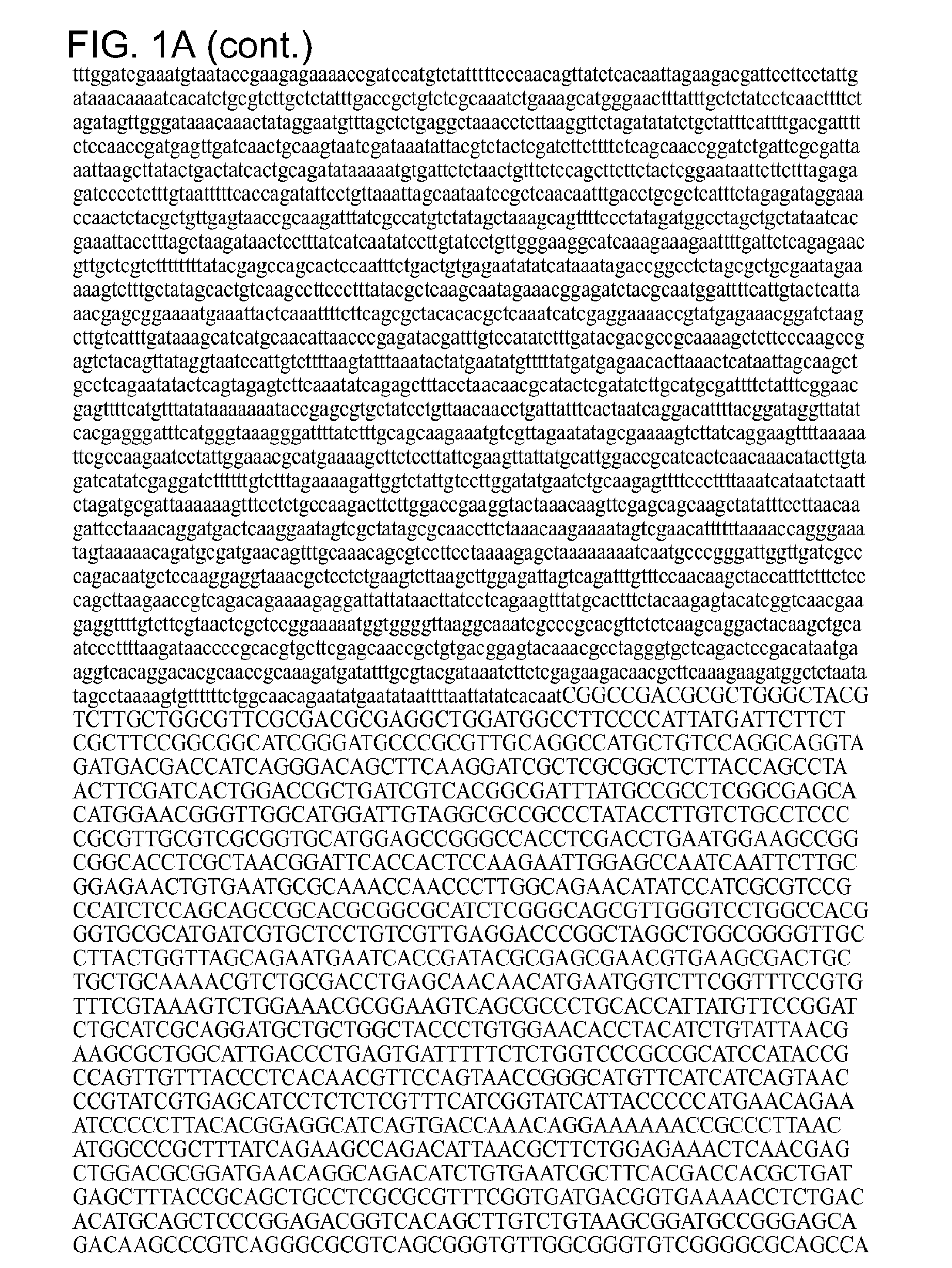



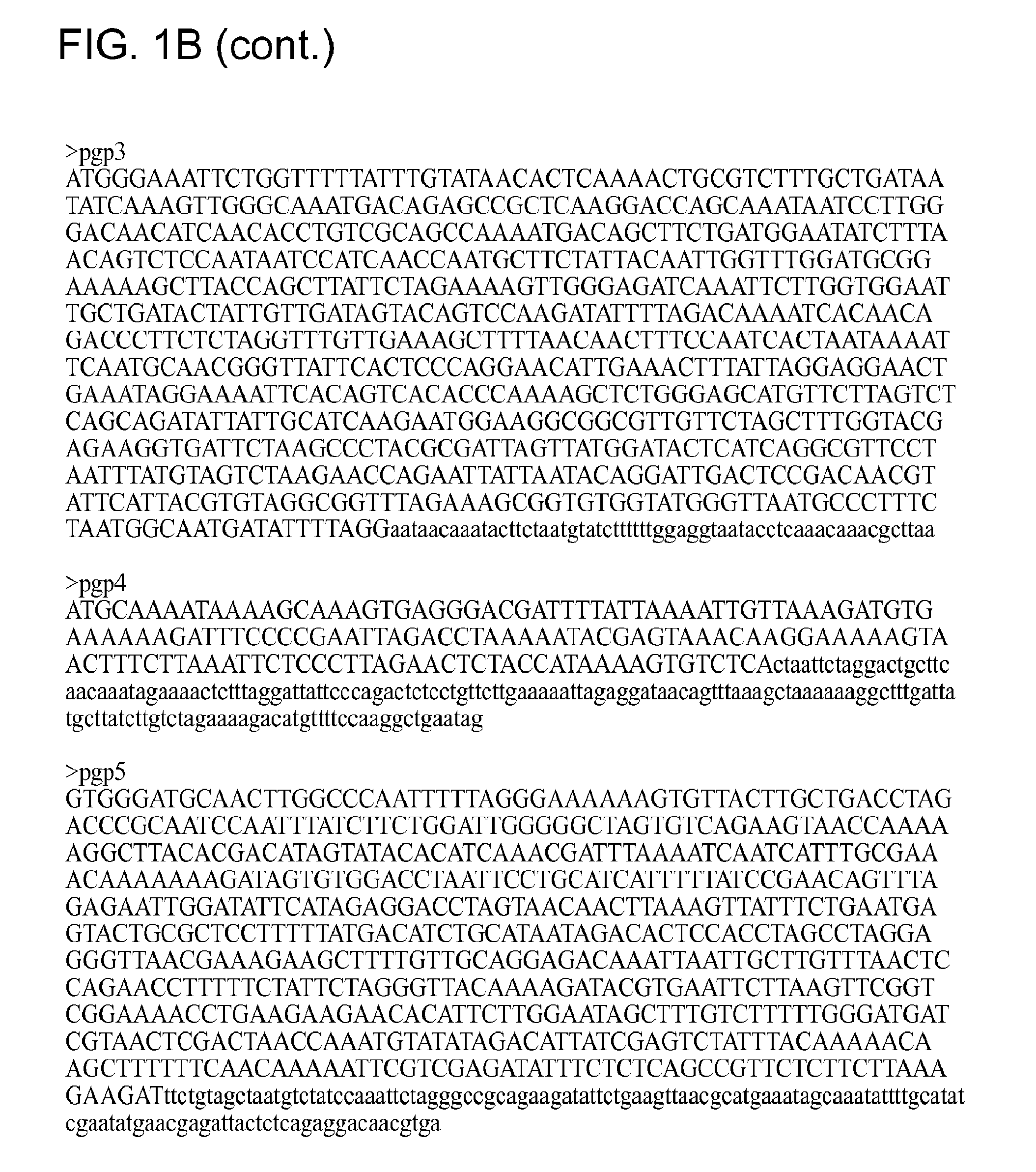






View All Diagrams
| United States Patent | 10,258,682 |
| Caldwell | April 16, 2019 |
Attenuated chlamydia vaccine
Abstract
The invention provides vectors, attenuated pathogens, compositions, methods, and kits for use in preventing or treating infection by an infectious pathogen, especially Chlamydia trachomatis. The vectors comprise the plasmid encoded ppg genes from Chlamydia, ppg1, ppg2, ppg3, ppg5, ppg6, ppg7 and/or ppg8, but lack ppg4, a regulator of virulence associated genes. The application also provides attenuated pathogens, especially chlamydia, which are cured of their plasmid and have additional mutations to improve the attenuation, especially mutations in the CT135 gene or in the tryptophan operon (trp promoter, trpA, or trpB). Uses of said nucleic acids and attenuated pathogens for inducing or modulating an immune response in a subject, especially for prevention or treatment of infections, are proposed.
| Inventors: | Caldwell; Harlan D. (Hamilton, MT) | ||||||||||
|---|---|---|---|---|---|---|---|---|---|---|---|
| Applicant: |
|
||||||||||
| Assignee: | The United States of America, as
represented by the Secretary, Department of Health & Human
Services (Washington, DC) |
||||||||||
| Family ID: | 50033831 | ||||||||||
| Appl. No.: | 14/761,520 | ||||||||||
| Filed: | January 16, 2014 | ||||||||||
| PCT Filed: | January 16, 2014 | ||||||||||
| PCT No.: | PCT/US2014/011799 | ||||||||||
| 371(c)(1),(2),(4) Date: | July 16, 2015 | ||||||||||
| PCT Pub. No.: | WO2014/113541 | ||||||||||
| PCT Pub. Date: | July 24, 2014 |
Prior Publication Data
| Document Identifier | Publication Date | |
|---|---|---|
| US 20160015798 A1 | Jan 21, 2016 | |
Related U.S. Patent Documents
| Application Number | Filing Date | Patent Number | Issue Date | ||
|---|---|---|---|---|---|
| 61753320 | Jan 16, 2013 | ||||
| Current U.S. Class: | 1/1 |
| Current CPC Class: | A61K 39/118 (20130101); C12N 15/74 (20130101); C12N 1/36 (20130101); A61K 2039/522 (20130101); A61K 2039/53 (20130101) |
| Current International Class: | C12N 1/36 (20060101); C12N 15/74 (20060101); A61K 39/118 (20060101); A61K 39/00 (20060101) |
References Cited [Referenced By]
U.S. Patent Documents
| 6248329 | June 2001 | Chandrashekar |
| WO-95/28487 | Oct 1995 | WO | |||
| WO-00/34498 | Jun 2000 | WO | |||
| WO-2007/100577 | Sep 2007 | WO | |||
Other References
|
Feng et al (Infection and Immunity, 64(1):363-365, 1996). cited by examiner . The Dictionary of Immunology, Herbert et al eds, Academic Press, 1995; 3 pages. cited by examiner . L. Song et al: "Chlamydia trachomatis Plasmid-Encoded Pgp4 Is a Transcriptional Regulator of Virulence-Associated Genes", Infection and Immunity, vol. 81, No. 3, Jan. 14, 2013 (Jan. 14, 2013),-Mar. 1, 2013 (Mar. 1, 2013), pp. 636-644. cited by applicant . Pickett M A et al: "The plasmids of Chlamydia trachomatis and Chlamydophila pneumoniae (N16): accurate determination number and the paradoxical effect of plasmid-curing agents", Microbiology, Society for General Microbiology,Reading, GB, vol. 151, No. 3, Mar. 1, 2005 (Mar. 1, 2005), pp. 893-903. cited by applicant . Comanducci M et al: "Diversity of the Chlamydia trachomatis common plasmid in biovars with different pathogenicity", Plasmid, New York,NY,US, vol. 23, No. 2, Mar. 1, 1990 (Mar. 1, 1990), pp. 149-154. cited by applicant . Jennifer R. Carmichael et al: "Differences in infectivity and induction of infertility: a comparative study of Chlamydia trachomatis strains in the murine model", Microbes and Infection, vol. 15, No. 3, Dec. 31, 2012 (Dec. 31, 2012), pp. 219-229. cited by applicant . G. L. Sturdevant et al: "Frameshift Mutations in a Single Novel Virulence Factor Alter the In Vivo Pathogenicity of Chlamydia trachomatis for the Female Murine Genital Tract", Infection and Immunity, vol. 78, No. 9, Jun. 14, 2010 (Jun. 14, 2010),--Sep. 1, 2010 (Sep. 1, 2010), pp. 3660-3668. cited by applicant . Akers Johnny C et al: "Molecular mechanism of tryptophan-dependent transcriptional regulation in Chlamydia trachomatis", Journal of Bacteriology, American Society for Microbiology [Not]Etc., vol. 188, No. 12, Jun. 1, 2006 (Jun. 1, 2006), pp. 4236-4243. cited by applicant . S. Gong et al: "Characterization of Chlamydia trachomatis Plasmid-Encoded Open Reading Frames", Journal of Bacteriology, vol. 195, No. 17, Jun. 21, 2013 (Jun. 21, 2013),--Sep. 1, 2013 (Sep. 1, 2013), pp. 3819-3826. cited by applicant . Lihua Song et al: "Plasmid-mediated transformation tropism of chlamydial biovars", Pathogens and Disease, vol. 70, No. 2, Nov. 11, 2013 (Nov. 11, 2013), pp. 189-193. cited by applicant . L. Kari et al: "A live-attenuated chlamydial vaccine protects against trachoma in nonhuman primates", The Journal of Infectious Diseases, vol. 204, No. 2, Oct. 24, 2011 (Oct. 24, 2011), pp. 268-2223. cited by applicant . Olivares-Zavaleta N et al: "Immunization with the attenuated plasmidless Chlamydia trachomatis L2(25667R) strain provides partial protection in a murine model of female genitourinary tract infection", Vaccine, Elsevier Ltd, GB, vol. 28, No. 6, Feb. 10, 2010 (Feb. 10, 2010), pp. 1454-1462. cited by applicant . Albrecht, M. et al., Nucleic Acids Res. 38:868-877 (2010). cited by applicant . Caldwell, H. D. et al., J. Clin. Invest.11:1757-69 (2003). cited by applicant . Caldwell, H.D. et al., J Immunol 115:963-968 (1975). cited by applicant . Carlson et. al., Infect. Immun. 76:2273-2283 (2008). cited by applicant . Chattoraj, D.K., Mol. Microbiol. 37:467-476 (2000). cited by applicant . Gerdes, K. et al., Mol. Microbiol. 37:455-466 (2000). cited by applicant . Kakutani, R. et al., Glycobiology 22:146-159 (2012). cited by applicant . Kari et. al., J. Exp. Med., 208:2217-2223 (2011). cited by applicant . Matsumoto, A. et al., J Clin Microbiol 36:3013-3019 (1998). cited by applicant . Morrison and Caldwell, Infect. Immun. 70:2741-2751 (2002). cited by applicant . Mycobacteria tuberculosis glucans (Geurtsen, J. et al., J. Immunol. 183:5221-5231 (2009). cited by applicant . O'Connell et. al., J. Immunol. 179:4027-4037 (2007). cited by applicant . Ricci, S. et al., Gene 154:93-98 (1995). cited by applicant . Ricci, S. et al., Mol. Gen. Genet. 237:318-326 (1993). cited by applicant . Schachter, J. et al., Br Med Bull 39:151-154 (1983). cited by applicant . Schachter, Rev. Infect. Dis.7:713-716 (1985). cited by applicant . Seth-Smith, H.M. et al., BMC Genomics 10:239 (2009). cited by applicant . Stibitz, S., Methods Enzymol. 235:458-65 (1994). cited by applicant . Sturdevant, G. et al., Infect. Immun.78:3660-8 (2010). cited by applicant . Tam, J.E. et al., Plasmid 27(3):231-236 (1992). cited by applicant . Thomas, N.S. et al., Microbiology 143:1847-1854 (1997). cited by applicant . Wang et al., PLoS Pathog. 7:e1002258 (2011). cited by applicant. |
Primary Examiner: Duffy; Patricia
Attorney, Agent or Firm: Locke Lord LLP DiCeglie, Jr.; Nicholas J. Smith; Andrew W.
Government Interests
STATEMENT OF RIGHTS TO INVENTIONS MADE UNDER FEDERALLY SPONSORED RESEARCH
Research supporting this application was carried out by the Intramural Research Program of the National Institute of Allergy and Infectious Diseases, National Institutes of Health. The Government has certain rights in this invention.
Parent Case Text
RELATED APPLICATIONS
This application is a national stage application filed under 35 U.S.C. .sctn. 371 of International Application PCT/US2014/011799 (published Jul. 24, 2014 as WO 2014/113541) having an International filing date of Jan. 16, 2014 and which claims priority to U.S. Provisional Application No. 61/753,320, filed Jan. 16, 2013, the entire contents each of which are incorporated in their entireties.
Claims
What is claimed is:
1. A nucleic acid vector that (i) comprises pgp1, pgp2, pgp4, pgp5, pgp6, pgp7 and pgp8 and (ii) comprises a deletion mutant of pgp3 or does not comprise pgp3.
2. The nucleic acid vector of claim 1, wherein pgpl encodes a polypeptide having the sequence SEQ ID NO: 1 or a sequence having at least 80% sequence identity thereto.
3. The nucleic acid vector of claim 1, wherein pgp2 encodes a polypeptide having the sequence SEQ ID NO: 2 or a sequence having at least 80% sequence identity thereto.
4. The isolated nucleic acid of claim 1, wherein pgp4 encodes a polypeptide having the sequence SEQ ID NO: 4 or a sequence having at least 80% sequence identity thereto.
5. The isolated nucleic acid of claim 1, wherein pgp5 encodes a polypeptide having the sequence SEQ ID NO: 5 or 14, or a sequence having at least 80% sequence identity thereto.
6. The isolated nucleic acid of claim 1, wherein pgp6 encodes a polypeptide having the sequence SEQ ID NO: 6 or a sequence having at least 80% sequence identity thereto.
7. The isolated nucleic acid of claim 1, wherein pgp7 encodes a polypeptide having the sequence SEQ ID NO: 7 or a sequence having at least 80% sequence identity thereto.
8. The isolated nucleic acid of claim 1, wherein pgp8 encodes a polypeptide having the sequence SEQ ID NO: 8 or a sequence having at least 80% sequence identity thereto.
9. The nucleic acid vector of claim 1, wherein the vector further comprises a gene encoding an antigen from chlamydia or non-chlamydia mucosal infectious pathogen.
10. The nucleic acid vector of claim 9, wherein the antigen is major outer membrane protein (MOMP) or fragments thereof, a polymorphic membrane proteins (PMP) or fragments thereof, or a High Temperature Requirement protein A (HtrA) or fragments thereof.
11. A pathogen lacking a naturally-occurring virulence plasmid and comprising the nucleic acid vector of claim 1, wherein the pathogen is chlamydia.
12. The pathogen of claim 11, wherein the chlamydia is a Chlamydia trachomatis (C. trachomatis) A, B, Ba, C, D, E, F, G, H, I, J, K, L1, L2, L3 serovariant.
13. The pathogen of claim 11, wherein the chlamydia comprises a chromosomal mutation that reduces the virulence of the chlamydia strain.
14. The pathogen of claim 13, wherein the chromosomal mutation is a mutation in the CT135 gene, a mutation in the CT166 gene, a mutation in the trp operon, a mutation in the trpA gene, or a mutation in the trpB gene, or a combination thereof.
15. A nucleic acid vector that (i) comprises pgp1, pgp2, pgp3, pgp5, pgp6, pgp7 and pgp8 and (ii) comprises a deletion mutant of pgp4 or does not comprise pgp4.
16. The nucleic acid vector of claim 15, wherein pgp1 encodes SEQ ID NO: 1 or a sequence having at least 80% sequence identity thereto, pgp2 encodes SEQ ID NO: 2 or a sequence having at least 80% sequence identity thereto, pgp3 encodes SEQ ID NO: 3 or a sequence having at least 80% sequence identity thereto, pgp5 encodes SEQ ID NOs: 5 or 14 or a sequence having at least 80% sequence identity thereto, pgp6 encodes SEQ ID NO: 6 or a sequence having at least 80% sequence identity thereto, pgp7 encodes SEQ ID NOs: 7 or 70 or a sequence having at least 80% sequence identity thereto, and pgp8 encodes SEQ ID NO 8 or a sequence having at least 80% sequence identity thereto.
17. The nucleic acid vector of claim 15, wherein the vector further comprises a gene encoding an antigen from chlamydia or non-chlamydia mucosal infectious pathogen.
18. The nucleic acid vector of claim 17, wherein the antigen is major outer membrane protein (MOMP) or fragments thereof, a polymorphic membrane proteins (PMP) or fragments thereof, or a High Temperature Requirement protein A (HtrA) or fragments thereof.
19. A pathogen lacking a naturally-occurring virulence plasmid and comprising the nucleic acid vector of claim 15, wherein the pathogen is chlamydia.
20. The pathogen of claim 19, wherein the chlamydia is a Chlamydia trachomatis (C. trachomatis) A, B, Ba, C, D, E, F, G, H, I, J, K, L1, L2, L3 serovariant.
21. The pathogen of claim 19, wherein the chlamydia comprises a chromosomal mutation that reduces the virulence of the chlamydia strain.
22. The pathogen of claim 19, wherein the chromosomal mutation is a mutation in the CT135 gene, a mutation in the CT166 gene, a mutation in the trp operon, a mutation in the trpA gene, or a mutation in the trpB gene, or a combination thereof.
23. A nucleic acid vector that (i) comprises pgp1, pgp2, pgp5, pgp6, pgp7 and pgp8, (ii) comprises a deletion mutant of pgp3 or does not comprise pgp3, and (iii) comprises a deletion mutant of pgp4 or does not comprise pgp4.
24. The nucleic acid vector of claim 23, wherein pgp1 encodes SEQ ID NO: 1 or a sequence having at least 80% sequence identity thereto, pgp2 encodes SEQ ID NO: 2 or a sequence having at least 80% sequence identity thereto, pgp5 encodes SEQ ID NOs: 5 or 14 or a sequence having at least 80% sequence identity thereto, pgp6 encodes SEQ ID NO: 6 or a sequence having at least 80% sequence identity thereto, pgp7 encodes SEQ ID NOs: 7 or 70 or a sequence having at least 80% sequence identity thereto, and pgp8 encodes SEQ ID NO: 8 or a sequence having at least 80% sequence identity thereto.
25. The nucleic acid vector of claim 24, wherein the vector further comprises a gene encoding an antigen from chlamydia or non-chlamydia infectious pathogen.
26. The nucleic acid vector of claim 25, wherein the antigen is major outer membrane protein (MOMP) or fragments thereof, a polymorphic membrane proteins (PMP) or fragments thereof, or a High Temperature Requirement protein A (HtrA) or fragments thereof.
27. A pathogen lacking a naturally-occurring virulence plasmid and comprising the nucleic acid vector of claim 23, wherein the pathogen is chlamydia.
28. The pathogen of claim 27, wherein the chlamydia is a Chlamydia trachomatis (C. trachomatis) A, B, Ba, C, D, E, F, G, H, I, J, K, L1, L2, L3 serovariant.
29. The pathogen of claim 27, wherein the chlamydia comprises a chromosomal mutation that reduces the virulence of the chlamydia strain.
30. The pathogen of claim 29, wherein the chromosomal mutation is a mutation in the CT135 gene, a mutation in the CT166 gene, a mutation in the trp operon, a mutation in the trpA gene, or a mutation in the trpB gene, or a combination thereof.
Description
SEQUENCE LISTING
The instant application contains a Sequence Listing which has been submitted electronically in ASCII format and is hereby incorporated by reference in its entirety. Said ASCII copy is named 90341WO(47992)_SL.txt and is 843,776 bytes in size.
BACKGROUND OF THE INVENTION
Chlamydia trachomatis is an obligate intracellular human pathogen with a unique biphasic developmental growth cycle. It's the etiological agent of trachoma, the world's leading cause of preventable blindness and the most common cause of bacterial sexually transmitted disease. C. trachomatis isolates maintain a highly conserved plasmid of approximately 7.5 kb with copy numbers ranging from 4 to 10 copies per cell. Naturally occurring plasmidless clinical isolates are rare, implicating its importance in chlamydial pathogenesis. Understanding the plasmid's role in chlamydial pathogenesis at a molecular level is an important objective for the future control of chlamydial infections.
Plasmid-deficient C. trachomatis strains and the murine pathogen C. muridarum have been studied in both non-human primate and murine infection models. A common theme of these investigations is that in vivo infection with plasmid-deficient organisms are either asymptomatic or exhibit significantly reduced pathology; providing evidence that the plasmid plays an essential role in chlamydial pathogenesis. The molecular basis of plasmid-mediated virulence is poorly understood but is linked to enhanced pro-inflammatory cytokine stimulation by engagement of Toll-like receptors (TLR) in murine models. Notably, in a macaque model of trachoma, ocular infection with plasmid-deficient organisms generates no clinical pathology but induces strong protective immunity against challenge with fully virulent plasmid bearing organisms; findings that support the use of plasmid-deficient organisms as novel live-attenuated chlamydial vaccines.
The chlamydial plasmid encodes both noncoding RNAs and eight ORFs of unknown function. All eight ORFs, designated pgp1-8, have been shown to be expressed in infected cells. Pgp1 was tentatively identified as a helicase based on homology with E. coli DnaB. Pgp3 is secreted into the host cell cytosol and has been implicated as a potential TLR4 agonist. Moreover, the plasmid functions as a transcriptional regulator of uncharacterized chromosomal genes that are virulence factors important to chlamydial pathogenicity.
The understanding of chlamydial pathogenesis at the molecular level has been hindered in the past by the lack of genetic tools. Very recently, chlamydial forward and reverse genetics systems, and chlamydial transformation, have been described. However, there have been no reports using these tools to characterize chlamydial genes of unknown function. Accordingly, there is a need to identify the molecular basis of chlamydial pathogenesis in order to develop novel methods and agents for preventing and treating chlamydia infection.
SUMMARY OF THE INVENTION
As described below, the present invention features novel vectors suitable for use in delivering immunogens to a subject. The vectors are virulence attenuated and can be used as a vaccine to confer protection against infectious pathogens (e.g., mucosal pathogens such as Chlamydia). The vectors can also be used in combination with attenuated pathogenic agents. The introduction of the vector into the attenuated pathogenic agent can improve the stability and replicative capacity of the attenuated pathogen. The invention also features novel plasmid cured chlamydia strains. The invention further features compositions containing the vectors, transformed pathogen, and/or cured chlamydia strains, as well as methods for using the vectors, transformed pathogen, and/or cured chlamydia strains to treat and/or prevent infection by a pathogenic agent (e.g., chlamydia infection).
In aspects, the invention provides isolated nucleic acids comprising a chlamydia plasmid lacking the pgp4 gene. The pgp4 deletion can be a partial deletion (e.g., 10%, 20%, 30%, 40%, 50%, 60%, 70%, 80%, 90%, 95%, 96%, 97%, 98%, 99%, or any percentage therebetween that results in production of a nonfunctional Pgp4) or a complete deletion of the pgp4 gene.
In embodiments, the isolated nucleic acid comprising pgp1, pgp2, pgp3, pgp5, pgp6, pgp7, or pgp8, wherein the nucleic acid lacks pgp4. In related embodiments, the nucleic acid comprises pgp1, pgp2, pgp6, and pgp8. In some embodiments, the nucleic acid comprises pgp1, pgp2, pgp3, pgp5, pgp6, pgp7, and pgp8.
In embodiments, the nucleic acid is (or is part of) an expression vector.
The nucleic and amino acid sequences of pgp1-8 genes are well known in the art. For example, the pgp1 gene can encode a polypeptide having at least 80%, 85%, 90%, 95%, or 99% to SEQ ID NO: 1, 10, 19, 28, 37, 46, 55, 64, 73, 82, 91, 100, 109, 118, 127, 135, 144, 153, 162, 171, 180, 189, 198, 207, 216, 225, or 234 (i.e., any of the Pgp1 sequences disclosed herein). In embodiments, the pgp2 gene encodes a polypeptide having at least 80%, 85%, 90%, 95%, or 99% to SEQ ID NO: 2, 11, 20, 29, 38, 47, 56, 65, 74, 83, 92, 101, 110, 119, 128, 136, 145, 154, 163, 172, 181, 190, 199, 208, 217, 226, or 235 (i.e., any of the Pgp2 sequences disclosed herein). In embodiments, the pgp3 gene encodes a polypeptide having at least 80%, 85%, 90%, 95%, or 99% to SEQ ID NO: 3, 12, 21, 30, 39, 48, 57, 66, 75, 84, 93, 102, 111, 120, 129, 137, 146, 155, 164, 173, 182, 191, 200, 209, 218, 227, or 236 (i.e., any of the Pgp3 sequences disclosed herein). In embodiments, the pgp4 gene encodes a polypeptide having at least 80%, 85%, 90%, 95%, or 99% to SEQ ID NO: 4, 13, 22, 31, 40, 49, 58, 67, 76, 85, 94, 103, 112, 121, 130, 138, 147, 156, 165, 174, 183, 192, 201, 210, 219, 228, or 237 (i.e., any of the Pgp4 sequences disclosed herein). In embodiments, the pgp5 gene encodes a polypeptide having at least 80%, 85%, 90%, 95%, or 99% to SEQ ID NO: 5, 14, 23, 32, 41, 50, 59, 68, 77, 86, 95, 104, 113, 122, 131, 139, 148, 157, 166, 175, 184, 193, 202, 211, 220, 229, or 238 (i.e., any of the Pgp5 sequences disclosed herein). In embodiments, the pgp6 gene encodes a polypeptide having at least 80%, 85%, 90%, 95%, or 99% to SEQ ID NO: 6, 15, 24, 33, 42, 51, 60, 69, 78, 87, 96, 105, 114, 123, 132, 140, 149, 158, 167, 176, 185, 194, 203, 212, 221, 230, or 239 (i.e., any of the Pgp6 sequences disclosed herein). In embodiments, the pgp7 gene encodes a polypeptide having at least 80%, 85%, 90%, 95%, or 99% to SEQ ID NO: 7, 16, 25, 34, 43, 52, 61, 70, 79, 88, 97, 106, 115, 124, 141, 150, 159, 168, 177, 186, 195, 204, 213, 222, 231, or 240 (i.e., any of the Pgp7 sequences disclosed herein). In embodiments, the pgp8 gene encodes a polypeptide having at least 80%, 85%, 90%, 95%, or 99% to SEQ ID NO: 8, 17, 26, 35, 44, 53, 62, 71, 80, 89, 98, 107, 116, 125, 133, 142, 151, 160, 169, 178, 187, 196, 205, 214, 223, 232, or 241 (i.e., any of the Pgp8 sequences disclosed herein).
In embodiments, the nucleic acid (e.g., the pgp1, pgp2, pgp3, pgp4, pgp5, pgp6, pgp7, and/or pgp8) is derived from J03321, NC_010286, NC_010285, NC_012625, NC_012626, NC_012627, NC_012630, NC_012631, HE603210, HE603212, HE603213, HE603218, HE603227, HE603228, HE603230, HE603232, HE603234, HE603235, HE603236, HE603238, HE603209, CP000052, CP002402, NC_012629, CP002053, and NC_010029.
In aspects of the invention, the nucleic acid further encodes an antigen from an infectious pathogen. In embodiments, the infectious pathogen is a mucosal pathogen. In embodiments, the infectious pathogen is chlamydia, human immunodeficiency virus, herpes simplex virus, Neisseria gonorrhoeae, Treponema pallidum, Ureaplasma urealyticum, Haemophilus vaginalis, or Mycoplasma genitalium.
In some embodiments, the infectious pathogen is chlamydia. In related embodiments, the chlamydia is a Chlamydia trachomatis (C. trachomatis) A, B, Ba, C, D, E, F, G, H, I, J, K, L1, L2, L3 serovariant. In some related embodiments, the chlamydia is a C. trachomatis D, E, F, G, H, I, J, and K serovariant.
In some embodiments, the antigen is a major outer membrane protein (MOMP) or fragments thereof, a polymorphic membrane proteins (PMP) or fragments thereof, or a High Temperature Requirement protein A (HtrA) or fragments thereof.
In embodiments, the nucleic acid further encodes an adjuvant. Adjuvants suitable for use in the invention are well-known in the art. Nonlimiting examples include cytokines or interferons.
In aspects, the invention provides an attenuated pathogen comprising any of the nucleic acids disclosed herein. In embodiments, the pathogen is chlamydia. In related embodiments, the chlamydia is a Chlamydia trachomatis (C. trachomatis) A, B, Ba, C, D, E, F, G, H, I, J, K, L1, L2, L3 serovariant. In some related embodiments, the chlamydia is a C. trachomatis D, E, F, G, H, I, J, and K serovariant. In embodiments, the chlamydia is a plasmid deficient chlamydia strain.
In embodiments, the chlamydia comprises a mutation that reduces the virulence of the chlamydia strain. In some embodiments, the mutation is a mutation in the CT135 gene (e.g., a mutation that results in a nonfunctional CT135 protein, e.g., a frameshift mutation at nucleotide 152686). In some embodiments, the mutation is a mutation in the trp operon. In related embodiments, the mutation results in a nonfunctional tryptophan (trp) synthase (e.g., a mutation in the promoter region of the trp operon, a mutation in the trpA gene, and/or a mutation in the trpB gene). For example, the mutation can be a deletion at nucleotides 408-410 in the trpA gene, a single-base deletion at nucleotide 528 in the trpA gene (e.g., ocular serovars), a missense mutation at nucleotide 530 and/or nucleotide 532 in the trpA gene, a mutation that results in TrpA amino acid polymorphisms CQ, YQ, and YE, a deletion at nucleotide 531 in the trpA gene, a deletion at nucleotide 470 in the trpA gene, a two base pair addition at nucleotide 118 in the trpA gene, a 22 base pair deletion at nucleotides 11-21 in the trpB gene, a complete trpA deletion, or a complete trpB deletion.
In aspects, the invention provides a plasmid cured chlamydia comprising a mutation that reduces the virulence of the chlamydia strain. In embodiments, the chlamydia is a Chlamydia trachomatis (C. trachomatis) A, B, Ba, C, D, E, F, G, H, I, J, K, L1, L2, L3 serovariant. In some embodiments, the chlamydia is a C. trachomatis D, E, F, G, H, I, J, and K serovariant.
In embodiments, the mutation further reduces the virulence of the chlamydia strain as compared to the plasmid cured chlamydia strain without the mutation. In some embodiments, the mutation is a mutation in the CT135 gene (e.g., a mutation that results in a nonfunctional CT135 protein, e.g., a frameshift mutation at nucleotide 152686). In some embodiments, the mutation is a mutation in the trp operon. In related embodiments, the mutation results in a nonfunctional tryptophan (trp) synthase (e.g., a mutation in the promoter region of the trp operon, a mutation in the trpA gene, and/or a mutation in the trpB gene). For example, the mutation can be a deletion at nucleotides 408-410 in the trpA gene, a single-base deletion at nucleotide 528 in the trpA gene (e.g., ocular serovars), a missense mutation at nucleotide 530 and/or nucleotide 532 in the trpA ge, a mutation that results in TrpA amino acid polymorphisms CQ, YQ, and YE, a deletion at nucleotide 531 in the trpA gene, a deletion at nucleotide 470 in the trpA gene, a two base pair addition at nucleotide 118 in the trpA gene, a 22 base pair deletion at nucleotides 11-21 in the trpB gene, a complete trpA deletion, or a complete trpB deletion.
In aspects, the invention provides compositions comprising any of the nucleic acids, attenuated pathogens, or plasmid cured chlamydias with a further attenuating mutation described herein. In embodiments, the composition further comprises a pharmaceutically acceptable excipient, carrier, or diluent.
In embodiments, the composition is an immunogenic composition. In related embodiments, the immunogenic composition is capable of eliciting or modulating an immune response. In some embodiments, the immune response is a cell mediated response. In some embodiments, the immune response is a humoral response (e.g., a mucosal antibody response). In some embodiments, the immunogenic composition is a vaccine.
In aspects, the invention provides methods for inducing an immune response in a subject. In embodiments, the methods involve administering to the subject an effective amount of any of the nucleic acids, attenuated pathogens, plasmid cured chlamydias with a further attenuating mutation, or compositions described herein.
In aspects, the invention provides methods for modulating an immune response in a subject. In embodiments, the methods involve administering to the subject an effective amount of any of the nucleic acids, attenuated pathogens, plasmid cured chlamydias with a further attenuating mutation, or compositions described herein.
In embodiments, the above methods prevent or treat an infection (e.g., a viral infection, a bacterial infection, a fungal infection, or a parasitic infection). In some embodiments, the infection is an infection by a mucosal pathogen. In related embodiments, the infection is an infection by chlamydia, human immunodeficiency virus, herpes simplex virus, Neisseria gonorrhoeae, Treponema pallidum, Ureaplasma urealyticum, Haemophilus vaginalis, or Mycoplasma genitalium.
In some embodiments, the infection is a chlamydia infection. In related embodiments, the chlamydia is a Chlamydia trachomatis (C. trachomatis) A, B, Ba, C, D, E, F, G, H, I, J, K, L1, L2, L3 serovariant. In some related embodiments, the chlamydia is a C. trachomatis D, E, F, G, H, I, J, and K serovariant.
In aspects, the invention provides methods for treating or preventing an infection in a subject. In embodiments, the methods involve administering to the subject an effective amount of any of the nucleic acids, attenuated pathogens, plasmid cured chlamydias with a further attenuating mutation, or compositions described herein. In embodiments, the methods involve generating an immune response in the subject, wherein the immune response prevents or treats the infection. In embodiments, the immune response is a cell mediated response, a humoral response, and/or a mucosal antibody response.
In aspects, the invention provides methods for immunizing a subject against infection by a pathogen. In embodiments, the methods involve administering to the subject an effective amount of any of the nucleic acids, attenuated pathogens, plasmid cured chlamydias with a further attenuating mutation, or compositions described herein.
In embodiments, the infection is a viral infection, a bacterial infection, a fungal infection, or a parasitic infection. In some embodiments, the infection is an infection by a mucosal pathogen. In some related embodiments, the infection is an infection by chlamydia, human immunodeficiency virus, herpes simplex virus, Neisseria gonorrhoeae, Treponema pallidum, Ureaplasma urealyticum, Haemophilus vaginalis, or Mycoplasma genitalium.
In embodiments, the infection is a chlamydia infection. In related embodiments, the chlamydia is a Chlamydia trachomatis (C. trachomatis) A, B, Ba, C, D, E, F, G, H, I, J, K, L1, L2, L3 serovariant. In some related embodiments, the chlamydia is a C. trachomatis D, E, F, G, H, I, J, and K serovariant.
In any of the above aspects and embodiments, the subject can be a mammal (e.g., human).
In any of the above aspects and embodiments, the nucleic acids, attenuated pathogens, plasmid cured chlamydias with a further attenuating mutation, or compositions are administered systemically or locally. In embodiments, the nucleic acids, attenuated pathogens, plasmid cured chlamydias with a further attenuating mutation, or compositions are administered by intramuscular injection, intradermal injection, intravenous injection, subcutaneous injection, or topical administration.
In any of the above aspects and embodiments, the nucleic acids, attenuated pathogens, plasmid cured chlamydias with a further attenuating mutation, or compositions are administered in a prime boost regimen.
In aspects, the invention provides kits containing the nucleic acids, attenuated pathogens, plasmid cured chlamydias with a further attenuating mutation, or compositions described herein.
In aspects, the invention provides kits for the treatment or prevention of infection by a pathogen. In embodiments, the kits contain the nucleic acids, attenuated pathogens, plasmid cured chlamydias with a further attenuating mutation, or compositions described herein. In embodiments, the kit further contains instructions for using the kit in at least one of the methods described herein. In embodiments, the pathogen is chlamydia, human immunodeficiency virus, herpes simplex virus, Neisseria gonorrhoeae, Treponema pallidum, Ureaplasma urealyticum, Haemophilus vaginalis, or Mycoplasma genitalium. In some embodiments, the pathogen is chlamydia. In related embodiments, the chlamydia is a Chlamydia trachomatis (C. trachomatis) A, B, Ba, C, D, E, F, G, H, I, J, K, L1, L2, L3 serovariant. In some related embodiments, the chlamydia is a C. trachomatis D, E, F, G, H, I, J, and K serovariant.
In aspects, the invention provides host cells containing at least one of the nucleic acids described herein. The cell can be in vitro, in vivo, or ex vivo. In embodiments, wherein the host cell is a bacterial, mammalian, insect, or yeast cell.
Additional objects and advantages of the invention will be set forth in part in the description which follows, and in part will be obvious from the description, or may be learned by practice of the invention. The objects and advantages of the invention will be realized and attained by means of the elements and combinations disclosed herein, including those pointed out in the appended claims. It is to be understood that both the foregoing general description and the following detailed description are exemplary and explanatory only and are not restrictive of the invention as claimed. The accompanying drawings, which are incorporated herein and constitute a part of this specification, illustrate several embodiments of the invention and, together with the description, serve to explain the principles of the invention.
DEFINITIONS
To facilitate an understanding of the present invention, a number of terms and phrases are defined below.
As used herein, the singular forms "a", "an", and "the" include plural forms unless the context clearly dictates otherwise. Thus, for example, reference to "an antigen" includes reference to more than one antigen.
Unless specifically stated or obvious from context, as used herein, the term "or" is understood to be inclusive.
As used herein, the terms "comprises," "comprising," "containing," "having" and the like can have the meaning ascribed to them in U.S. Patent law and can mean "includes," "including," and the like; "consisting essentially of" or "consists essentially" likewise has the meaning ascribed in U.S. Patent law and the term is open-ended, allowing for the presence of more than that which is recited so long as basic or novel characteristics of that which is recited is not changed by the presence of more than that which is recited, but excludes prior art embodiments.
As used herein, "adjuvant" is understood as a pharmacological or immunological agent that modifies the effect of other agents (e.g., immunogenic composition) while having few if any direct effects when given by itself. Adjuvants are frequently administered with vaccines to enhance the recipient's immune response to a supplied antigen while keeping the injected foreign material at a minimum. Adjuvants may be essentially inert when administered alone.
"Administering" is defined herein as a means of providing an agent or a composition containing the agent to a subject in a manner that results in the agent being inside the subject's body. Such an administration can be by any route including, without limitation, oral, transdermal (e.g., vagina, rectum, oral mucosa), by injection (e.g., subcutaneous, intravenous, parenterally, intraperitoneally, intrathecal), or by inhalation (e.g., oral or nasal). Pharmaceutical preparations are, of course, given by forms suitable for each administration route.
By "agent" is meant any small molecule chemical compound, antibody, nucleic acid molecule, or polypeptide, or fragments thereof.
By "ameliorate" is meant decrease, suppress, attenuate, diminish, arrest, or stabilize the development or progression of a disease or a symptom thereof.
By "analog" is meant a molecule that is not identical, but has analogous functional or structural features. For example, a polypeptide analog retains the biological activity of a corresponding naturally-occurring polypeptide, while having certain biochemical modifications that enhance the analog's function relative to a naturally occurring polypeptide. Such biochemical modifications could increase the analog's protease resistance, membrane permeability, or half-life, without altering, for example, ligand binding. An analog may include an unnatural amino acid.
As used herein, "attenuated" is understood as an agent/strain (or a composition containing the agent/strain) created by reducing the virulence of a pathogen, but still keeping it viable (or "live"). Attenuation takes a living agent and alters it so that it becomes harmless or less virulent. These vaccines contrast to those produced by "killing/inactivating" the pathogen. As used herein, an attenuated bacteria can be propagated in at least one cell type, either in a host organism or in culture.
As used herein, "changed as compared to a control" sample or subject is understood as having a level of the analytic or diagnostic or therapeutic indicator to be detected at a level that is statistically different than a sample from a normal, untreated, or control sample. Control samples include, for example, cells in culture, one or more laboratory test animals, or one or more human subjects. Methods to select and test control samples are within the ability of those in the art. An analytic substance can be a naturally occurring substance that is characteristically expressed or produced by the cell or organism (e.g., antibodies, viral particles, and the like) or a substance produced by a reporter construct (e.g, .beta.-galactosidase, luciferase, and the like). Depending on the method used for detection the amount and measurement of the change can vary. Determination of statistical significance is within the ability of those skilled in the art.
As used herein, "chlamydia bacterium serovariant" and "chlamydia" refer to a genus of bacteria, including serovariants of Chlamydia trachomatis such as A, B, Ba, C, D, E, F, G, H, I, J, K, L1, L2, L3. Chlamydia infection and chlamydial infection refer to the infection of a subject by a chlamydia bacteria. Strains from any of these organisms may be obtained worldwide from any biologicals depository. Examplary strains of chlamydia that may be obtained from the ATCC include, but are not limited to, A HAR-13 (VR-571B), B (n/a), Ba (n/a), C TW-3 (VR-1477), D UW-3/Cx (VR-885), E BOUR (VR-348B), F IC-Cal-3 (VR-346), G UW-57/Cx (VR-878), H UW-43/Cx (VR-879), I UW-12/Ur (VR-880), J UW-36/Cx (VR-886), K UW-31/Cx (VR-887), LGV Type 1 (VR-901B), LGV Type 2 (VR-577), LGV Type 3 (VR-903).
As used herein, "chlamydia related disorder or condition" refers to chlamydia infections and related symptoms and conditions and to sexually transmitted diseases and trachoma.
As used herein, a "coding region" is a portion of nucleic acid which consists of codons translated into amino acids. Although a "stop codon" (TAG, TGA, or TAA) is not translated into an amino acid, it may be considered to be part of a coding region, if present, but any flanking sequences, for example promoters, ribosome binding sites, transcriptional terminators, introns, 5' and 3' non-translated regions, and the like, are not part of a coding region. Any vector may contain a single coding region, or may comprise two or more coding regions, e.g., a vector of the present invention may encode one or more polyproteins, which are post- or co-translationally separated into the final proteins via proteolytic cleavage. In addition, a vector of the invention may encode heterologous coding regions. Heterologous coding regions include without limitation specialized elements or motifs, such as a secretory signal peptide or a heterologous functional domain. Heterologous coding regions can also include the coding sequence of a target antigen.
"Co-administration" as used herein is understood as administration of one or more agents to a subject such that the agents are present and active in the subject at the same time. Co-administration does not require a preparation of an admixture of the agents or simultaneous administration of the agents. The order or sequence of administering the different agents may vary and is not confined to any particular sequence. Co-administering may also refer to two or more agents administered via the same or different routes of delivery.
The phrase "combination therapy" embraces the administration of one agent (e.g., a bacterial vector, a chlamydia vaccine, an immunogen from a pathogenic agent, and the like) and a second therapeutic agent as part of a specific treatment regimen intended to provide a beneficial effect from the co-action of these therapeutic agents. The beneficial effect of the combination includes, but is not limited to, pharmacokinetic or pharmacodynamic co-action resulting from the combination of therapeutic agents. Administration of these therapeutic agents in combination typically is carried out over a defined time period (usually minutes, hours, days, or weeks depending upon the combination selected). "Combination therapy" generally is not intended to encompass the administration of two or more of these therapeutic agents as part of separate monotherapy regimens that incidentally and arbitrarily result in the combinations of the present invention. "Combination therapy" is intended to embrace administration of these therapeutic agents in a sequential manner, that is, wherein each therapeutic agent is administered at a different time, as well as administration of these therapeutic agents, or at least two of the therapeutic agents, in a substantially simultaneous manner. Sequential or substantially simultaneous administration of each therapeutic agent can be effected by any appropriate route including, but not limited to, oral routes, intravenous routes, intramuscular routes, and direct absorption through mucous membrane tissues (e.g., nasal, mouth, vaginal, and rectal). The therapeutic agents can be administered by the same route or by different routes. For example, one component of a particular combination may be administered by intravenous injection while the other component(s) of the combination may be administered orally. The components may be administered in any therapeutically effective sequence.
The phrase "combination" embraces groups of compounds or non-drug therapies useful as part of a combination therapy.
"Complementary" as used herein in relation to nucleic acids is understood by its usual meaning of two nucleic acid strands (either individual strands or portions of a single strand folded back on itself) in which each A pairs with a T (in DNA) or a U (in RNA); and each C pairs with a G. As used herein, nucleic acid sequences can be complementary over a specific number of contiguous nucleotides (e.g., nucleotides touching or connected throughout in an unbroken sequence).
"Contacting a cell" is understood herein as providing an agent to a cell, e.g., a cell to be treated in culture, ex vivo, or in an animal, such that the agent can interact with the cell (e.g., cell to be treated), potentially be taken up by the cell, and have an effect on the cell. The agent (e.g., an infectious pathogen) can be delivered to the cell directly (e.g., by addition of the agent to culture medium or by injection into the cell or tissue of interest), or by delivery to the organism by a topical or parenteral route of administration for delivery to the cell by vascular, lymphatic, or other means.
By "control" is meant a standard or reference condition.
As used herein, "detecting", "detection", and the like are understood that an assay performed to determine one or more characteristics of a sample, e.g. identifying the presence, absence or amount of the analyte to be detected. For example, detection can include identification of a specific analyte in a sample, a product from a reporter construct, heterologous expression construct (e.g., bacterial vector), or infectious pathogen (e.g., attenuated bacterial vaccine) in a sample, or an activity of an agent in a sample. Detection can include the determination of nucleic acid or protein expression, or dye uptake in a cell or tissue, e.g., as determined by PCR, immunoassay, microscopy, and the like. Detection can include determination of the presence of an antibody using routine immunological methods, e.g., ELISA, pathogen challenge, and the like. The amount of analyte or activity detected in the sample can be none or below the level of detection of the assay or method.
By "disease" is meant any condition or disorder that damages or interferes with the normal function of a cell, tissue, or organ (e.g., damage or interference caused by an infectious pathogen).
The term "disrupt" is meant to refer to compromise the barrier function of the epithelium. In certain examples, physical methods can be used to disrupt an epithelial surface. In other examples, chemical agents can be used to disrupt an epithelial surface, for example ionic or non-ionic detergents.
The terms "effective amount," or "effective dose" refers to that amount of an agent to produce the intended pharmacological, therapeutic, or preventive result. The pharmacologically effective amount that results in the prevention of onset of disease, either in an individual or in the frequency of disease in a population, as a result of contact with a bacteria or pathogen that causes disease. More than one dose may be required to provide an effective dose. It is understood that an effective dose in one population may or may not be sufficient in all populations. Thus, an agent that is "effective against" a disease or condition indicates that administration in a clinically appropriate manner results in a beneficial effect for at least a statistically significant fraction of subjects, such as a prevention of disease onset, improvement of symptoms, a cure, a reduction in disease signs or symptoms, extension of life, improvement in quality of life, or other effect generally recognized as positive by medical doctors familiar with treating the particular type of disease or condition.
By "enhances" or "increases" is meant a positive alteration of at least about 10%, 25%, 50%, 75%, or 100% relative to a reference.
The term "epithelial surface" is meant to refer to a continuous sheet of one or more cellular layers that lines a vertebrate body compartment. An epithelial surface can be the skin. Epithelial surfaces according to certain embodiments of the invention can be cervicovaginal, oral, nasal, penile, anal, epidermal and respiratory surfaces.
By "fragment" is meant a portion of a polypeptide or nucleic acid molecule. This portion contains at least 10%, 20%, 30%, 40%, 50%, 60%, 70%, 80%, or 90% of the entire length of the reference nucleic acid molecule or polypeptide. A fragment may contain 10, 20, 30, 40, 50, 60, 70, 80, 90, or 100, 200, 300, 400, 500, 600, 700, 800, 900, or 1000 nucleotides or amino acids.
As used herein, a "host cell" is any cell in which an infectious agent (e.g., chlamydia) can be propagated.
"Hybridization" means hydrogen bonding, which may be Watson-Crick, Hoogsteen, or reversed Hoogsteen hydrogen bonding between complementary nucleobases. For example, adenine and thymine are complementary nucleobases that pair through the formation of hydrogen bonds.
The terms "identical" or "percent identity" in the context of two or more nucleic acids or polypeptides, refer to two or more sequences or subsequences that are the same or have a specified percentage of nucleotides or amino acid residues that are the same, when compared and aligned (introducing gaps, if necessary) for maximum correspondence, not considering any conservative amino acid substitutions as part of the sequence identity. The percent identity may be measured using sequence comparison software or algorithms or by visual inspection. Various algorithms and software are known in the art that may be used to obtain alignments of amino acid or nucleotide sequences. One such non-limiting example of a sequence alignment algorithm is the algorithm described in Karlin et al., Proc. Natl. Acad. Sci., 87:2264-2268 (1990), as modified in Karlin et al., Proc. Natl. Acad. Sci., 90:5873-5877 (1993), and incorporated into the NBLAST and XBLAST programs (Altschul et al., Nucleic Acids Res., 25:3389-3402 (1991)). In certain embodiments, Gapped BLAST may be used as described in Altschul et al., Nucleic Acids Res. 25:3389-3402 (1997). BLAST-2, WU-BLAST-2 (Altschul et al., Methods in Enzymology, 266:460-480 (1996)), ALIGN, ALIGN-2 (Genentech, South San Francisco, Calif.) or Megalign (DNASTAR) are additional publicly available software programs that can be used to align sequences. In certain embodiments, the percent identity between two nucleotide sequences is determined using the GAP program in GCG software (e.g., using a NWSgapdna.CMP matrix and a gap weight of 40, 50, 60, 70, or 90 and a length weight of 1, 2, 3, 4, 5, or 6). In certain embodiments, the GAP program in the GCG software package, which incorporates the algorithm of Needleman and Wunsch (J. Mol. Biol. (48):444-453 (1970)) may be used to determine the percent identity between two amino acid sequences (e.g., using either a Blossum 62 matrix or a PAM250 matrix, and a gap weight of 16, 14, 12, 10, 8, 6, or 4 and a length weight of 1, 2, 3, 4, 5). In certain embodiments, the percent identity between nucleotide or amino acid sequences is determined using the algorithm of Myers and Miller (CABIOS, 4:11-17 (1989)). For example, the percent identity may be determined using the ALIGN program (version 2.0) and using a PAM120 with residue table, a gap length penalty of 12 and a gap penalty of 4. Appropriate parameters for maximal alignment by particular alignment software can be determined by one skilled in the art. In certain embodiments, the default parameters of the alignment software are used. In certain embodiments, the percentage identity "X" of a first amino acid sequence to a second sequence amino acid is calculated as 100.times.(Y/Z), where Y is the number of amino acid residues scored as identical matches in the alignment of the first and second sequences (as aligned by visual inspection or a particular sequence alignment program) and Z is the total number of residues in the second sequence. If the length of a first sequence is longer than the second sequence, the percent identity of the first sequence to the second sequence will be longer than the percent identity of the second sequence to the first sequence.
As a non-limiting example, whether any particular polynucleotide has a certain percentage sequence identity (e.g., is at least 80% identical, at least 85% identical, at least 90% identical, and in some embodiments, at least 95%, 96%, 97%, 98%, or 99% identical) to a reference sequence can, in certain embodiments, be determined using the Bestfit program (Wisconsin Sequence Analysis Package, Version 8 for Unix, Genetics Computer Group, University Research Park, 575 Science Drive, Madison, Wis. 53711). Bestfit uses the local homology algorithm of Smith and Waterman, Advances in Applied Mathematics 2: 482 489 (1981), to find the best segment of homology between two sequences. When using Bestfit or any other sequence alignment program to determine whether a particular sequence is, for instance, 95% identical to a reference sequence according to the present invention, the parameters are set such that the percentage of identity is calculated over the full length of the reference nucleotide sequence and that gaps in homology of up to 5% of the total number of nucleotides in the reference sequence are allowed.
In some embodiments, two nucleic acids or polypeptides of the invention are substantially identical, meaning they have at least 70%, at least 75%, at least 80%, at least 85%, at least 90%, and in some embodiments at least 95%, 96%, 97%, 98%, 99% nucleotide or amino acid residue identity, when compared and aligned for maximum correspondence, as measured using a sequence comparison algorithm or by visual inspection. Identity can exist over a region of the sequences that is at least about 5, at least about 10, about 20, about 40-60 residues in length or any integral value therebetween, or over a longer region than 60-80 residues, at least about 90-100 residues, or the sequences are substantially identical over the full length of the sequences being compared.
As used herein, an "immunoassay" is a detection method based on the specific binding of at least one antibody to an antigen, e.g., ELISA, RIA, western blot, and the like.
As used herein "immunogen", "immunogenic", and the like refer to substances that can promote an immune response, e.g., an antibody based or cell mediated immune response, in at least one organism. In embodiments, the immunogen is a polypeptide or polypeptide fragment from an infectious pathogen (e.g., chlamydia).
By "immunogenic composition" is meant a composition comprising a molecule capable of inducing or modulating an immune response in a subject. Such an immune response may be a prophylactic or therapeutic immune response. In embodiments, the immunogenic composition is a vaccine.
As used herein "inducing immunity" is meant to refer to any immune response generated against an antigen. In embodiments, immunity is mediated by antibodies against an infectious pathogen, which is exhibited by a vertebrate (e.g., a human), that prevents or ameliorates an infection or reduces at least one symptom thereof. The vectors of the invention can stimulate the production of antibodies that, for example, neutralize infectious agents, block infectious agents from entering cells, block replication of infectious agents, and/or protect host cells from infection and destruction. The term can also refer to an immune response that is mediated by T-lymphocytes and/or other white blood cells against an infectious agent, exhibited by a vertebrate (e.g., a human), that prevents or ameliorates an infection, for example chlamydial infection, or reduces at least one symptom thereof.
As used herein, "infectious construct" indicates a pathogen, a pathogenic construct, a pathogenic chimera, a nucleic acid derived from a pathogen or any portion thereof, which may be used to infect a cell.
"Isolated" when used in reference to a cell means the cell is in culture (e.g., not in an animal), either cell culture or organ culture, of a primary cell or cell line. Cells can be isolated from a normal animal, a transgenic animal, an animal having spontaneously occurring genetic changes, an animal having a genetic and/or induced disease or condition, and the like. An isolated bacteria or bacterial vector is a bacteria that is removed from the cells, typically in culture, in which the bacteria was produced.
By "isolated polynucleotide" or "isolated nucleotide" is meant a nucleic acid (e.g., a DNA) that is free of the genes which, in the naturally-occurring genome of the organism from which the nucleic acid molecule of the invention is derived, flank the gene. The term therefore includes, for example, a recombinant DNA that is incorporated into a vector; into an autonomously replicating plasmid or virus; or into the genomic DNA of a prokaryote or eukaryote; or that exists as a separate molecule (for example, a cDNA or a genomic or cDNA fragment produced by PCR or restriction endonuclease digestion) independent of other sequences. In addition, the term includes an RNA molecule that is transcribed from a DNA molecule, as well as a recombinant DNA that is part of a hybrid gene encoding additional polypeptide sequence.
By an "isolated polypeptide" is meant a polypeptide of the invention that has been separated from components that naturally accompany it. Typically, the polypeptide is isolated when it is at least 60%, by weight, free from the proteins and naturally-occurring organic molecules with which it is naturally associated. In embodiments, the preparation is at least 75%, at least 90%, or at least 99%, by weight, a polypeptide of the invention. An isolated polypeptide of the invention may be obtained, for example, by extraction from a natural source, by expression of a recombinant nucleic acid encoding such a polypeptide; or by chemically synthesizing the protein. Purity can be measured by any appropriate method, for example, column chromatography, polyacrylamide gel electrophoresis, HPLC analysis, and the like.
As used herein, a "mutation" is a change in the amino acid or nucleic acid sequence as compared to the wild type sequence. In a nucleic acid coding sequence, the mutation results in a change of the amino acid sequence encoded by the nucleic acid. As used herein, a mutation in a coding sequence preferably does not result in a frame shift in the coding sequence. A mutation can be an insertion, deletion, or change of one or more (e.g., 1, 2, 3, 4, 5, 6, 7, 8, 9, 10, 20, 30, 40, 50 or more, and any number therebetween) amino acids or nucleotides as compared to a wild type sequence.
A "conservative amino acid substitution" is one in which one amino acid residue is replaced with another amino acid residue having a similar side chain Families of amino acid residues having similar side chains have been defined in the art, including basic side chains (e.g., lysine, arginine, histidine), acidic side chains (e.g., aspartic acid, glutamic acid), uncharged polar side chains (e.g., glycine, asparagine, glutamine, serine, threonine, tyrosine, cysteine), nonpolar side chains (e.g., alanine, valine, leucine, isoleucine, proline, phenylalanine, methionine, tryptophan), beta-branched side chains (e.g., threonine, valine, isoleucine) and aromatic side chains (e.g., tyrosine, phenylalanine, tryptophan, histidine). For example, substitution of a phenylalanine for a tyrosine is a conservative substitution. Preferably, conservative substitutions in the sequences of the polypeptides and antibodies of the invention do not abrogate the binding of the polypeptide or antibody containing the amino acid sequence, to the antigen(s). Methods of identifying nucleotide and amino acid conservative substitutions which do not eliminate antigen binding are well-known in the art (see, e.g., Brummell et al., Biochem. 32: 1180-1187 (1993); Kobayashi et al. Protein Eng. 12(10):879-884 (1999); and Burks et al. Proc. Natl. Acad. Sci. USA 94:412-417 (1997)).
In aspects of the invention, the chlamydial vectors of the present invention include mutations, for example to attenuate the bacteria. In embodiments, the chlamydia vector includes a deletion of pgp4. In related embodiments, the chlamydia vector comprises at least one additional deletion of a non-essential ORF (e.g., pgp3, -5, and -7). In embodiments, the chlamydial vector is expressed in an attenuated bacterial strain. Such strains are well known in the art, and include those described in Caldwell, H. D. et al., J. Clin. Invest. 11:1757-69 (2003) and Sturdevant, G. et al., Infect. Immun. 78:3660-8 (2010), the contents of each of these references are hereby incorporated by reference in their entirety. Attenuating bacterial strains have at least one mutation that reduces the virulence of the bacteria. For example, the mutation can be a mutation in the CT135 gene (e.g., a mutation at nucleotide 152686 that causes an insertion of a T that results in a frame shift). The mutation can also be a mutation in the trp operon (e.g., mutations in the promoter region, the trpA gene, and/or the trpB gene that results in the production of a nonfunctional tryptophan (trp) synthase. Nonlimiting examples of such mutations include a deletion at nucleotides 408-410 in the trpA gene (e.g., ocular serovars), a single-base deletion at nucleotide 528 in the trpA gene (e.g., ocular serovars), a missense mutation at nucleotide 530 and/or nucleotide 532 in the trpA gene (e.g., genital serovars), a mutation(s) that results in TrpA amino acid polymorphisms CQ, YQ, and YE (e.g., genital serovars), a deletion at nucleotide 531 in the trpA gene (e.g., ocular serovars), a deletion at nucleotide 470 in the trpA gene (e.g., ocular serovars), a two base pair addition at nucleotide 118 in the trpA gene (e.g., ocular serovars), a 22 base pair deletion at nucleotides 11-21 in the trpB gene (e.g., ocular serovars), a complete trp (trpA and/or trpB) deleted region (e.g., ocular serovars), or a CT135 polymorphism (i.e., a mutation in the CT135 locus) that reduces the virulence of the chlamydia strain.
As used herein, "nucleic acid" as in a nucleic acid for delivery to a cell is understood by its usual meaning in the art as a polynucleotide or oligonucleotide which refers to a string of at least two base-sugar-phosphate combinations. Nucleotides are the monomeric units of nucleic acid polymers. The term includes deoxyribonucleic acid (DNA) and ribonucleic acid (RNA) in the form of an oligonucleotide messenger RNA, anti-sense, plasmid DNA, parts of a plasmid DNA, genetic material derived from an infectious pathogen (e.g., bacteria), and the like. Polynucleotides include nucleic acids of at least two monomers. Anti-sense polynucleotides are nucleic acids that interfere with the function of DNA or RNA. An siRNA or an shRNA is a double stranded RNA that inhibits or disrupts activity or translation, for example by promoting degradation of modifying splicing or processing of the cellular nucleic acid, e.g., mRNA, microRNA, and the like, to which it is targeted. As used herein, siRNA and shRNA include any double stranded RNA molecule that can modulate the stability, translation, or splicing of an RNA to which at least one strand of the double stranded nucleic acid hybridizes. RNAs are well known in the art, see, e.g., patent publications WO02/44321; WO/2003/099298; US 20050277610; US 20050244858; and U.S. Pat. Nos. 7,297,786, 7,560,438 and 7,056,704, all of which are incorporated herein by reference. Nucleic acid as used herein is understood to include non-natural nucleotides (not occurring in nature), for example: a derivative of natural nucleotides such as phosphothionates or peptide nucleic acids (such as those described in the patents and applications cited immediately above). A nucleic acid can be delivered to a cell in order to produce a cellular change that is therapeutic. The delivery of a nucleic acid or other genetic material for therapeutic purposes is gene therapy. The nucleic acid may express a protein or polypeptide, e.g., a protein that is missing or non-functional in the cell or subject. The nucleic acid may be single or double stranded, may be sense or anti-sense, and can be delivered to a cell as naked DNA, in combination with agents to promote nucleic acid uptake into a cell (e.g., transfection reagents), in the context of a bacterial vector, and the like. The nucleic acid can be targeted to a nucleic acid that is endogenous to the cell (mRNA or microRNA), or a heterologous nucleic acid (e.g., nucleic acid from a pathogen, such as a viral gene). Delivery of a nucleic acid means to transfer a nucleic acid from outside a subject to within the outer cell membrane of a cell in the subject.
The term "nucleotide encoding a polypeptide" or "polynucleotide encoding a polypeptide" encompasses a polynucleotide which includes only coding sequences for the polypeptide as well as a polynucleotide which includes additional coding and/or non-coding sequences. The polynucleotides of the invention can be in the form of RNA or in the form of DNA. DNA includes cDNA, genomic DNA, and synthetic DNA; and can be double-stranded or single-stranded, and if single stranded can be the coding strand or non-coding (anti-sense) strand.
"Obtaining" is understood herein as manufacturing, purchasing, synthesizing, isolating, purifying, or otherwise coming into possession of.
As used herein, "operably linked" is understood as joined, preferably by a covalent linkage, e.g., joining an amino-terminus of one peptide to a carboxyl terminus of another peptide, e.g., expressing a signal sequence to target the protein to a specific cellular compartment; joining a promoter sequence with coding or non-coding nucleic acid sequence, in a manner that the two or more components that are operably linked either retain their original activity, or gain an activity upon joining such that the activity of the operably linked portions can be assayed, colocalized, and/or have detectable activity, e.g., transcription or translation inhibition, enzymatic activity, protein expression activity, nucleic acid levels, and the like.
As used herein, "ORF" or "open reading frame" is understood to be a series of nucleotide triplets (codons) coding for amino acids without any termination codons. These sequences are usually translatable into a peptide.
The term "patient" or "subject" refers to an animal which is the object of treatment, observation, or experiment. By way of example only, a subject includes, but is not limited to, a mammal, including, but not limited to, a human or a non-human mammal, such as a non-human primate, bovine, equine, canine, ovine, or feline.
By "Pgp1" and the like is meant a protein or fragment thereof having at least 85%, 90%, 95%, 99%, or more identity to the amino acid sequence corresponding to NCBI Accession No. YP_001654079 (corresponding to protein sequence of GENE ID NO: 5857573) (SEQ ID NO:1):
TABLE-US-00001 1 mktrseienr mqdieyallg kalifedste yilrqlanye fkcshhknif ivfkylkdng 61 lpitvdsawe ellrrrikdm dksylglmlh dalsndklrs vshtvflddl svcsaeenls 121 nfifrsfney nenplrrspf lllerikgrl dsaiaktfsi rsargrsiyd ifsqseigvl 181 arikkrratf senqnsffda fptgykdidd kgvilakgnf viiaarpsig ktalaidmai 241 nlavtqqrry gflslemsag qiveriianl tgisgeklqr gdlskeelfr veeagetvre 301 shfyicsdsq yklnlianqi rllrkedrvd vifidylqli nssvgenrqn eiadisrtlr 361 glaselnipi vclsqlsrkv edrankvpml sdlrdsgqie qdadvilfin rkesssncei 421 tvgknrhgsv fssvlhfdpk iskfsaikkv w
By "pgp1" and the like is meant a polynucleotide encoding a Pgp1 polypeptide or fragment thereof.
By "Pgp2" and the like is meant a protein or fragment thereof having at least 85%, 90%, 95%, 99%, or more identity to the amino acid sequence corresponding to NCBI Accession No. YP_001654078 (corresponding to protein sequence of GENE ID NO: 5857572) (SEQ ID NO:2):
TABLE-US-00002 1 mvnysnchfi kspihlenqk fgrrpgqsik ispklaqngm vevigldfls shyhalaaiq 61 rlltatnykg ntkgvvlsre snsfqfegwi prirftktef leaygvkryk tsrnkyefsg 121 keaetaleal yhlghqpfli vatrtrwtng tqivdryqtl spiiriyegw egltdeenid 181 idltpfnsps trkhkgfvve pcpilvdqie syfvikpanv yqeikmrfpn askyaytfid 241 wvitaaakkr rkltkdnswp enlflnvnvk slayilrmnr yictrnwkki elaidkciei 301 aiqlgwlsrr kriefldssk lskkeilyln kerfeeitkk skeqmeqleq esin
By "pgp2" and the like is meant a polynucleotide encoding a Pgp2 polypeptide or fragment thereof.
By "Pgp3" and the like is meant a protein or fragment thereof having at least 85%, 90%, 95%, 99%, or more identity to the amino acid sequence corresponding to NCBI Accession No. YP_001654077 (corresponding to protein sequence of GENE ID NO: 5857580) (SEQ ID NO:3):
TABLE-US-00003 1 mgnsgfylyn tqncvfadni kvgqmteplk dqqiilgtts tpvaakmtas dgisltvsnn 61 pstnasitig ldaekayqli leklgdqilg giadtivdst vqdildkitt dpslgllkaf 121 nnfpitnkiq cnglftprni etllggteig kftvtpkssg smflvsadii asrmeggvvl 181 alvregdskp yaisygyssg vpnlcslrtr iintgltptt yslrvggles gvvwvnalsn 241 gndilgitnt snvsflevip qtna
By "pgp3" and the like is meant a polynucleotide encoding a Pgp3 polypeptide or fragment thereof.
By "Pgp4" and the like is meant a protein or fragment thereof having at least 85%, 90%, 95%, 99%, or more identity to the amino acid sequence corresponding to NCBI Accession No. YP_001654076 (corresponding to protein sequence of GENE ID NO: 5857575) (SEQ ID NO:4):
TABLE-US-00004 1 mqnkskvrdd fikivkdvkk dfpeldlkir vnkekvtfln splelyhksv slilgllqqi 61 enslglfpds pvlekledns lklkkaliml ilsrkdmfsk ae
By "pgp4" and the like is meant a polynucleotide encoding a Pgp4 polypeptide or fragment thereof.
By "Pgp5" and the like is meant a protein or fragment thereof having at least 85%, 90%, 95%, 99%, or more identity to the amino acid sequence corresponding to NCBI Accession No. YP_001654083 (corresponding to protein sequence of GENE ID NO: 5857574) (SEQ ID NO:5):
TABLE-US-00005 1 gltkeafvag dkliacltpe pfsilglqki reflssvgkp eeehilgial sfwddrnstn 61 qmyidiiesi yknklfstki rrdislsrsl lkedsvanvy pnsraaedil kltheianil 121 hieyerdysq rtt
By "pgp5" and the like is meant a polynucleotide encoding a Pgp5 polypeptide or fragment thereof.
By "Pgp6" and the like is meant a protein or fragment thereof having at least 85%, 90%, 95%, 99%, or more identity to the amino acid sequence corresponding to NCBI Accession No. YP_001654082 (corresponding to protein sequence of GENE ID NO: 5857578) (SEQ ID NO:6):
TABLE-US-00006 1 mnklkkeanv ffkknqtaas ldfkktlpsi elfsatlnse esqsldqlfl sesqnysdee 61 fyqedilavk lltgqiksiq kqhvlllgek iynarkilsk dhfssttfss wielvfrtks 121 saynalayye lfinlpnqtl qkefqsipyk sayilaarkg dlktkvdvig kvcgmsnssa 181 irvldqflps srnkdvreti dksdseknrq lsdflieilr imcsgvslss ynenllqqlf 241 elfkqks
By "pgp6" and the like is meant a polynucleotide encoding a Pgp6 polypeptide or fragment thereof.
By "Pgp7" and the like is meant a protein or fragment thereof having at least 85%, 90%, 95%, 99%, or more identity to the amino acid sequence corresponding to NCBI Accession No. YP_001654081 (corresponding to protein sequence of GENE ID NO:
5857579) (SEQ ID NO:7):
TABLE-US-00007 1 mgsmafhksr lfltfgdase iwlstlshlt rknyasginf lvsleildls etlikaisld 61 hseslfkiks ldvfngkvvs easkqaraac yisftkflyr ltkgyikpai plkdfgnttf 121 fkirdkikte siskqewtvf fealrivnyr dyligklivq girkldeils lrtddlffas 181 nqisfrikkr qnketkilit fpislmeelq kytcgrngry fvskigipvt tsqvahnfrl 241 aefysamkkk llleyfvgal
By "pgp7" and the like is meant a polynucleotide encoding a Pgp7 polypeptide or fragment thereof.
By "Pgp8" and the like is meant a protein or fragment thereof having at least 85%, 90%, 95%, 99%, or more identity to the amino acid sequence corresponding to NCBI Accession No. YP_001654080 (corresponding to protein sequence of GENE ID NO: 5857576) (SEQ ID NO:8):
TABLE-US-00008 1 mgkgilsiqq emsleyseks yqevlkirqe sywkrmksfs lfevimhwta slnkhtcrsy 61 rgsflsleki gllsldmnlq efsllnhnli ldaikkvssa ktswtegtkq vraasyislt 121 rflnrmtqgi vaiaqpskqe nsrtffktre ivktdamnsl qtasflkelk kinardwlia 181 qtmlqggkrs sevlsleisq icfqqatisf sqlknrqtek riiitypqkf mhflqeyigq 241 rrgfvfvtrs gkmvglrqia rtfsqaglqa aipfkitphv lratavteyk rlgcsdsdim 301 kvtghatakm ifaydkssre dnaskkmali
By "pgp8" and the like is meant a polynucleotide encoding a Pgp8 polypeptide or fragment thereof.
"Pharmaceutically acceptable" refers to approved or approvable by a regulatory agency of the Federal or a state government or listed in the U.S. Pharmacopeia or other generally recognized pharmacopeia for use in animals, including humans.
"Pharmaceutically acceptable excipient, carrier or diluent" refers to an excipient, carrier or diluent that can be administered to a subject, together with an agent, and which does not destroy the pharmacological activity thereof and is nontoxic when administered in doses sufficient to deliver a therapeutic amount of the agent.
As used herein, "plasmid" refers to a circular nucleic acid molecule capable of autonomous replication in a host cell.
As used herein, "plurality" is understood to mean more than one. For example, a plurality refers to at least two, three, four, five, or more.
A "polypeptide" or "peptide" as used herein is understood as two or more independently selected natural or non-natural amino acids joined by a covalent bond (e.g., a peptide bond). A peptide can include 2, 3, 4, 5, 6, 7, 8, 9, 10, 11, 12, 13, 14, 15, 16, 17, 18, 19, 20, or more natural or non-natural amino acids joined by peptide bonds. Polypeptides as described herein include full length proteins (e.g., fully processed proteins) as well as shorter amino acids sequences (e.g., fragments of naturally occurring proteins or synthetic polypeptide fragments).
As used herein, the terms "prevent," "preventing," "prevention," "prophylactic treatment," and the like, refer to reducing the probability of developing a disease or condition in a subject, who does not have, but is at risk of or susceptible to developing a disease or condition. For example, prevention can be understood as to limit, reduce the rate or degree of onset, or inhibit the development of at least one sign or symptom of a disease or condition particularly in a subject prone to developing the disease or disorder, e.g., due to geographic location, lack of clean water, immunosuppressed state, etc. A subject immunized with the attenuated bacterial vaccine of the invention will not develop the disease for at least 1 year, 2 years, 3 years, 4 years, 5 years, 6 years, 7 years, 8 years, 9 years, 10 years, or more after immunization. Prevention can require the administration of more than one dose of an agent or therapeutic. Prevention may occur in only a subset of individuals to whom the vaccine is administered who are subsequently exposed to the pathogen. There may be a delay from the time of administration until the vaccine is effective in preventing productive bacterial infection. Such considerations are well known to those of skill in the art.
As used herein, a "recombinant" bacteria is a non-naturally occurring bacteria that is generated using molecular biology techniques.
By "reduces" is meant a negative alteration of at least about 10%, 25%, 50%, 75%, or 100% relative to a reference.
By "reference" is meant a standard or control condition.
A "sample" as used herein refers to a biological material that is isolated from its environment (e.g., blood or tissue from an animal, cells, or conditioned media from tissue culture). In embodiments, the sample is suspected of containing, or known to contain an analyte, such as a bacteria, an antibody, or a product from a reporter construct. A sample can also be a partially purified fraction of a tissue or bodily fluid. A reference sample can be a "normal" sample, from a donor not having the disease or condition fluid, or from a normal tissue in a subject having the disease or condition, or an untreated subject (e.g., a subject not treated with the vaccine). A reference sample can also be taken at a "zero time point" prior to contacting the cell or subject with the agent or therapeutic intervention to be tested.
By "specifically binds" is meant recognition and binding to a target (e.g., polypeptide, cell, and the like), but which does not substantially recognize and bind other molecules in a sample, for example, a biological sample.
A subject "suffering from or suspected of suffering from" a specific disease, condition, or syndrome has a sufficient number of risk factors or presents with a sufficient number or combination of signs or symptoms of the disease, condition, or syndrome such that a competent individual would diagnose or suspect that the subject was suffering from the disease, condition, or syndrome. Methods for identification of subjects suffering from or suspected of suffering from pathogenic infections is within the ability of those in the art. Subjects suffering from, and suspected of suffering from, a specific disease, condition, or syndrome are not necessarily two distinct groups.
As used herein, "susceptible to" or "prone to" or "predisposed to" a specific disease or condition and the like refers to an individual who based on genetic, environmental, health, and/or other risk factors is more likely to develop a disease or condition than the general population. An increase in likelihood of developing a disease may be an increase of about 10%, 20%, 50%, 100%, 150%, 200%, or more.
The term "therapeutic effect" refers to some extent of relief of one or more of the symptoms of a disorder or its associated pathology. The term refers to both therapeutic treatment and prophylactic or preventative measures, wherein the object is to prevent or slow down (lessen) the targeted pathologic condition or disorder. Those in need of treatment include those already with the disorder as well as those prone to have the disorder or those in whom the disorder is to be prevented. A subject or mammal is successfully "treated" for an infection if, after receiving a therapeutic amount of an antibody according to the methods of the present invention, the patient shows observable and/or measurable reduction in or absence of one or more of the following: reduction in the number of infected cells or absence of the infected cells; reduction in the percent of total cells that are infected; relief to some extent of one or more of the symptoms associated with the specific infection (e.g., symptoms associated with influenza infection); reduced morbidity and mortality, and improvement in quality of life issues. The above parameters for assessing successful treatment and improvement in the disease are readily measurable by routine procedures familiar to a physician.
"Therapeutically effective amount," as used herein refers to an amount of an agent which is effective, upon single or multiple dose administration to a cell or subject, to confer a therapeutic effect in a subject. For example, a therapeutically effective amount will prolong the survivability of the subject with a disorder, reduce one or more signs or symptoms of the disorder, prevent or delay onset/progression of the disorder, and the like beyond that expected in the absence of such treatment. A physician or veterinarian having ordinary skill in the art can readily determine and prescribe the "therapeutically effective amount" (e.g., ED.sub.50) of an agent. For example, the physician or veterinarian could start doses of the compounds of the invention employed in a pharmaceutical composition at levels lower than that required in order to achieve the desired therapeutic effect and gradually increase the dosage until the desired effect is achieved.
As used herein, the terms "treat," "treating," "treatment," and the like refer to reducing or ameliorating a disorder and/or symptoms associated therewith. By "ameliorate" is meant decrease, suppress, attenuate, diminish, arrest, or stabilize the development or progression of a disease. It will be appreciated that, although not precluded, treating a disorder or condition does not require that the disorder, condition or symptoms associated therewith be completely eliminated.
As used herein, "vaccine" refers to a preparation of immunogenic material capable of stimulating an immune response, administered for the prevention, amelioration, or treatment of disease, such as an infectious disease. The immunogenic material may include, for example, attenuated or killed microorganisms (such as an attenuated or inactivated bacteria), or antigenic proteins, peptides or DNA derived from them. Vaccines may elicit both prophylactic (preventative) and therapeutic responses. Methods of administration vary according to the vaccine, but may include inoculation, ingestion, inhalation or other forms of administration. Inoculations can be delivered by any of a number of routes, including parenteral, such as intravenous, subcutaneous or intramuscular. Vaccines may be administered with an adjuvant to boost the immune response.
The term "vector" means a construct that is capable of delivering and expressing, one or more gene(s) or sequence(s) of interest in a host cell. Examples of vectors include, but are not limited to, bacterial vectors, viral vectors, naked DNA or RNA expression vectors, plasmids, cosmid or phage vectors, DNA or RNA expression vectors associated with cationic condensing agents, DNA or RNA expression vectors encapsulated in liposomes, and certain eukaryotic cells, such as producer cells.
The term "expression vector" is meant to refer to a vector, such as a plasmid or viral particle, which is capable of promoting expression as well as replication of a foreign or heterologous nucleic acid incorporated therein. In embodiments, the nucleic acid to be expressed is "operably linked" to a promoter and/or enhancer, and is subject to transcription regulatory control by the promoter and/or enhancer.
The term "vector priming" is meant to refer to the delivery of a gene encoding a vaccine antigen by way of an expression vector. In certain embodiments, it means that the vector-based gene delivery will be a first exposure to the immunogenic composition, followed by one or more subsequent "booster" dose or doses of immunogenic composition.
Unless specifically stated or obvious from context, as used herein, the term "about" is understood as within a range of normal tolerance in the art, for example within 2 standard deviations of the mean. About can be understood as within 10%, 9%, 8%, 7%, 6%, 5%, 4%, 3%, 2%, 1%, 0.5%, 0.1%, 0.05%, or 0.01% of the stated value. Unless otherwise clear from context, all numerical values provided herein are modified by the term about.
Ranges provided herein are understood to be shorthand for all of the values within the range. For example, a range of 1 to 50 is understood to include any number, combination of numbers, or sub-range from the group consisting 1, 2, 3, 4, 5, 6, 7, 8, 9, 10, 11, 12, 13, 14, 15, 16, 17, 18, 19, 20, 21, 22, 23, 24, 25, 26, 27, 28, 29, 30, 31, 32, 33, 34, 35, 36, 37, 38, 39, 40, 41, 42, 43, 44, 45, 46, 47, 48, 49, or 50.
Nucleic acids encoding the various polypeptide sequences can readily be determined by one of skill in the art, and any sequence encoding any of the polypeptide sequences of the invention falls within the scope of the invention.
The recitation of an embodiment for a variable or aspect herein includes that embodiment as any single embodiment or in combination with any other embodiments or portions thereof. For example, any compositions or methods provided herein can be combined with one or more of any of the other compositions and methods provided herein.
DESCRIPTION OF THE DRAWINGS
FIGS. 1A-1D show the construction of chlamydial shuttle vector and eight individual ORF knockout vectors. FIGS. 1A and 1B are plasmid maps. The circles represent the plasmid from C. trachomatis L2 (pgp7, ori, pgp6, pgp5, pgp4, pgp3, pgp2, pgp1, pgp8) and the vector pBR322 (tet', bla, ori, rap, tet). The coding sequences are shown below and the direction of transcription are represented by the arrows on the circle. Functional elements of pBRCT including .beta.-lactamase gene (bla), gene coding for the ROP protein (rop), origin of replication (ori), inactivated tetracycline resistance gene (tet'), and eight pL2 ORFs (pgp1-8) are as shown. FIG. 1A depicts the pBRCT vector, which harbors eight intact pL2 plasmid ORFs. FIG. 1B provides a schematic representation of deleted regions (white) of pBRCT in eight individual plasmid-ORF knockout vectors. FIG. 1C is an agarose electrophoresis of SalI digestion products of pBRCT and eight cleaned PCR products. The top band in each lane represents the expected size amplicon for the construction of each individual plasmid ORF knockout vector. FIG. 1D is an agarose gel of whole length PCR products of eight pL2 ORFs. The results show that each individual plasmid ORF knockout vector lacks one correct size amplicon at its corresponding position in agarose electrophoresis, in comparison to pBRCT having all expected size amplicons.
FIGS. 2A-2G are phase microscopy images of McCoy cell monolayers infected with L2, L2R and various stable transformants of L2R at an MOI of 0.3 after 40 h p.i. (magnification, .times.200). Arrows indicate mature inclusions. FIGS. 2A-2G show that the inclusions of L2R and L2Rp.DELTA.pgp4 mutants are morphologically distinct from those of L2, L2Rp+, L2Rp.DELTA.pgp3, L2Rp.DELTA.pgp5 and L2Rp.DELTA.pgp7. FIGS. 2A'-2G' show that the inclusions of L2R and L2Rp.DELTA.pgp4 mutants stain negative for glycogen.
FIGS. 3A and 3B show the results from microarray analyses identifying Pgp4 as a transcriptional regulator of chromosomal genes. FIG. 3A is a plot showing the results from principal-component analysis (PCA) of quantile normalized microarray data of strains L2, L2R, L2p+, L2Rp.DELTA.pgp4 and L2Rp.DELTA.pgp5 at 24 h p.i. Each colored circle represents all C. trachomatis data produced from a single chip, where grouping and separation of replicates and strains, respectively, are demonstrated [red, L2; blue, L2R; green, L2Rp+; purple, L2Rp.DELTA.pgp4; orange, L2Rp.DELTA.pgp5]. FIG. 3B is a hierarchical cluster analysis of microarray results. The results show a close association in gene expression between L2Rp.DELTA.pgp4 and L2R. 39 genes that passed the test criteria in at least one microarray comparison analysis were selected. Four pairwise comparisons were performed, L2R vs L2, L2Rp+vs L2, L2p.DELTA.pgp4 vs L2Rp+, and L2Rp.DELTA.pgp5 vs L2Rp+. A signal intensity of yellow color indicates equal intensity compared to the referenced intensity of L2, with red indicating a greater intensity and blue indicating a reduced intensity.
FIG. 4 are plots showing validation of the microarray data by quantitative RT-PCR. The results indicate that five chromosomal genes, including glgA, CTL0305, and CTL0397-CTL0399 significantly (p<0.01), were differentially expressed in L2R vs L2, and L2p.DELTA.pgp4 vs L2Rp+ comparisons. Transcript copy numbers derived from three replicates were normalized to lpdA mRNA.
FIGS. 5A-5I show the nucleic acid and amino acid sequences of J03321. FIG. 5A is the nucleic acid sequence of J03321. FIG. 5B is the amino acid sequence of Pgp1 for J03321. FIG. 5C is the amino acid sequence of Pgp2 for J03321. FIG. 5D is the amino acid sequence of Pgp3 for J03321. FIG. 5E is the amino acid sequence of Pgp4 for J03321. FIG. 5F is the amino acid sequence of Pgp5 for J03321. FIG. 5G is the amino acid sequence of Pgp6 for J03321. FIG. 5H is the amino acid sequence of Pgp7 for J03321. FIG. 5I is the amino acid sequence of Pgp8 for J03321.
FIGS. 6A-6I show the nucleic acid and amino acid sequences of NC_010286. FIG. 6A is the nucleic acid sequence of NC_010286. FIG. 6B is the amino acid sequence of Pgp1 for NC_010286. FIG. 6C is the amino acid sequence of Pgp2 for NC_010286. FIG. 6D is the amino acid sequence of Pgp3 for NC_010286. FIG. 6E is the amino acid sequence of Pgp4 for NC_010286. FIG. 6F is the amino acid sequence of Pgp5 for NC_010286. FIG. 6G is the amino acid sequence of Pgp6 for NC_010286. FIG. 6H is the amino acid sequence of Pgp7 for NC_010286. FIG. 6I is the amino acid sequence of Pgp8 for NC_010286.
FIGS. 7A-7I show the nucleic acid and amino acid sequences of NC_010285. FIG. 7A is the nucleic acid sequence of NC_010285. FIG. 7B is the amino acid sequence of Pgp1 for NC_010285. FIG. 7C is the amino acid sequence of Pgp2 for NC_010285. FIG. 7D is the amino acid sequence of Pgp3 for NC_010285. FIG. 7E is the amino acid sequence of Pgp4 for NC_010285. FIG. 7F is the amino acid sequence of Pgp5 for NC_010285. FIG. 7G is the amino acid sequence of Pgp6 for NC_010285. FIG. 7H is the amino acid sequence of Pgp7 for NC_010285. FIG. 7I is the amino acid sequence of Pgp8 for NC_010285.
FIGS. 8A-8I show the nucleic acid and amino acid sequences of NC_012625. FIG. 8A is the nucleic acid sequence of NC_012625. FIG. 8B is the amino acid sequence of Pgp1 for NC_012625. FIG. 8C is the amino acid sequence of Pgp2 for NC_012625. FIG. 8D is the amino acid sequence of Pgp3 for NC_012625. FIG. 8E is the amino acid sequence of Pgp4 for NC_012625. FIG. 8F is the amino acid sequence of Pgp5 for NC_012625. FIG. 8G is the amino acid sequence of Pgp6 for NC_012625. FIG. 8H is the amino acid sequence of Pgp7 for NC_012625. FIG. 8I is the amino acid sequence of Pgp8 for NC_012625.
FIGS. 9A-9I show the nucleic acid and amino acid sequences of NC_012626. FIG. 9A is the nucleic acid sequence of NC_012626. FIG. 9B is the amino acid sequence of Pgp1 for NC_012626. FIG. 9C is the amino acid sequence of Pgp2 for NC_012626. FIG. 9D is the amino acid sequence of Pgp3 for NC_012626. FIG. 9E is the amino acid sequence of Pgp4 for NC_012626. FIG. 9F is the amino acid sequence of Pgp5 for NC_012626. FIG. 9G is the amino acid sequence of Pgp6 for NC_012626. FIG. 9H is the amino acid sequence of Pgp7 for NC_012626. FIG. 9I is the amino acid sequence of Pgp8 for NC_012626.
FIGS. 10A-10I show the nucleic acid and amino acid sequences of NC_012627. FIG. 10A is the nucleic acid sequence of NC_012627. FIG. 10B is the amino acid sequence of Pgp1 for NC_012627. FIG. 10C is the amino acid sequence of Pgp2 for NC_012627. FIG. 10D is the amino acid sequence of Pgp3 for NC_012627. FIG. 10E is the amino acid sequence of Pgp4 for NC_012627. FIG. 10F is the amino acid sequence of Pgp5 for NC_012627. FIG. 10G is the amino acid sequence of Pgp6 for NC_012627. FIG. 10H is the amino acid sequence of Pgp7 for NC_012627. FIG. 10I is the amino acid sequence of Pgp8 for NC_012627.
FIGS. 11A-11I show the nucleic acid and amino acid sequences of NC_012630. FIG. 11A is the nucleic acid sequence of NC_012630. FIG. 11B is the amino acid sequence of Pgp1 for NC_012630. FIG. 11C is the amino acid sequence of Pgp2 for NC_012630. FIG. 11D is the amino acid sequence of Pgp3 for NC_012630. FIG. 11E is the amino acid sequence of Pgp4 for NC_012630. FIG. 11F is the amino acid sequence of Pgp5 for NC_012630. FIG. 11G is the amino acid sequence of Pgp6 for NC_012630. FIG. 11H is the amino acid sequence of Pgp7 for NC_012630. FIG. 10I is the amino acid sequence of Pgp8 for NC_012630.
FIGS. 12A-12I show the nucleic acid and amino acid sequences of NC_012631. FIG. 12A is the nucleic acid sequence of NC_012631. FIG. 12B is the amino acid sequence of Pgp1 for NC_012631. FIG. 12C is the amino acid sequence of Pgp2 for NC_012631. FIG. 12D is the amino acid sequence of Pgp3 for NC_012631. FIG. 12E is the amino acid sequence of Pgp4 for NC_012631. FIG. 12F is the amino acid sequence of Pgp5 for NC_012631. FIG. 12G is the amino acid sequence of Pgp6 for NC_012631. FIG. 12H is the amino acid sequence of Pgp7 for NC_012631. FIG. 12I is the amino acid sequence of Pgp8 for NC_012631.
FIGS. 13A-13I show the nucleic acid and amino acid sequences of HE603210. FIG. 13A is the nucleic acid sequence of HE603210. FIG. 13B is the amino acid sequence of Pgp1 for HE603210. FIG. 13C is the amino acid sequence of Pgp2 for HE603210. FIG. 13D is the amino acid sequence of Pgp3 for HE603210. FIG. 13E is the amino acid sequence of Pgp4 for HE603210. FIG. 13F is the amino acid sequence of Pgp5 for HE603210. FIG. 13G is the amino acid sequence of Pgp6 for HE603210. FIG. 13H is the amino acid sequence of Pgp7 for HE603210. FIG. 13I is the amino acid sequence of Pgp8 for HE603210.
FIGS. 14A-14I show the nucleic acid and amino acid sequences of HE603212. FIG. 14A is the nucleic acid sequence of HE603212. FIG. 14B is the amino acid sequence of Pgp1 for HE603212. FIG. 14C is the amino acid sequence of Pgp2 for HE603212. FIG. 14D is the amino acid sequence of Pgp3 for HE603212. FIG. 14E is the amino acid sequence of Pgp4 for HE603212. FIG. 14F is the amino acid sequence of Pgp5 for HE603212. FIG. 14G is the amino acid sequence of Pgp6 for HE603212. FIG. 14H is the amino acid sequence of Pgp7 for HE603212. FIG. 14I is the amino acid sequence of Pgp8 for HE603212.
FIGS. 15A-15I show the nucleic acid and amino acid sequences of HE603213. FIG. 15A is the nucleic acid sequence of HE603213. FIG. 15B is the amino acid sequence of Pgp1 for HE603213. FIG. 15C is the amino acid sequence of Pgp2 for HE603213. FIG. 15D is the amino acid sequence of Pgp3 for HE603213. FIG. 15E is the amino acid sequence of Pgp4 for HE603213. FIG. 15F is the amino acid sequence of Pgp5 for HE603213. FIG. 15G is the amino acid sequence of Pgp6 for HE603213. FIG. 15H is the amino acid sequence of Pgp7 for HE603213. FIG. 15I is the amino acid sequence of Pgp8 for HE603213.
FIGS. 16A-16I show the nucleic acid and amino acid sequences of HE603218. FIG. 16A is the nucleic acid sequence of HE603218. FIG. 16B is the amino acid sequence of Pgp1 for HE603218. FIG. 16C is the amino acid sequence of Pgp2 for HE603218. FIG. 16D is the amino acid sequence of Pgp3 for HE603218. FIG. 16E is the amino acid sequence of Pgp4 for HE603218. FIG. 16F is the amino acid sequence of Pgp5 for HE603218. FIG. 16G is the amino acid sequence of Pgp6 for HE603218. FIG. 16H is the amino acid sequence of Pgp7 for HE603218. FIG. 16I is the amino acid sequence of Pgp8 for HE603218.
FIGS. 17A-17I show the nucleic acid and amino acid sequences of HE603227. FIG. 17A is the nucleic acid sequence of HE603227. FIG. 17B is the amino acid sequence of Pgp1 for HE603227. FIG. 17C is the amino acid sequence of Pgp2 for HE603227. FIG. 17D is the amino acid sequence of Pgp3 for HE603227. FIG. 17E is the amino acid sequence of Pgp4 for HE603227. FIG. 17F is the amino acid sequence of Pgp5 for HE603227. FIG. 17G is the amino acid sequence of Pgp6 for HE603227. FIG. 17H is the amino acid sequence of Pgp7 for HE603227. FIG. 17I is the amino acid sequence of Pgp8 for HE603227.
FIGS. 18A-18H show the nucleic acid and amino acid sequences of HE603228. FIG. 18A is the nucleic acid sequence of HE603228. FIG. 18B is the amino acid sequence of Pgp1 for HE603228. FIG. 18C is the amino acid sequence of Pgp2 for HE603228. FIG. 18D is the amino acid sequence of Pgp3 for HE603228. FIG. 18E is the amino acid sequence of Pgp4 for HE603228. FIG. 18F is the amino acid sequence of Pgp5 for HE603228. FIG. 18G is the amino acid sequence of Pgp6 for HE603228. FIG. 18H is the amino acid sequence of Pgp8 for HE603228.
FIGS. 19A-19I show the nucleic acid and amino acid sequences of HE603230. FIG. 19A is the nucleic acid sequence of HE603230. FIG. 19B is the amino acid sequence of Pgp1 for HE603230. FIG. 19C is the amino acid sequence of Pgp2 for HE603230. FIG. 19D is the amino acid sequence of Pgp3 for HE603230. FIG. 19E is the amino acid sequence of Pgp4 for HE603230. FIG. 19F is the amino acid sequence of Pgp5 for HE603230. FIG. 19G is the amino acid sequence of Pgp6 for HE603230. FIG. 19H is the amino acid sequence of Pgp7 for HE603230. FIG. 19I is the amino acid sequence of Pgp8 for HE603230.
FIGS. 20A-20I show the nucleic acid and amino acid sequences of HE603232. FIG. 20A is the nucleic acid sequence of HE603232. FIG. 20B is the amino acid sequence of Pgp1 for HE603232. FIG. 20C is the amino acid sequence of Pgp2 for HE603232. FIG. 20D is the amino acid sequence of Pgp3 for HE603232. FIG. 20E is the amino acid sequence of Pgp4 for HE603232. FIG. 20F is the amino acid sequence of Pgp5 for HE603232. FIG. 20G is the amino acid sequence of Pgp6 for HE603232. FIG. 20H is the amino acid sequence of Pgp7 for HE603232. FIG. 20I is the amino acid sequence of Pgp8 for HE603232.
FIGS. 21A-21I show the nucleic acid and amino acid sequences of HE603234. FIG. 21A is the nucleic acid sequence of HE603234. FIG. 21B is the amino acid sequence of Pgp1 for HE603234. FIG. 21C is the amino acid sequence of Pgp2 for HE603234. FIG. 21D is the amino acid sequence of Pgp3 for HE603234. FIG. 21E is the amino acid sequence of Pgp4 for HE603234. FIG. 21F is the amino acid sequence of Pgp5 for HE603234. FIG. 21G is the amino acid sequence of Pgp6 for HE603234. FIG. 21H is the amino acid sequence of Pgp7 for HE603234. FIG. 21I is the amino acid sequence of Pgp8 for HE603234.
FIGS. 22A-22I show the nucleic acid and amino acid sequences of HE603235. FIG. 22A is the nucleic acid sequence of HE603235. FIG. 22B is the amino acid sequence of Pgp1 for HE603235. FIG. 22C is the amino acid sequence of Pgp2 for HE603235. FIG. 22D is the amino acid sequence of Pgp3 for HE603235. FIG. 22E is the amino acid sequence of Pgp4 for HE603235. FIG. 22F is the amino acid sequence of Pgp5 for HE603235. FIG. 22G is the amino acid sequence of Pgp6 for HE603235. FIG. 22H is the amino acid sequence of Pgp7 for HE603235. FIG. 22I is the amino acid sequence of Pgp8 for HE603235.
FIGS. 23A-23I show the nucleic acid and amino acid sequences of HE603236. FIG. 23A is the nucleic acid sequence of HE603236. FIG. 23B is the amino acid sequence of Pgp1 for HE603236. FIG. 23C is the amino acid sequence of Pgp2 for HE603236. FIG. 23D is the amino acid sequence of Pgp3 for HE603236. FIG. 23E is the amino acid sequence of Pgp4 for HE603236. FIG. 23F is the amino acid sequence of Pgp5 for HE603236. FIG. 23G is the amino acid sequence of Pgp6 for HE603236. FIG. 23H is the amino acid sequence of Pgp7 for HE603236. FIG. 23I is the amino acid sequence of Pgp8 for HE603236.
FIGS. 24A-24I show the nucleic acid and amino acid sequences of HE603238. FIG. 24A is the nucleic acid sequence of HE603238. FIG. 24B is the amino acid sequence of Pgp1 for HE603238. FIG. 24C is the amino acid sequence of Pgp2 for HE603238. FIG. 24D is the amino acid sequence of Pgp3 for HE603238. FIG. 24E is the amino acid sequence of Pgp4 for HE603238. FIG. 24F is the amino acid sequence of Pgp5 for HE603238. FIG. 24G is the amino acid sequence of Pgp6 for HE603238. FIG. 24H is the amino acid sequence of Pgp7 for HE603238. FIG. 24I is the amino acid sequence of Pgp8 for HE603238.
FIGS. 25A-25I show the nucleic acid and amino acid sequences of HE603209. FIG. 25A is the nucleic acid sequence of HE603209. FIG. 25B is the amino acid sequence of Pgp1 for HE603209. FIG. 25C is the amino acid sequence of Pgp2 for HE603209. FIG. 25D is the amino acid sequence of Pgp3 for HE603209. FIG. 25E is the amino acid sequence of Pgp4 for HE603209. FIG. 25F is the amino acid sequence of Pgp5 for HE603209. FIG. 25G is the amino acid sequence of Pgp6 for HE603209. FIG. 25H is the amino acid sequence of Pgp7 for HE603209. FIG. 25I is the amino acid sequence of Pgp8 for HE603209.
FIGS. 26A-26I show the nucleic acid and amino acid sequences of CP000052. FIG. 26A is the nucleic acid sequence of CP000052. FIG. 26B is the amino acid sequence of Pgp1 for CP000052. FIG. 26C is the amino acid sequence of Pgp2 for CP000052. FIG. 26D is the amino acid sequence of Pgp3 for CP000052. FIG. 26E is the amino acid sequence of Pgp4 for CP000052. FIG. 26F is the amino acid sequence of Pgp5 for CP000052. FIG. 26G is the amino acid sequence of Pgp6 for CP000052. FIG. 26H is the amino acid sequence of Pgp7 for CP000052. FIG. 26I is the amino acid sequence of Pgp8 for CP000052.
FIGS. 27A-27I show the nucleic acid and amino acid sequences of CP002402. FIG. 27A is the nucleic acid sequence of CP002402. FIG. 27B is the amino acid sequence of Pgp1 for CP002402. FIG. 27C is the amino acid sequence of Pgp2 for CP002402. FIG. 27D is the amino acid sequence of Pgp3 for CP002402. FIG. 27E is the amino acid sequence of Pgp4 for CP002402. FIG. 27F is the amino acid sequence of Pgp5 for CP002402. FIG. 27G is the amino acid sequence of Pgp6 for CP002402. FIG. 27H is the amino acid sequence of Pgp7 for CP002402. FIG. 27I is the amino acid sequence of Pgp8 for CP002402.
FIGS. 28A-28I show the nucleic acid and amino acid sequences of NC_012629. FIG. 28A is the nucleic acid sequence of NC_012629. FIG. 28B is the amino acid sequence of Pgp1 for NC_012629. FIG. 28C is the amino acid sequence of Pgp2 for NC_012629. FIG. 28D is the amino acid sequence of Pgp3 for NC_012629. FIG. 28E is the amino acid sequence of Pgp4 for NC_012629. FIG. 28F is the amino acid sequence of Pgp5 for NC_012629. FIG. 28G is the amino acid sequence of Pgp6 for NC_012629. FIG. 28H is the amino acid sequence of Pgp7 for NC_012629. FIG. 28I is the amino acid sequence of Pgp8 for NC_012629.
FIGS. 29A-29I show the nucleic acid and amino acid sequences of CP002053. FIG. 29A is the nucleic acid sequence of CP002053. FIG. 29B is the amino acid sequence of Pgp1 for CP002053. FIG. 29C is the amino acid sequence of Pgp2 for CP002053. FIG. 29D is the amino acid sequence of Pgp3 for CP002053. FIG. 29E is the amino acid sequence of Pgp4 for CP002053. FIG. 29F is the amino acid sequence of Pgp5 for CP002053. FIG. 29G is the amino acid sequence of Pgp6 for CP002053. FIG. 29H is the amino acid sequence of Pgp7 for CP002053. FIG. 29I is the amino acid sequence of Pgp8 for CP002053.
FIGS. 30A-30I show the nucleic acid and amino acid sequences of NC_010029. FIG. 30A is the nucleic acid sequence of NC_010029. FIG. 30B is the amino acid sequence of Pgp1 for NC_010029. FIG. 30C is the amino acid sequence of Pgp2 for NC_010029. FIG. 30D is the amino acid sequence of Pgp3 for NC_010029. FIG. 30E is the amino acid sequence of Pgp4 for NC_010029. FIG. 30F is the amino acid sequence of Pgp5 for NC_010029. FIG. 30G is the amino acid sequence of Pgp6 for NC_010029. FIG. 30H is the amino acid sequence of Pgp7 for NC_010029. FIG. 30I is the amino acid sequence of Pgp8 for NC_010029.
FIG. 31 show the infection kinetics of four C. trachomatis serovar D strains with various deficiencies in plasmid and the chromosomal gene CT135. C3H/HeJ mice were infected with 10.sup.5 inclusion forming units (IFU) with four isogenic clones of the parental strain D/UW-3/CX, each differing by plasmid content, disruption of the gene CT135, or a combination of the two. CT135 "intact" clone (D-LC P+) and CT135 "disrupted" clone (D-EC P+) are depicted by diamonds and triangles, respectively. Plasmidless isolates of D-LC P- and D-EC P- are depicted by squares and circles, respectively. The course of infection was monitored by culturing chlamydiae from cervical vaginal swabs. The findings of six to eight mice per group with mean IFU recovery are shown.
DETAILED DESCRIPTION OF THE INVENTION
The invention features nucleic acids, attenuated pathogens, compositions, methods, and kits that are useful for treating and preventing infection by a pathogenic agent (e.g., chlamydia).
The invention is based, at least in part, on the discovery that the ORFs of the chlamydia genome can be grouped into two sets: essential ORFs (pgp1-2, -6 and -8) and non-essential ORFs (pgp3-5 and -7) for plasmid maintenance in tissue culture. Chlamydia trachomatis causes chronic inflammatory diseases of the eye and genital tract of global medical importance. The chlamydial plasmid plays an important role in the pathophysiology of these diseases as plasmid-deficient organisms are highly attenuated. The plasmid encodes both noncoding RNAs and eight conserved ORFs of undefined function. To understand plasmid gene function, plasmid shuttle vectors were generated with deletions in each of the eight ORFs. The individual deletion mutants were used to transform chlamydiae and the transformants were characterized in terms of plasmid biology and transcriptional profiling. As described herein, pgp1-2, -6 and -8 are essential for plasmid maintenance while the other ORFs can be deleted and the plasmid stably maintained. Furthermore, a pgp4 knockout mutant exhibits an in vitro phenotype similar to its isogenic plasmid-less strain in terms of abnormal inclusion morphology and lack of glycogen accumulation. Microarray and qRT-PCR analysis revealed that pgp4 is involved in transcriptional regulation of multiple chromosomal genes; including the glycogen synthase gene glgA. Based on these results, it was determined that Pgp1 is a plasmid replicative helicase, Pgp2 is a plasmid replication protein, Pgp4 is a transcriptional regulator of virulence associated chromosomal genes, and Pgp6-8 are plasmid partitioning proteins. These findings are the basis of the novel vectors described herein. In addition to their use as a vaccine vector, the novel vectors can be used to develop live attenuated pathogenic vaccines (e.g., chlamydial vaccines). Accordingly, the invention provides novel vectors, attenuated pathogens, compositions, methods, and kits for preventing and/or treating infection by a pathogenic agent (e.g., chlamydia).
Chlamydia
Chlamydia trachomatis is a mucosotropic obligate intracellular bacterial pathogen of humans that is the major cause of bacterial sexually transmitted disease and trachoma, the World's leading cause of infectious preventable blindness (Schachter, N. Engl. J. Med. 298:540-549 (1978)). Chlamydial STI is also an important risk factor for the transmission of HIV (Laga et al., AIDS, 7:95-102 (1993)). C. trachomatis STI are caused by 8 antigenically variable serovars D, E, F, G, H, I, J, and K, and trachoma by 3 serovars A, B, and C (Schachter, N. Engl. J. Med. 298:428-435 (1978)). Current infection control strategies use nucleic acid amplification tests for detection and antibiotic treatment (CDC, MMWR, 51 (RR15) 1-27 (2002)). Paradoxically, despite this aggressive approach, the prevalence of chlamydial infections continues to increase (Brunham et. al., Journal of Infectious Diseases 192:1836-1844 (2005)) arguing for alternative control measures. A vaccine would be the most effective approach to control chlamydial STI (Brunham and Rey-Ladino, Nature Reviews Immunology 5:149-161 (2005)). However, to date, there is no FDA approved or licensed vaccine for chlamydial STI.
Chlamydial vaccine development has proven exceptionally challenging due to the organisms obligate intracellular life style and biphasic developmental biology, complex antigenic structure representing multiple targets and effector mechanisms of protective immunity, its strict host and mucosal tropism, and the lack of a small animal model for pre-clinical studies of immunity and pathogenesis. These challenges have circumvented meaningful progress in classical recombinant subunit vaccine development and present a strong argument for the development of a live-attenuated vaccine (LAV) (Morrison and Caldwell, Infect. Immun. 70:2741-2751 (2002)). Another, most challenging aspect to vaccine development, is that natural immunity elicits both protective and pathologic immune responses. Protective immunity is primarily serovar-specific whereas pathologic immunity is directed against common shared antigens. A safe and efficacious vaccine must selectively elicit serovar-specific protective immunity without inducing pathologic immunity (Schachter, Rev. Infect. Dis. 7:713-716 (1985)).
The primary serotyping antigen is the chlamydial major membrane protein (MOMP). MOMP is also a dominant neutralizing target and protective antigen (Zhang et. al., J. Immunol. 138:575-581 (1987)). Optimum MOMP immunogenicity and protection requires that MOMP be presented in a conformationally correct structure (Pal et. al., Infect. Immun. 73:8153-8160 (2005)). Non-structural secreted antigenically common antigens are also protective and immunogenicity is also greatest against correctly folded secreted molecules (Chen et. al., J. Bacteriol. 192:6017-6024 (2010)). An effective vaccine may therefore need to incorporate correctly folded serovariable MOMP and should be capable of target mucosal T cell and antibody-mediated immunity. Importantly, an effective vaccine must avoid damaging pathologic immunity, a challenge that is solved by the present invention.
The chlamydial 7.5 kb plasmid is a cause of pathologic immunity following chlamydial infection of mice and non-human primates (O'Connell et. al., J. Immunol. 179:4027-4037 (2007); Carlson et. al., Infect. Immun. 76:2273-2283 (2008); and Kari et. al., J. Exp. Med. 208:2217-2223 (2011)). The chlamydial plasmid has 8 open reading frames (ORF) that encode for 8 plasmid protein genes (pgp). As described herein, pgp3 and pgp4 are virulence genes that promote pathology whereas the other pgp are non-virulence determinants that are essential to plasmid replication or stable in situ maintenance. Thus, a plasmid lacking pgp3 and/or pgp4 is attenuated for virulence but maintains the ability to transform and replicate in chlamydiae. Like plasmid-deficient LAV, which elicit a robust host response and confers protection against virulent plasmid bearing organisms (Kari et. al., J. Exp. Med., 208:2217-2223 (2011)), the attenuated plasmids described herein can be used to confer protection against pathogenic agents (e.g., chlamydia). The attenuated plasmids are suitable for use to clone and express protective antigen(s) (e.g., MOMP). The novel vectors are suitable as vaccine vectors, and can be used to deliver target antigen(s) to a cell or infectious pathogen. For example, the vector can be used to transform a single chlamydial strain to either directly express a protective antigen(s) or to insert the protective genes into the host chromosome by allelic exchange. The vector can also be used to deliver antigens from non-chlamydial pathogenic agents.
Although plasmid-deficient LAV strains are highly attenuated and induce immunity against virulent plasmid bearing organisms (Kari et. al., J. Exp. Med., 208:2217-2223 (2011)), such plasmid-deficient LAV strains can be less stable than their plasmid bearing counterparts. As described herein, the attenuated plasmids of the present invention contain non-virulence determinants that are essential to plasmid replication and/or maintenance. As such, improved live attenuated LAV strains can be made by introducing the attenuated plasmids of the present invention into plasmid-deficient pathogenic strains.
The chlamydial 7.5 kb plasmid and variants related thereto are well-known in the art. Exemplary nucleotide sequences and their corresponding Pgp1-8 sequences can be found at NCBI Accession Nos. J03321, NC_010286, NC_010285, NC_012625, NC_012626, NC_012627, NC_012630, NC_012631, HE603210, HE603212, HE603213, HE603218, HE603227, HE603228, HE603230, HE603232, HE603234, HE603235, HE603236, HE603238, HE603209, CP000052, CP002402, NC_012629, CP002053, and NC_010029 (see also FIGS. 5-30).
One of skill in the art would readily understand how make and practice the attenuated vectors of the present invention using conventional techniques of molecular biology (including recombinant techniques), microbiology, cell biology, biochemistry, and immunology. Such techniques are explained fully in the literature, such as, "Molecular Cloning: A Laboratory Manual", second edition (Sambrook, 1989); "Oligonucleotide Synthesis" (Gait, 1984); "Animal Cell Culture" (Freshney, 1987); "Methods in Enzymology" "Handbook of Experimental Immunology" (Weir, 1996); "Gene Transfer Vectors for Mammalian Cells" (Miller and Calos, 1987); "Current Protocols in Molecular Biology" (Ausubel, 1987); "PCR: The Polymerase Chain Reaction", (Mullis, 1994); "Current Protocols in Immunology" (Coligan, 1991).
In addition, use of the attenuated vectors in combination with a chlamydial strain is well within the purview of the skilled artisan. Clinical chlamydia isolates and live-attenuated chlamydia strains are well known in the art, including plasmid-deficient LAV strains (see Kari et. al., J. Exp. Med., 208:2217-2223 (2011); Carlson, J. et al., Infect. Immun. 76:2273-83 (2008); and O'Connell, C. M. et al., Microbiology. 152:1601-7 (2006)). One of skill in the art can readily use the attenuated vector to transform these chlamydia strains. For example, the attenuated vector can be introduced and maintained as an episomal vector in the chlamydia transformant. The attenuated vector can optionally contain a target antigen, which is maintained as part of the episomal vector in the chlamydia transformant. Alternatively, the target antigen from the attenuated vector can be integrated into the chlamydia chromosome by allelic exchange. Particularly useful methodologies for practicing these aspects of the invention may be found in Stibitz, S., Methods Enzymol. 235:458-65 (1994), the contents of which are hereby incorporated by reference its entirety.
Polynucleotides and Polypeptides
As described herein, the present invention features novel attenuated vectors and variants thereof. The attenuated vectors can be directly used to transform a cell/infectious pathogen, and/or can be used to express heterologous antigens (e.g., antigens from infectious agents, including chlamydia) in vivo or in vitro. In embodiments, the recombinant attenuated vectors can be used in an immunogenic composition (e.g., vaccine) to prevent or treat infection by a pathogen.
The variant of an attenuated vector can be a naturally occurring allelic variant of the polynucleotide or a non-naturally occurring variant of the polynucleotide. In embodiments, the attenuated vector can have a coding sequence that is a naturally occurring allelic variant of the coding sequence of the disclosed polypeptides. As known in the art, an allelic variant is an alternate form of a polynucleotide sequence that have, for example, a substitution, deletion, or addition of one or more nucleotides, which does not substantially alter the function of the encoded polypeptide(s).
In embodiments, the attenuated vectors can comprise the coding sequence for a target antigen fused in the same reading frame to a polynucleotide that aids, for example, in expression and secretion of a polypeptide from a host cell (e.g., a leader sequence which functions as a secretory sequence for controlling transport of a polypeptide from the cell). The polypeptide having a leader sequence is a preprotein and can have the leader sequence cleaved by the host cell to form the mature form of the polypeptide. The polynucleotides can also encode for a proprotein which is the mature protein plus additional 5' amino acid residues. A mature protein having a prosequence is a proprotein and is an inactive form of the protein. Once the prosequence is cleaved an active mature protein remains. Additional regulatory elements (e.g., transcriptional and translational expression control sequences) are well-known in the art. For example, the attenuated vectors can contain additional promoters to control the transcription of a sequence, a ribosome binding site to permit translation, and the like.
In embodiments, the attenuated vectors can comprise the coding sequence for a target antigen fused in the same reading frame to a marker sequence that allows, for example, for purification of the encoded polypeptide/target antigen. For example, the marker sequence can be a hexa-histidine tag supplied by a pQE-9 vector to provide for purification of the mature polypeptide fused to the marker in the case of a bacterial host, or the marker sequence can be a hemagglutinin (HA) tag derived from the influenza hemagglutinin protein when a mammalian host (e.g., COS-7 cells) is used. Additional tags include, but are not limited to, Calmodulin tags, FLAG tags, Myc tags, S tags, SBP tags, Softag 1, Softag 3, V5 tag, Xpress tag, Isopeptag, SpyTag, Biotin Carboxyl Carrier Protein (BCCP) tags, GST tags, fluorescent protein tags (e.g., green fluorescent protein tags), maltose binding protein tags, Nus tags, Strep-tag, thioredoxin tag, TC tag, Ty tag, and the like.
In embodiments, the present invention provides attenuated vectors derived from J03321, NC_010286, NC_010285, NC_012625, NC_012626, NC_012627, NC_012630, NC_012631, HE603210, HE603212, HE603213, HE603218, HE603227, HE603228, HE603230, HE603232, HE603234, HE603235, HE603236, HE603238, HE603209, CP000052, CP002402, NC_012629, CP002053, and NC_010029 (see FIGS. 5-30). For example, the attenuated vector can have a nucleotide sequence that is at least 80% identical, at least 85% identical, at least 90% identical, at least 95% identical, or at least 96%, 97%, 98% or 99% identical to SEQ ID NOS: 9, 18, 27, 36, 45, 54, 63, 72, 81, 90, 99, 108, 117, 126, 134, 143, 152, 161, 170, 179, 188, 197, 206, 215, 224, or 233 lacking the pgp3, pgp4, and/or pgp5 gene.
By a polynucleotide having a nucleotide sequence at least, for example, 95% "identical" to a reference nucleotide sequence (e.g., an attenuated vector of SEQ ID NO: X, Y, or Z) is intended that the nucleotide sequence of the polynucleotide is identical to the reference sequence except that the polynucleotide sequence can include up to five point mutations per each 100 nucleotides of the reference nucleotide sequence. In other words, to obtain a polynucleotide having a nucleotide sequence at least 95% identical to a reference nucleotide sequence, up to 5% of the nucleotides in the reference sequence can be deleted or substituted with another nucleotide, or a number of nucleotides up to 5% of the total nucleotides in the reference sequence can be inserted into the reference sequence. These mutations of the reference sequence can occur at the amino- or carboxy-terminal positions of the reference nucleotide sequence or anywhere between those terminal positions, interspersed either individually among nucleotides in the reference sequence or in one or more contiguous groups within the reference sequence.
As a practical matter, whether any particular nucleic acid molecule is at least 80% identical, at least 85% identical, at least 90% identical, and in some embodiments, at least 95%, 96%, 97%, 98%, or 99% identical to a reference sequence can be determined conventionally using known computer programs such as the Bestfit program (Wisconsin Sequence Analysis Package, Version 8 for Unix, Genetics Computer Group, University Research Park, 575 Science Drive, Madison, Wis. 53711). Bestfit uses the local homology algorithm of Smith and Waterman, Advances in Applied Mathematics 2: 482 489 (1981), to find the best segment of homology between two sequences. When using Bestfit or any other sequence alignment program to determine whether a particular sequence is, for instance, 95% identical to a reference sequence according to the present invention, the parameters are set such that the percentage of identity is calculated over the full length of the reference nucleotide sequence and that gaps in homology of up to 5% of the total number of nucleotides in the reference sequence are allowed.
The attenuated vector variants can contain alterations in the coding regions, non-coding regions, or both. In some embodiments, the attenuated vector variants contain alterations that produce silent substitutions, additions, or deletions, but do not alter the properties or activities of the encoded polypeptide(s). In some embodiments, attenuated vector variants are produced by silent substitutions due to the degeneracy of the genetic code. Attenuated vector variants can be produced for a variety of reasons, e.g., to optimize codon expression for a particular host (change codons in bacterial plasmid to those preferred by a mammalian host such as a human cell).
Methods for making the attenuated vectors of the present invention are well-known in the art. Suitable methods for making the attenuated vectors include chemical synthesis using an oligonucleotide synthesizer. In addition, the attenuated vector can be expressed in a suitable transformed host. The host cell can be any cell (e.g., prokaryotic or eukaryotic cell) that is capable of expressing the attenuated vector. Such cells are known in the art and transformation and transfection methods are described, e.g., in Ausubel et al. (supra). The attenuated vectors of the invention can also be expressed in a transgenic organism, such as a transgenic animal. By "transgenic" is meant any cell that includes a DNA sequence which is inserted by artifice into a cell and becomes part of the genome of the organism which develops from that cell, or part of a heritable extra chromosomal array. As used herein, transgenic organisms may be either transgenic vertebrates, such as domestic mammals (e.g., sheep, cow, goat, horse, and the like), mice, rats, and the like. Methods for modifying the attenuated vectors of the invention for expression in a particular host cell or transgenic animal will is within the purview of the skilled artisan (e.g., insertion of expression specific regulatory elements).
In embodiments, the synthesized or expressed vectors can be subsequently purified using standard purification (e.g., biochemistry, immunology, etc.) techniques.
Target antigen(s) can be inserted into the attenuated vectors of the present invention using standard molecular biology techniques, e.g., methodology provided in Cloning Vectors: A Laboratory Manual (P. H. Pouwels et al., 1985, Supp. 1987). The target antigen can be any antigen capable of eliciting an immune response in a subject. For example, the target antigen can be an antigen (e.g., polypeptide or fragment thereof) from an infectious pathogen. For example, the antigen can be a protective T cell antigen. Such antigens are well-known in the art it is within the purview of the skilled artisan to use any desired protective T cell antigen in the present invention.
In embodiments, the antigen is from a mucosal pathogen (e.g., chlamydia, a retrovirus (e.g., human immunodeficiency virus), herpes simplex virus, Neisseria gonorrhoeae, Treponema pallidum, Ureaplasma urealyticum, Haemophilus vaginalis, Mycoplasma genitalium, and the like. In embodiments, the target antigen is an antigen from a chlamydia strain. For example, suitable chlamydia antigens include, but are not limited to, the major outer membrane protein (MOMP) or fragments thereof, polymorphic membrane proteins (PMP) or fragments thereof, High Temperature Requirement protein A (HtrA) or fragments thereof, and the like. In some embodiments, the attenuated vectors express (or overexpress) the target antigen.
Methods of Treatment
The present invention provides methods for treating or preventing infection by an infectious pathogen (e.g., chlamydia).
In aspects, the invention features methods for inducing an immune response in a subject. In embodiments, the methods involve administering an effective amount of an attenuated vector described herein, a cell or infectious pathogen containing the attenuated vector, or a composition containing the attenuated vector and/or transformed cell/pathogen. In embodiments, the methods prevent or treat an infection (e.g., a viral infection, a bacterial infection, a fungal infection, or a parasitic infection).
In aspects, the invention features methods for modulating an immune response in a subject. In embodiments, the methods involve administering an effective amount of an attenuated vector described herein, a cell or infectious pathogen containing the attenuated vector, or a composition containing the attenuated vector and/or transformed cell/pathogen. In embodiments, the methods prevent or treat an infection (e.g., a viral infection, a bacterial infection, a fungal infection, or a parasitic infection).
In aspects, the invention features methods for treating or preventing an infection by an infectious pathogen in a subject (e.g., is a viral infection, a bacterial infection, a fungal infection, or a parasitic infection). In embodiments, the methods involve administering an effective amount of an attenuated vector described herein, a cell or pathogen containing the attenuated vector, or a composition containing the attenuated vector and/or transformed cell/pathogen. In embodiments, methods involve generating an immune response in the subject, wherein the immune response prevents or treats the infection.
In aspects, the invention features methods for immunizing a subject against an infectious pathogen. In embodiments, the methods involve administering an effective amount of an attenuated vector described herein, a cell or pathogen containing the attenuated vector, or a composition containing the attenuated vector and/or transformed cell/pathogen. In embodiments, methods involve generating an immune response in the subject, wherein the immune response prevents or treats infection by the pathogen.
In any of the above aspects or embodiments, the pathogen can be a virus, a bacteria, a parasite, or a fungus. In some embodiments, the infectious pathogen is a mucosal pathogen. In some embodiments, the pathogen is chlamydia, human immunodeficiency virus, herpes simplex virus, Neisseria gonorrhoeae, Treponema pallidum, Ureaplasma urealyticum, Haemophilus vaginalis, or Mycoplasma genitalium.
In embodiments, the infectious pathogen is chlamydia. In certain embodiments, the pathogen is Chlamydia trachomatis (C. trachomatis) A, B, Ba, C, D, E, F, G, H, I, J, K, L1, L2, L3 serovariant. In some embodiments, the pathogen is a C. trachomatis D, E, F, G, H, I, J, and K serovariant.
In any of the above aspects or embodiments, the subject can be a mammal (e.g., human).
In any of the above aspects or embodiments, the isolated nucleic acid, infectious pathogen, or composition can be administered systemically or locally. In embodiments, the isolated nucleic acid, attenuated pathogen, or composition is administered by intramuscular injection, intradermal injection, intravenous injection, or subcutaneous injection.
In any of the above aspects or embodiments, the isolated nucleic acid, attenuated pathogen, or composition is administered in a prime boost regimen.
Pharmaceutical Compositions
The invention provides for pharmaceutical compositions containing the novel attenuated vectors described herein, including attenuated pathogens expressing the novel vectors. In embodiments, the pharmaceutical compositions contain a pharmaceutically acceptable carrier, excipient, or diluent, which includes any pharmaceutical agent that does not itself induce the production of an immune response harmful to a subject receiving the composition, and which may be administered without undue toxicity. As used herein, the term "pharmaceutically acceptable" means being approved by a regulatory agency of the Federal or a state government or listed in the U.S. Pharmacopia, European Pharmacopia or other generally recognized pharmacopia for use in mammals, and more particularly in humans. These compositions can be useful for treating and/or preventing infection by a pathogenic agent (e.g., chlamydia).
A thorough discussion of pharmaceutically acceptable carriers, diluents, and other excipients is presented in Remington's Pharmaceutical Sciences (17th ed., Mack Publishing Company) and Remington: The Science and Practice of Pharmacy (21st ed., Lippincott Williams & Wilkins), which are hereby incorporated by reference. The formulation of the pharmaceutical composition should suit the mode of administration. In embodiments, the pharmaceutical composition is suitable for administration to humans, and can be sterile, non-particulate and/or non-pyrogenic.
Pharmaceutically acceptable carriers, excipients, or diluents include, but are not limited, to saline, buffered saline, dextrose, water, glycerol, ethanol, sterile isotonic aqueous buffer, and combinations thereof.
Wetting agents, emulsifiers and lubricants, such as sodium lauryl sulfate and magnesium stearate, as well as coloring agents, release agents, coating agents, sweetening, flavoring and perfuming agents, preservatives, and antioxidants can also be present in the compositions.
Examples of pharmaceutically-acceptable antioxidants include, but are not limited to: (1) water soluble antioxidants, such as ascorbic acid, cysteine hydrochloride, sodium bisulfate, sodium metabisulfite, sodium sulfite and the like; (2) oil-soluble antioxidants, such as ascorbyl palmitate, butylated hydroxyanisole (BHA), butylated hydroxytoluene (BHT), lecithin, propyl gallate, alpha-tocopherol, and the like; and (3) metal chelating agents, such as citric acid, ethylenediamine tetraacetic acid (EDTA), sorbitol, tartaric acid, phosphoric acid, and the like.
In embodiments, the pharmaceutical composition is provided in a solid form, such as a lyophilized powder suitable for reconstitution, a liquid solution, suspension, emulsion, tablet, pill, capsule, sustained release formulation, or powder.
In embodiments, the pharmaceutical composition is supplied in liquid form, for example, in a sealed container indicating the quantity and concentration of the active ingredient in the pharmaceutical composition. In related embodiments, the liquid form of the pharmaceutical composition is supplied in a hermetically sealed container.
Methods for formulating the pharmaceutical compositions of the present invention are conventional and well-known in the art (see Remington and Remington's). One of skill in the art can readily formulate a pharmaceutical composition having the desired characteristics (e.g., route of administration, biosafety, and release profile).
Methods for preparing the pharmaceutical compositions include the step of bringing into association the active ingredient with a pharmaceutically acceptable carrier and, optionally, one or more accessory ingredients. The pharmaceutical compositions can be prepared by uniformly and intimately bringing into association the active ingredient with liquid carriers, or finely divided solid carriers, or both, and then, if necessary, shaping the product. Additional methodology for preparing the pharmaceutical compositions, including the preparation of multilayer dosage forms, are described in Ansel's Pharmaceutical Dosage Forms and Drug Delivery Systems (9th ed., Lippincott Williams & Wilkins), which is hereby incorporated by reference.
Immunogenic Compositions
In aspects, the pharmaceutical composition is an immunogenic composition, including a vaccine, which is useful as a therapeutic and prophylactic for the treatment or prevention of infection by a pathogen (e.g., bacteria, virus, fungus, parasite, and the like). The immunogenic compositions contain an attenuated vector of the present invention, or an attenuated pathogen expressing the novel vector. Advantageously, these immunogenic compositions can be tailored to treat any pathogen.
In embodiments, at least one antigen (and optionally a plurality of antigens) from the infectious pathogen is delivered via the attenuated vector. In related embodiments, the attenuated vector and the target antigen(s) are administered as polynucleotides.
In embodiments, the attenuated vector is introduced into an attenuated pathogen (e.g., a plasmid deficient LAV strain). Attenuation of pathogens can reduce the stability and/or replicative capacity of the infectious agent. The presence of the attenuated vector enhances the stability and/or reproduction of the attenuated pathogen. In some related embodiments, the attenuated vector can contain at least one antigen, and optionally a plurality of antigens. The additional antigen(s) can enhance the immunogenicity of the attenuated pathogen.
Optionally, the immunogenic compositions are formulated with an oil to generate a water-in-oil emulsion product.
The immunogenic compositions of the invention induce a systemic immune response and/or a mucosal immune response. In embodiments, an immune response can be a T cell or a B cell (e.g., antibody) immune response. In embodiments, the T cell immune response comprises increased T cell cytolytic function or reduction in T regulatory cells. Inflammatory conditions cause the release of chemokines and other factors that, by upregulating and activating adhesion molecules on inflammatory cells, promote adhesion, morphological changes, and extravasation concurrent with chemotaxis through the tissues. In embodiments, an immune response involves the production of high avidity antibodies specific for the immunogen(s).
In embodiments, the immune response is an antibody response. In related embodiments, the immune response involves the production of high avidity antibodies specific for the immunogen(s).
In embodiments, the immune response is a systemic immune response.
The immune response may be a T cell immune response. In embodiments, the T cell immune response can comprise increased T cell cytolytic function. In embodiments, the T cell immune response comprises a reduction in T regulatory cells. In embodiments, the T cell immune response can modulate the pattern of the immune response.
In embodiments, the immune response is a T cell response and an antibody response.
The immunogenic compositions described herein can contain a pharmaceutically acceptable carrier, including any suitable diluent or excipient, which includes any pharmaceutical agent that does not itself induce the production of an immune response harmful to a subject receiving the composition, and which may be administered without undue toxicity. As used herein, the term "pharmaceutically acceptable" means being approved by a regulatory agency of the Federal or a state government or listed in the U.S. Pharmacopia, European Pharmacopia or other generally recognized pharmacopia for use in mammals, and more particularly in humans. These compositions can be useful as a vaccine and/or antigenic compositions for inducing a protective and/or therapeutic immune response in a subject.
Pharmaceutically acceptable carriers include but are not limited to saline, buffered saline, dextrose, water, glycerol, ethanol, sterile isotonic aqueous buffer, and combinations thereof. A thorough discussion of pharmaceutically acceptable carriers, diluents, and other excipients is presented in Remington's Pharmaceutical Sciences (Mack Pub. Co. N.J. current edition), which is hereby incorporated by reference. Suitable carriers include, but are not limited to, large macromolecules that are slowly metabolized, such as proteins, polysaccharides, polylactic acids, polyglycolic acids, polymeric amino acids, amino acid copolymers, lipid aggregates, and inactive virus particles. Such carriers are well known to those skilled in the art. These carriers may also function as adjuvants. Further suitable agents useful for pH maintenance, solution stabilization, or for the regulation of osmotic pressure include, but are not limited to, salts, such as sodium chloride, or potassium chloride, and carbohydrates, such as glucose, galactose or mannose, and the like.
The immunogenic composition, if desired, can also contain auxiliary substances such as wetting or emulsifying agents, pH buffering agents, and the like. The composition can be a solid form, such as a lyophilized powder suitable for reconstitution, a liquid solution, suspension, emulsion, tablet, pill, capsule, sustained release formulation, or powder. Oral formulations can include standard carriers such as pharmaceutical grades of mannitol, lactose, starch, magnesium stearate, sodium saccharine, cellulose, magnesium carbonate, and the like.
In embodiments, the immunogenic composition is supplied in liquid form, for example in a sealed container indicating the quantity and concentration of the immunogen (and optionally adjuvant) in the composition. In embodiments, the liquid form of the immunogenic composition is supplied in a hermetically sealed container.
In addition to the attenuated vector, additional adjuvants can be used in the immunogenic composition.
Adjuvants enhance the immunogenicity of an antigen but are not necessarily immunogenic themselves. Adjuvants enhance the host's immune response to an immunogen(s). Adjuvants may act by retaining the antigen locally near the site of administration to produce a depot effect facilitating a slow, sustained release of antigen to cells of the immune system. Adjuvants can also attract cells of the immune system to an antigen depot and stimulate such cells to elicit immune responses.
Examples suitable adjuvants for use in the immunogenic compositions described herein include, but are not limited to: (1) aluminum salts (alum), such as aluminum hydroxide, aluminum phosphate, aluminum sulfate, etc; (2) oil-in-water emulsion formulations (with or without other specific immunostimulating agents such as muramyl peptides (see below) or bacterial cell wall components), such as for example (a) MF59 (PCT Publ. No. WO 90/14837), containing 5% Squalene, 0.5% Tween 80, and 0.5% Span 85 (optionally containing various amounts of MTP-PE (see below), although not required) formulated into submicron particles using a microfluidizer such as Model 110y microfluidizer (Microfluidics, Newton, Mass.), (b) SAF, containing 10% Squalane, 0.4% Tween 80, 5% pluronic-blocked polymer L121, and thr-MDP (see below) either microfluidized into a submicron emulsion or vortexed to generate a larger particle size emulsion, and (c) RIBI.TM. adjuvant system (RAS), (Ribi Immunochem, Hamilton, Mo.) containing 2% Squalene, 0.2% Tween 80, and one or more bacterial cell wall components from the group consisting of monophosphorylipid A (MPL), trehalose dimycolate (TDM), and cell wall skeleton (CWS), preferably MPL+CWS (DETOX.TM.); (3) saponin adjuvants, such as STIMULON.TM. (Cambridge Bioscience, Worcester, Mass.) may be used or particles generated therefrom such as ISCOMs (immunostimulating complexes); (4) Complete Freunds Adjuvant (CFA) and Incomplete Freunds Adjuvant (IFA); (5) cytokines, such as interleukins (e.g., IL-1, IL-2, IL-4, IL-5, IL-6, IL-7, IL-12, etc.), interferons (e.g., gamma interferon), macrophage colony stimulating factor (M-CSF), tumor necrosis factor (TNF), etc; and (6) other substances that act as immunostimulating agents to enhance the effectiveness of the composition, e.g., monophosphoryl lipid A. In embodiments, the adjuvant is alum or monophosphoryl lipid A.
In embodiments, the adjuvant is a biomolecule (e.g., cytokines, interferons, and the like). In related embodiments, the biomolecule is encoded in the attenuated vector.
Chitosans are derivatives of chitin or poly-N-acetyl-D-glucosamine in which the greater proportion of the N-acetyl groups have been removed through hydrolysis. European Patent Application 460 020, which is hereby incorporated by reference, discloses pharmaceutical formulations including chitosans as mucosal absorption enhancers. As such, chitosans and chitosan derivatives are further examples of adjuvants suitable for use in the present invention.
One of skill in the art would be familiar with choosing the appropriate pharmaceutically acceptable carrier(s), excipient(s), and diluent(s) for use in the immunogenic compositions of the invention. Furthermore, one of skill in the art would be familiar with choosing the appropriate adjuvant(s) for use in the immunogenic compositions of the invention.
Methods of Delivery
The pharmaceutical compositions of the invention can be administered to a subject by oral and non-oral means (e.g., topically, transdermally, or by injection). Such modes of administration and the methods for preparing an appropriate pharmaceutical composition for use therein are described in Gibaldi's Drug Delivery Systems in Pharmaceutical Care (1st ed., American Society of Health-System Pharmacists), which is hereby incorporated by reference.
In embodiments, the pharmaceutical compositions are administered orally in a solid form.
Pharmaceutical compositions suitable for oral administration can be in the form of capsules, cachets, pills, tablets, lozenges (using a flavored basis, usually sucrose and acacia or tragacanth), powders, granules, or as a solution or a suspension in an aqueous or non-aqueous liquid, or as an oil-in-water or water-in-oil liquid emulsion, or as an elixir or syrup, or as pastilles (using an inert base, such as gelatin and glycerin, or sucrose and acacia) and/or as mouth washes and the like, each containing a predetermined amount of a compound(s) described herein, a derivative thereof, or a pharmaceutically acceptable salt or prodrug thereof as the active ingredient(s). The active ingredient can also be administered as a bolus, electuary, or paste.
In solid dosage forms for oral administration (e.g., capsules, tablets, pills, dragees, powders, granules and the like), the active ingredient is mixed with one or more pharmaceutically acceptable carriers, excipients, or diluents, such as sodium citrate or dicalcium phosphate, and/or any of the following: (1) fillers or extenders, such as starches, lactose, sucrose, glucose, mannitol, and/or silicic acid; (2) binders, such as, for example, carboxymethylcellulose, alginates, gelatin, polyvinyl pyrrolidone, sucrose and/or acacia; (3) humectants, such as glycerol; (4) disintegrating agents, such as agar-agar, calcium carbonate, potato or tapioca starch, alginic acid, certain silicates, and sodium carbonate; (5) solution retarding agents, such as paraffin; (6) absorption accelerators, such as quaternary ammonium compounds; (7) wetting agents, such as, for example, acetyl alcohol and glycerol monostearate; (8) absorbents, such as kaolin and bentonite clay; (9) lubricants, such a talc, calcium stearate, magnesium stearate, solid polyethylene glycols, sodium lauryl sulfate, and mixtures thereof; and (10) coloring agents. In the case of capsules, tablets, and pills, the pharmaceutical compositions can also comprise buffering agents. Solid compositions of a similar type can also be prepared using fillers in soft and hard-filled gelatin capsules, and excipients such as lactose or milk sugars, as well as high molecular weight polyethylene glycols and the like.
A tablet can be made by compression or molding, optionally with one or more accessory ingredients. Compressed tablets can be prepared using binders (for example, gelatin or hydroxypropylmethyl cellulose), lubricants, inert diluents, preservatives, disintegrants (for example, sodium starch glycolate or cross-linked sodium carboxymethyl cellulose), surface-actives, and/or dispersing agents. Molded tablets can be made by molding in a suitable machine a mixture of the powdered active ingredient moistened with an inert liquid diluent.
The tablets and other solid dosage forms, such as dragees, capsules, pills, and granules, can optionally be scored or prepared with coatings and shells, such as enteric coatings and other coatings well-known in the art.
The pharmaceutical compositions can also be formulated so as to provide slow, extended, or controlled release of the active ingredient therein using, for example, hydroxypropylmethyl cellulose in varying proportions to provide the desired release profile, other polymer matrices, liposomes and/or microspheres. The pharmaceutical compositions can also optionally contain opacifying agents and may be of a composition that releases the active ingredient(s) only, or preferentially, in a certain portion of the gastrointestinal tract, optionally, in a delayed manner. Examples of embedding compositions include polymeric substances and waxes. The active ingredient can also be in micro-encapsulated form, if appropriate, with one or more pharmaceutically acceptable carriers, excipients, or diluents well-known in the art (see, e.g., Remington and Remington's).
The pharmaceutical compositions can be sterilized by, for example, filtration through a bacteria-retaining filter, or by incorporating sterilizing agents in the form of sterile solid compositions which can be dissolved in sterile water, or some other sterile injectable medium immediately before use.
In embodiments, the pharmaceutical compositions are administered orally in a liquid form.
Liquid dosage forms for oral administration of an active ingredient include pharmaceutically acceptable emulsions, microemulsions, solutions, suspensions, syrups and elixirs. In addition to the active ingredient, the liquid dosage forms can contain inert diluents commonly used in the art, such as, for example, water or other solvents, solubilizing agents and emulsifiers, such as ethyl alcohol, isopropyl alcohol, ethyl carbonate, ethyl acetate, benzyl alcohol, benzyl benzoate, propylene glycol, 1,3-butylene glycol, oils (in particular, cottonseed, groundnut, corn, germ, olive, castor and sesame oils), glycerol, tetrahydrofuryl alcohol, polyethylene glycols and fatty acid esters of sorbitan, and mixtures thereof. In addition to inert diluents, the liquid pharmaceutical compositions can include adjuvants such as wetting agents, emulsifying and suspending agents, sweetening, flavoring, coloring, perfuming and preservative agents, and the like.
Suspensions, in addition to the active ingredient(s) can contain suspending agents such as, but not limited to, ethoxylated isostearyl alcohols, polyoxyethylene sorbitol and sorbitan esters, microcrystalline cellulose, aluminum metahydroxide, bentonite, agar-agar and tragacanth, and mixtures thereof.
In embodiments, the pharmaceutical compositions are administered by non-oral means such as by topical application, transdermal application, injection, and the like. In related embodiments, the pharmaceutical compositions are administered parenterally by injection, infusion, or implantation (e.g., intravenous, intramuscular, intraarticular, subcutaneous, and the like).
Compositions for parenteral use can be presented in unit dosage forms, e.g. in ampoules or in vials containing several doses, and in which a suitable preservative can be added. Such compositions can be in form of a solution, a suspension, an emulsion, an infusion device, a delivery device for implantation, or it can be presented as a dry powder to be reconstituted with water or another suitable vehicle before use. One or more co-vehicles, such as ethanol, can also be employed. Apart from the active ingredient(s), the compositions can contain suitable parenterally acceptable carriers and/or excipients or the active ingredient(s) can be incorporated into microspheres, microcapsules, nanoparticles, liposomes, or the like for controlled release. Furthermore, the compositions can also contain suspending, solubilising, stabilising, pH-adjusting agents, and/or dispersing agents.
The pharmaceutical compositions can be in the form of sterile injections. To prepare such a composition, the active ingredient is dissolved or suspended in a parenterally acceptable liquid vehicle. Exemplary vehicles and solvents include, but are not limited to, water, water adjusted to a suitable pH by addition of an appropriate amount of hydrochloric acid, sodium hydroxide or a suitable buffer, 1,3-butanediol, Ringer's solution and isotonic sodium chloride solution. The pharmaceutical composition can also contain one or more preservatives, for example, methyl, ethyl or n-propyl p-hydroxybenzoate. To improve solubility, a dissolution enhancing or solubilising agent can be added or the solvent can contain 10-60% w/w of propylene glycol or the like.
The pharmaceutical compositions can contain one or more pharmaceutically acceptable sterile isotonic aqueous or nonaqueous solutions, dispersions, suspensions or emulsions, or sterile powders, which can be reconstituted into sterile injectable solutions or dispersions just prior to use. Such pharmaceutical compositions can contain antioxidants; buffers; bacteriostats; solutes, which render the formulation isotonic with the blood of the intended recipient; suspending agents; thickening agents; preservatives; and the like.
Examples of suitable aqueous and nonaqueous carriers, which can be employed in the pharmaceutical compositions of the invention include water, ethanol, polyols (such as glycerol, propylene glycol, polyethylene glycol, and the like), and suitable mixtures thereof, vegetable oils, such as olive oil, and injectable organic esters, such as ethyl oleate. Proper fluidity can be maintained, for example, by the use of coating materials, such as lecithin, by the maintenance of the required particle size in the case of dispersions, and by the use of surfactants.
In some embodiments, in order to prolong the effect of an active ingredient, it is desirable to slow the absorption of the compound from subcutaneous or intramuscular injection. This can be accomplished by the use of a liquid suspension of crystalline or amorphous material having poor water solubility. The rate of absorption of the active ingredient then depends upon its rate of dissolution which, in turn, can depend upon crystal size and crystalline form. Alternatively, delayed absorption of a parenterally-administered active ingredient is accomplished by dissolving or suspending the compound in an oil vehicle. In addition, prolonged absorption of the injectable pharmaceutical form can be brought about by the inclusion of agents that delay absorption such as aluminum monostearate and gelatin.
Controlled release parenteral compositions can be in form of aqueous suspensions, microspheres, microcapsules, magnetic microspheres, oil solutions, oil suspensions, emulsions, or the active ingredient can be incorporated in biocompatible carrier(s), liposomes, nanoparticles, implants or infusion devices.
Materials for use in the preparation of microspheres and/or microcapsules include biodegradable/bioerodible polymers such as polyglactin, poly-(isobutyl cyanoacrylate), poly(2-hydroxyethyl-L-glutamine) and poly(lactic acid).
Biocompatible carriers which can be used when formulating a controlled release parenteral formulation include carbohydrates such as dextrans, proteins such as albumin, lipoproteins or antibodies.
Materials for use in implants can be non-biodegradable, e.g., polydimethylsiloxane, or biodegradable such as, e.g., poly(caprolactone), poly(lactic acid), poly(glycolic acid) or poly(ortho esters).
In embodiments, the active ingredient(s) are administered by aerosol. This is accomplished by preparing an aqueous aerosol, liposomal preparation, or solid particles containing the compound. A nonaqueous (e.g., fluorocarbon propellant) suspension can be used. The pharmaceutical composition can also be administered using a sonic nebulizer, which would minimize exposing the agent to shear, which can result in degradation of the compound.
Ordinarily, an aqueous aerosol is made by formulating an aqueous solution or suspension of the active ingredient(s) together with conventional pharmaceutically-acceptable carriers and stabilizers. The carriers and stabilizers vary with the requirements of the particular compound, but typically include nonionic surfactants (Tweens, Pluronics, or polyethylene glycol), innocuous proteins like serum albumin, sorbitan esters, oleic acid, lecithin, amino acids such as glycine, buffers, salts, sugars or sugar alcohols. Aerosols generally are prepared from isotonic solutions.
Dosage forms for topical or transdermal administration of an active ingredient(s) includes powders, sprays, ointments, pastes, creams, lotions, gels, solutions, patches and inhalants. The active ingredient(s) can be mixed under sterile conditions with a pharmaceutically acceptable carrier, and with any preservatives, buffers, or propellants as appropriate.
Transdermal patches suitable for use in the present invention are disclosed in Transdermal Drug Delivery: Developmental Issues and Research Initiatives (Marcel Dekker Inc., 1989) and U.S. Pat. Nos. 4,743,249, 4,906,169, 5,198,223, 4,816,540, 5,422,119, 5,023,084, which are hereby incorporated by reference. The transdermal patch can also be any transdermal patch well-known in the art, including transscrotal patches. Pharmaceutical compositions in such transdermal patches can contain one or more absorption enhancers or skin permeation enhancers well-known in the art (see, e.g., U.S. Pat. Nos. 4,379,454 and 4,973,468, which are hereby incorporated by reference). Transdermal therapeutic systems for use in the present invention can be based on iontophoresis, diffusion, or a combination of these two effects.
Transdermal patches have the added advantage of providing controlled delivery of active ingredient(s) to the body. Such dosage forms can be made by dissolving or dispersing the active ingredient(s) in a proper medium. Absorption enhancers can also be used to increase the flux of the active ingredient across the skin. The rate of such flux can be controlled by either providing a rate controlling membrane or dispersing the active ingredient(s) in a polymer matrix or gel.
Such pharmaceutical compositions can be in the form of creams, ointments, lotions, liniments, gels, hydrogels, solutions, suspensions, sticks, sprays, pastes, plasters and other kinds of transdermal drug delivery systems. The compositions can also include pharmaceutically acceptable carriers or excipients such as emulsifying agents, antioxidants, buffering agents, preservatives, humectants, penetration enhancers, chelating agents, gel-forming agents, ointment bases, perfumes, and skin protective agents.
Examples of emulsifying agents include, but are not limited to, naturally occurring gums, e.g. gum acacia or gum tragacanth, naturally occurring phosphatides, e.g. soybean lecithin and sorbitan monooleate derivatives.
Examples of antioxidants include, but are not limited to, butylated hydroxy anisole
(BHA), ascorbic acid and derivatives thereof, tocopherol and derivatives thereof, and cysteine.
Examples of preservatives include, but are not limited to, parabens, such as methyl or propyl p-hydroxybenzoate and benzalkonium chloride.
Examples of humectants include, but are not limited to, glycerin, propylene glycol, sorbitol and urea.
Examples of penetration enhancers include, but are not limited to, propylene glycol, DMSO, triethanolamine, N,N-dimethylacetamide, N,N-dimethylformamide, 2-pyrrolidone and derivatives thereof, tetrahydrofurfuryl alcohol, propylene glycol, diethylene glycol monoethyl or monomethyl ether with propylene glycol monolaurate or methyl laurate, eucalyptol, lecithin, Transcutol.RTM., and Azone.RTM..
Examples of chelating agents include, but are not limited to, sodium EDTA, citric acid and phosphoric acid.
Examples of gel forming agents include, but are not limited to, Carbopol, cellulose derivatives, bentonite, alginates, gelatin and polyvinylpyrrolidone.
In addition to the active ingredient(s), the ointments, pastes, creams, and gels of the present invention can contain excipients, such as animal and vegetable fats, oils, waxes, paraffins, starch, tragacanth, cellulose derivatives, polyethylene glycols, silicones, bentonites, silicic acid, talc and zinc oxide, or mixtures thereof.
Powders and sprays can contain excipients such as lactose, talc, silicic acid, aluminum hydroxide, calcium silicates and polyamide powder, or mixtures of these substances. Sprays can additionally contain customary propellants, such as chlorofluorohydrocarbons, and volatile unsubstituted hydrocarbons, such as butane and propane.
Injectable depot forms are made by forming microencapsule matrices of compound(s) of the invention in biodegradable polymers such as polylactide-polyglycolide. Depending on the ratio of compound to polymer, and the nature of the particular polymer employed, the rate of compound release can be controlled. Examples of other biodegradable polymers include poly(orthoesters) and poly(anhydrides). Depot injectable formulations are also prepared by entrapping the drug in liposomes or microemulsions which are compatible with body tissue.
Subcutaneous implants are well-known in the art and are suitable for use in the present invention. Subcutaneous implantation methods are preferably non-irritating and mechanically resilient. The implants can be of matrix type, of reservoir type, or hybrids thereof. In matrix type devices, the carrier material can be porous or non-porous, solid or semi-solid, and permeable or impermeable to the active compound or compounds. The carrier material can be biodegradable or may slowly erode after administration. In some instances, the matrix is non-degradable but instead relies on the diffusion of the active compound through the matrix for the carrier material to degrade. Alternative subcutaneous implant methods utilize reservoir devices where the active compound or compounds are surrounded by a rate controlling membrane, e.g., a membrane independent of component concentration (possessing zero-order kinetics). Devices consisting of a matrix surrounded by a rate controlling membrane also suitable for use.
Both reservoir and matrix type devices can contain materials such as polydimethylsiloxane, such as Silastic.TM., or other silicone rubbers. Matrix materials can be insoluble polypropylene, polyethylene, polyvinyl chloride, ethylvinyl acetate, polystyrene and polymethacrylate, as well as glycerol esters of the glycerol palmitostearate, glycerol stearate, and glycerol behenate type. Materials can be hydrophobic or hydrophilic polymers and optionally contain solubilising agents.
Subcutaneous implant devices can be slow-release capsules made with any suitable polymer, e.g., as described in U.S. Pat. Nos. 5,035,891 and 4,210,644, which are hereby incorporated by reference.
In general, at least four different approaches are applicable in order to provide rate control over the release and transdermal permeation of a drug compound. These approaches are: membrane-moderated systems, adhesive diffusion-controlled systems, matrix dispersion-type systems and microreservoir systems. It is appreciated that a controlled release percutaneous and/or topical composition can be obtained by using a suitable mixture of these approaches.
In a membrane-moderated system, the active ingredient is present in a reservoir which is totally encapsulated in a shallow compartment molded from a drug-impermeable laminate, such as a metallic plastic laminate, and a rate-controlling polymeric membrane such as a microporous or a non-porous polymeric membrane, e.g., ethylene-vinyl acetate copolymer. The active ingredient is released through the rate controlling polymeric membrane. In the drug reservoir, the active ingredient can either be dispersed in a solid polymer matrix or suspended in an unleachable, viscous liquid medium such as silicone fluid. On the external surface of the polymeric membrane, a thin layer of an adhesive polymer is applied to achieve an intimate contact of the transdermal system with the skin surface. The adhesive polymer is preferably a polymer which is hypoallergenic and compatible with the active drug substance.
In an adhesive diffusion-controlled system, a reservoir of the active ingredient is formed by directly dispersing the active ingredient in an adhesive polymer and then by, e.g., solvent casting, spreading the adhesive containing the active ingredient onto a flat sheet of substantially drug-impermeable metallic plastic backing to form a thin drug reservoir layer.
A matrix dispersion-type system is characterized in that a reservoir of the active ingredient is formed by substantially homogeneously dispersing the active ingredient in a hydrophilic or lipophilic polymer matrix. The drug-containing polymer is then molded into disc with a substantially well-defined surface area and controlled thickness. The adhesive polymer is spread along the circumference to form a strip of adhesive around the disc.
A microreservoir system can be considered as a combination of the reservoir and matrix dispersion type systems. In this case, the reservoir of the active substance is formed by first suspending the drug solids in an aqueous solution of water-soluble polymer and then dispersing the drug suspension in a lipophilic polymer to form a multiplicity of unleachable, microscopic spheres of drug reservoirs.
Any of the above-described controlled release, extended release, and sustained release compositions can be formulated to release the active ingredient in about 30 minutes to about 1 week, in about 30 minutes to about 72 hours, in about 30 minutes to 24 hours, in about 30 minutes to 12 hours, in about 30 minutes to 6 hours, in about 30 minutes to 4 hours, and in about 3 hours to 10 hours. In embodiments, an effective concentration of the active ingredient(s) is sustained in a subject for 4 hours, 6 hours, 8 hours, 10 hours, 12 hours, 16 hours, 24 hours, 48 hours, 72 hours, or more after administration of the pharmaceutical compositions to the subject.
Dosage and Administration
The compositions (e.g., immunogenic preparations) are administered in a manner compatible with the dosage formulation, and in such amount as will be therapeutically affective, protective and immunogenic.
The compositions may be administered through different routes, including, but not limited to, oral, parenteral, buccal and sublingual, rectal, aerosol, nasal, intramuscular, subcutaneous, intradermal, and topical. The term parenteral as used herein includes, for example, intraocular, subcutaneous, intraperitoneal, intracutaneous, intravenous, intramuscular, intraarticular, intraarterial, intrasynovial, intrastemal, intrathecal, intralesional, and intracranial injection, or other infusion techniques.
In embodiments, the compositions formulated according to the present invention are formulated and delivered in a manner to evoke a systemic immune response. For example, the pharmaceutical composition can be systemically administered, e.g., by subcutaneous or intramuscular injection using a needle and syringe, or a needleless injection device. The pharmaceutical composition can also be systemically administered by intravenous injection using a needle and syringe.
Thus, in embodiments, the formulations are prepared by uniformly and intimately bringing into association the active ingredient with liquid carriers. Formulations suitable for parenteral administration include aqueous and non-aqueous sterile injection solutions which may contain anti-oxidants, buffers, bacteriostats and solutes which render the formulation isotonic with the blood of the intended recipient, and aqueous and non-aqueous sterile suspensions which may include suspending agents and thickening agents. The formulations may be presented in unit-dose or multi-dose containers, for example, sealed ampoules and vials, and may be stored in a freeze-dried (lyophilized) condition requiring only the addition of the sterile liquid carrier, for example, water for injections, immediately prior to use. Extemporaneous injection solutions and suspensions may be prepared from sterile powders, granules and tablets commonly used by one of ordinary skill in the art.
The compositions may be administered in different forms, including, but not limited to, solutions, emulsions and suspensions, microspheres, particles, microparticles, nanoparticles, liposomes, and the like.
The compositions are administered in a manner compatible with the dosage formulation, and in such amount as will be therapeutically effective (e g, immunogenic and protective). The quantity to be administered depends on the subject to be treated, including, for example, the capacity of the individual's immune system to synthesize antibodies and/or to produce a cell-mediated immune response. Precise amounts of active ingredients required to be administered depend on the judgment of the practitioner. However, suitable dosage ranges are readily determinable by one skilled in the art and may be of the order of micrograms to milligrams of the active ingredient(s) per vaccination. Suitable regimes for initial administration and booster doses are also variable, but may include an initial administration followed by subsequent booster administrations. The dosage may also depend on the route of administration and will vary according to the size of the host.
Exemplary unit dosage formulations are those containing a dose or unit, or an appropriate fraction thereof, of the administered ingredient. It should be understood that in addition to the ingredients mentioned herein, the formulations of the present invention may include other agents commonly used by one of ordinary skill in the art.
The compositions are administered in one or more doses as required to achieve the desired effect. Thus, the compositions may be administered in 1, 2, 3, 4, 5, or more doses. Further, the doses may be separated by any period of time, for example hours, days, weeks, months, and years.
The quantity to be administered depends on the subject to be treated. Precise amounts of active ingredient required to be administered depend on the judgment of the practitioner. However, suitable dosage ranges are readily determinable by one skilled in the art. Suitable regimes for initial administration and booster doses are also variable, but may include an initial administration followed by subsequent administrations. The dosage may also depend on the route of administration and will vary according to the size of the host.
An immunogenic composition should be administered to a subject in an amount effective to stimulate a protective immune response in the subject. Specific dosage and treatment regimens for any particular subject will depend upon a variety of factors, including the activity of the specific compound employed, the age, body weight, general health status, sex, diet, time of administration, rate of excretion, drug combination, the severity and course of the disease, condition or symptoms, the subject's disposition to the disease, condition or symptoms, method of administration, and the judgment of the treating physician. Actual dosages can be readily determined by one of ordinary skill in the art. Prime boost regimens are also contemplated in the invention, as described herein.
The immunogenic compositions can be formulated as liquids or dry powders, or in the form of microspheres.
The immunogenic compositions may be stored at temperatures of from about -100.degree. C. to about 25.degree. C. The composition may also be stored in a lyophilized state at different temperatures including room temperature. The composition may be sterilized through conventional means known to one of ordinary skill in the art. Such means include, but are not limited to, filtration. The composition may also be combined with bacteriostatic agents to inhibit bacterial growth.
The amount of active ingredient that may be combined with carrier materials to produce a single dosage form will vary depending upon the host treated and the particular mode of administration. In embodiments, a preparation will contain from about 1% to about 95% active compound (w/w) or from about 20% to about 80% active compound.
In embodiments, the pH of the formulation may be adjusted with pharmaceutically acceptable acids, bases, or buffers to enhance the stability of the formulated compound or its delivery form.
In embodiments, the pharmaceutical carriers may be in the form of a sterile injectable preparation, for example, as a sterile injectable aqueous or oleaginous suspension. In embodiments, the compositions are prepared in solution acceptable for use in conjunction with vaccines.
Among the acceptable vehicles and solvents that may be employed are mannitol, water, Ringer's solution and isotonic sodium chloride solution.
In addition, sterile, fixed oils are conventionally employed as a solvent or suspending medium. For this purpose, any bland fixed oil may be employed including synthetic mono- or diglycerides. Fatty acids, such as oleic acid and its glyceride derivatives are useful in the preparation of injectables, as are natural pharmaceutically-acceptable oils, such as olive oil or castor oil, especially in their polyoxyethylated versions. These oil solutions or suspensions may also contain a long-chain alcohol diluent or dispersant, or carboxymethyl cellulose or similar dispersing agents which are commonly used in the formulation of pharmaceutically acceptable dosage forms such as emulsions and or suspensions. Suitable oils include, but are not limited to, mineral oil and squalene based oils (e.g., MF59 and AS03).
Other commonly used surfactants such as TWEEN.RTM. or SPAN.RTM. and/or other similar emulsifying agents or bioavailability enhancers which are commonly used in the manufacture of pharmaceutically acceptable solid, liquid, or other dosage forms may also be used for the purposes of formulation.
In embodiments, the compositions can be delivered in an exosomal delivery system. Exosomes are small membrane vesicles that are released into the extracellular environment during fusion of multivesicular bodies with plasma membrane. Exosomes are secreted by various cell types including hematopoietic cells, normal epithelial cells and even some tumor cells. Exosomes are known to carry MHC class I, various costimulatory molecules and some tetraspanins. Recent studies have shown the potential of using native exosomes as immunologic stimulants.
Also contemplated by the invention is delivery of the composition using nanoparticles. For example, the compositions provided herein can contain nanoparticles having at least one or more vectors linked thereto, e.g., linked to the surface of the nanoparticle. A composition typically includes many nanoparticles with each nanoparticle having at least one or more therapeutics linked thereto. Nanoparticles can be colloidal metals. A colloidal metal includes any water-insoluble metal particle or metallic compound dispersed in liquid water. Typically, a colloid metal is a suspension of metal particles in aqueous solution. Any metal that can be made in colloidal form can be used, including gold, silver, copper, nickel, aluminum, zinc, calcium, platinum, palladium, and iron. In some cases, gold nanoparticles are used, e.g., prepared from HAuCl.sub.4. Nanoparticles can be any shape and can range in size from about 1 nm to about 10 nm in size, e.g., about 2 nm to about 8 nm, about 4 to about 6 nm, or about 5 nm in size. Methods for making colloidal metal nanoparticles, including gold colloidal nanoparticles from HAuCl.sub.4, are known to those having ordinary skill in the art. For example, the methods described herein as well as those described elsewhere (e.g., US Pat. Publication Nos. 2001/005581; 2003/0118657; and 2003/0053983, which are hereby incorporated by reference) are useful guidance to make nanoparticles.
In certain cases, a nanoparticle can have two, three, four, five, six, or more molecules linked to its surface. Typically, many molecules are linked to the surface of the nanoparticle at many locations. Accordingly, when a nanoparticle is described as having, for example, two molecules linked to it, the nanoparticle has two distinct molecules, each having its own unique molecular structure, linked to its surface. In some cases, one molecule of an immunogenic composition can be linked to the nanoparticle via a single attachment site or via multiple attachment sites.
An immunogenic composition can be linked directly or indirectly to a nanoparticle surface. For example, linked directly to the surface of a nanoparticle or indirectly through an intervening linker.
Any type of molecule can be used as a linker. For example, a linker can be an aliphatic chain including at least two carbon atoms (e.g., 3, 4, 5, 6, 7, 8, 9, 10 or more carbon atoms), and can be substituted with one or more functional groups including ketone, ether, ester, amide, alcohol, amine, urea, thiourea, sulfoxide, sulfone, sulfonamide, and disulfide functionalities. In cases where the nanoparticle includes gold, a linker can be any thiol-containing molecule. Reaction of a thiol group with the gold results in a covalent sulfide (--S--) bond. Linker design and synthesis are well known in the art.
Any type of composition or any type of additional agent can be linked to a nanoparticle. Examples of agents include, without limitation, immunostimulatory agents, anti-bacterial agents, anti-viral, anti-fungal agents, anti-parasitic agents, and therapeutic agents.
In embodiments, the nanoparticle is linked to a targeting agent. A targeting functionality can allow nanoparticles to accumulate at the target at higher concentrations than in other tissues. In general, a targeting molecule can be one member of a binding pair that exhibits affinity and specificity for a second member of a binding pair. For example, an antibody or antibody fragment therapeutic agent can target a nanoparticle to a particular region or molecule of the body (e.g., the region or molecule for which the antibody is specific) while also performing a therapeutic function. In some cases, a receptor or receptor fragment can target a nanoparticle to a particular region of the body, e.g., the location of its binding pair member. Other therapeutic agents such as small molecules can similarly target a nanoparticle to a receptor, protein, or other binding site having affinity for the therapeutic agent.
When the compositions of this invention comprise a combination of a compound of the formulae described herein and one or more additional therapeutic or prophylactic agents, both the compound and the additional agent should be present at dosage levels of between about 1 to 100%, or between about 5 to 95% of the dosage normally administered in a monotherapy regimen. The additional agents may be administered separately, as part of a multiple dose regimen, from the compounds of this invention. Alternatively, those agents may be part of a single dosage form, mixed together with the compounds of this invention in a single composition.
In embodiments, the administration of the compositions of the invention elicits an immune response against the immunogen, e.g., antigen from an infectious pathogen. Typically, the dose can be adjusted within this range based on, e.g., the subject's age, the subject's health and physical condition, the capacity of the subject's immune system to produce an immune response, the subject's body weight, the subject's sex, diet, time of administration, the degree of protection desired, and other clinical factors. Those in the art can also readily address parameters such as biological half-life, bioavailability, route of administration, and toxicity when formulating the immunogenic compositions of the invention.
Prime Boost
The immunogenic compositions described herein can be administered in a prime-boost regimen. The prime-boost regimen may be a homologous prime boost (e.g., the same immunogenic composition is administered as the prime and the boost) or a heterologous prime boost (e.g., different immunogenic compositions are administered as the prime and the boost).
The priming administration (priming) is the administration of an immunogenic or immunological composition type and may comprise one, two, or more administrations. In embodiments, the priming administrations are separated by about 1, 2, 3, 4, 5, 6, or more weeks. The boost administration is the administration of a second immunogenic or immunological composition type and may comprise one, two or more administrations, and, for instance, may comprise or consist essentially of annual administrations. In embodiments, the boost administrations are separated by about 1, 2, 3, 4, 5, 6, or weeks or by about 1, 2, 3, 3, 4, 5, 6, or more months. The "boost" may be administered anytime after the priming, for example in certain embodiments from about 2 weeks to about 12 months after the priming, such as from about 6 week to about 6 months, or from about 3 to about 6 weeks after the priming, or from about 4 weeks after the priming.
One of skill in the art can readily determine the appropriate dosage, route of administration, and prime-boost schedule.
Combination Therapies
The attenuated vectors and pharmaceutical compositions described herein can also be administered in combination with another therapeutic molecule. The therapeutic molecule can be any compound used to treat an infectious pathogen.
The attenuated vector can be administered before, during, or after administration of the additional therapeutic agent. In embodiments, the attenuated vector is administered before the first administration of the additional therapeutic agent. In embodiments, the attenuated vector is administered after the first administration of the additional therapeutic agent (e.g., 1, 2, 3, 4, 5, 6, 7, 8, 9, 10, 11, 12, 13, 14 days or more). In embodiments, the attenuated vector is administered simultaneously with the first administration of the additional therapeutic agent.
The amount of therapeutic agent administered to a subject can readily be determined by the attending physician or veterinarian. Generally, an efficacious or effective amount of a attenuated vector and an additional therapeutic is determined by first administering a low dose of one or both active agents and then incrementally increasing the administered dose or dosages until a desired effect is observed (e.g., reduced respiratory pathology), with minimal or no toxic side effects. Applicable methods for determining an appropriate dose and dosing schedule for administration of a combination of the present invention are described, for example, in Goodman and Gilman's The Pharmacological Basis of Therapeutics, 11th Edition., supra, and in Remington: The Science and Practice of Pharmacy, 20th and 21st Editions, supra.
Kits
The invention provides for kits for preventing or treating infection by a pathogenic agent (e.g., chlamydia). In embodiments, the kit contains one or more attenuated vectors or pharmaceutical compositions described herein. In embodiments, the kit provides instructions for use. The instructions for use can pertain to any of the methods described herein. In related embodiments, the instructions pertain to using the attenuated vector or pharmaceutical composition(s) for treating or preventing infection by a pathogenic agent (e.g., chlamydia). Kits according to this aspect of the invention may comprise a carrier means, such as a box, carton, tube or the like, having in close confinement therein one or more container means, such as vials, tubes, ampules, bottles and the like. In embodiments, the kit provides a notice in the form prescribed by a governmental agency regulating the manufacture, use, or sale of pharmaceuticals or biological products, which notice reflects approval by the agency of manufacture, use or sale of the kit and the components therein for human administration.
EXAMPLES
It should be appreciated that the invention should not be construed to be limited to the examples that are now described; rather, the invention should be construed to include any and all applications provided herein and all equivalent variations within the skill of the ordinary artisan.
Example 1
Chlamydial Shuttle Vector and Open Reading Frame Mutagenesis
The shuttle vector pBRCT (FIG. 1A), similar to the previously described pBR325::L2 (Wang, Y. et al., PLoS Pathog 7:e1002258 (2011)), was constructed. The difference between these two chimeric plasmids is that pBRCT retains all plasmid ORFs intact while pBR325::L2 has a disrupted pgp7. A PCR-based deletion-mutagenesis approach was adopted to generate specific deletions in each of the eight chlamydial ORFs (FIG. 1B). To knockout ORFs without introducing potential polar effects on neighboring genes, both the transcriptional start site (TSS) and .about.100 bp upstream (5') of the TSS was conserved for each ORF. Some discrepancies exist in the reported TSSs identified by two different groups (see Table 1 below) (Albrecht, M. et al., Nucleic Acids Res. 38:868-877 (2010); and Ricci, S. et al., Gene 154:93-98 (1995)). Those TSSs located the farthest upstream from the start were used for primer design if conflicting TSSs were reported. Another strategy employed was to introduce frame-shift mutations in those partially deleted ORFs with otherwise conserved 5' ends (i.e., pgp1-2, -6 and -8). The noncoding RNA (ncRNA), antisense to 3' end of pgp8 (Ricci, S. et al., Mol. Gen. Genet. 237:318-326 (1993)) was left intact in the pgp8 knockout. Conversely, another noncoding RNA (pL2-sRNA1) antisense to the pgp5 gene (Albrecht, M. et al., Nucleic Acids Res. 38:868-877 (2010)) was co-deleted in the pgp5 knockout.
TABLE-US-00009 TABLE 1 Comparison of different transcriptional start sites of plasmid ORFs and deletion positions of eight individual plasmid-ORF knockouts TSSs identified TSSs identified Plasmid by Albrecht by Ricci ORF Deleted ORFs (1) et al. (2) et al. (3) position Region pgp1 4140* 4107, 4108 4068-2713 3827-2804 pgp2 2703* 4107, 4108 2719-1655 2603-1712 pgp3 -- 1611* 1593-799 1593-857 pgp4 756 758* 729-421 729-577 pgp5 476 478* 330-7098 330-7218 pgp6 7117* -- 7101-6358 6997-6383 pgp7 6157* 6157 6126-5344 6126-5344 pgp8 3926*, 4108 4079 4167-5159 4241-4668 Nucleic acid position is indicated according to plasmid pL2 (GenBank No. NC_010285). *TSSs adopted for primer design in this paper. (1) Lusher, T. et al., Microbiology 143: 1847-1854 (1997). (2) Albrecht, M. et al., Nucleic Acids Res. 38: 868-877 (2010), (3) Ricci, S. et al., Gene 154: 93-98 (1995).
The desired deletion endpoints were identified for each ORF (Table 1), primers with a unique NcoI site at their 5' ends (Table 2) flanking the desired deletion region were designed, and PCR reactions were performed with pBRCT using each primer pair as described below (FIG. 1C). After digestion with DpnI and NcoI, purified PCR products were ligated and transformed into E. coli TOP10. Positive transformants were screened by PCR with primer pairs specific for each ORF (FIG. 1D) and the desired construction was confirmed by sequencing. The plasmid ORF knockout vectors are referred to as follows: pBRCT.DELTA.pgp1, -.DELTA.pgp2, -.DELTA.pgp3, -.DELTA.pgp4, -.DELTA.pgp5, -.DELTA.pgp6, -.DELTA.pgp7 and -.DELTA.pgp8. Vectors pgp3-5 and -7 are completely deleted while the other four ORFs contain internal deletions.
TABLE-US-00010 TABLE 2 Oligonucleotides used in the study 5' 3' Oligo Name Sequence (5' to 3') Modification Modification Application JHC389 GGGGGGGGGGAAAAACGGCCGATTGTGATATAATTA NONE NONE pL2 ampli- AAATTATATTCATATTCTGTTGCC fication JHC390 GGGGGGGGGGAAAAAGTCGACATTGGGGGTGTTTGT NONE NONE pL2 ampli- ACTAGAGGACTTACCTCTTCCCCA fication JHC235 AATAGACCGGCCTCTAGCGCTGCG NONE NONE pBRCT correction JHC398 CCGCATCCAAACCAATTGTAATAGAAGC NONE NONE pBRCT correction JHC399 AATGAGTACAATGAAAATCCATTGCG NONE NONE pBRCT correction JHC400 GAACAAGAATCTATTAATTAATAGC NONE NONE pBRCT correction PGP1A TACCATGGTGGGAAAAATAGACATGGATCG NONE NONE pgp1 knockout PGP1B TACCATGGCCATATCTTTGATACGACGCCG NONE NONE pgp1 knockout PGP2A TACCATGGATAACTAAGAAATCTAAAGAACAAATG NONE NONE pgp2 knockout PGP2B TACCATGGCCATTTTGAGCCAATTTGGGA NONE NONE pgp2 knockout PGP3A TACCATGGAATAACAAATACTTCTAATGTATCTTTTT NONE NONE pgp3 knockout PGP3B TACCATGGTTTAAAACTCTTTTTTATTTTGAGCTTTAA NONE NONE pgp3 knockout PGP4A TACCATGGCTAATTCTAGGACTGCTTCAAC NONE NONE pgp4 knockout PGP4B TACCATGGAACAAACCCCGTAATTCGAAC NONE NONE pgp4 knockout PGP5A TACCATGGTCTGTAGCTAATGTCTATCCAAA NONE NONE pgp5 knockout PGP5B TACCATGGGTTTAGAGAAAGTGTTGTTTTTCC NONE NONE pgp5 knockout PGP6A TACCATGGTGAACTTTTTAAGCAAAAGAGCTGA NONE NONE pgp6 knockout PGP6B TACCATGGGCTGAGAATAGTTCAATGGAAGG NONE NONE pgp6 knockout PGP7A TACCATGGTTCATTTAAAGCAAATAGGATTAAAAG NONE NONE pgp7 knockout PGP7B TACCATGGTTTCTTAACCAAAGCTATTCAAAATC NONE NONE pgp7 knockout PGP8A TACCATGGAAAACTTCCTGATAAGACTTTTCG NONE NONE pgp8 knockout PGP8B TACCATGGAGCTAAAAAAAATCAATGCCCG NONE NONE pgp8 knockout PGP1F ATGAAAACTCGTTCCGAAATAGAAA NONE NONE pgp1 detection PGP1R TTACCATACTTTTTTAATAGCGGAGAA NONE NONE pgp1 detection PGP2F ATGGTAAATTATAGTAACTGCCACTTCAT NONE NONE pgp2 detection PGP2R TTAATTAATAGATTCTTGTTCTAATTGTTC NONE NONE pgp2 detection PGP3F ATGGGAAATTCTGGTTTTTATTTGTAT NONE NONE pgp3 detection PGP3R TTAAGCGTTTGTTTGAGGTATTACCT NONE NONE pgp3 detection PGP4F ATGCAAAATAAAAGCAAAGTGAGGG NONE NONE pgp4 detection PGP4R CTATTCAGCCTTGGAAAACATGTCT NONE NONE pgp4 detection PGP5F GTGGGATGCAACTTGGCCCA NONE NONE pgp5 detection PGP5R TCACGTTGTCCTCTGAGAGTAATCTCG NONE NONE pgp5 detection PGP6F GTGAACAAACTAAAAAAAGAAGCGAAT NONE NONE pgp6 detection PGP6R TCAGCTCTTTTGCTTAAAAAGTTCA NONE NONE pgp6 detection PGP7F ATGGGCTCGATGGCTTTCCAT NONE NONE pgp7 detection PGP7R TCAAAGCGCTTGCACGAAGTACT NONE NONE pgp7 detection PGP8F ATGGGTAAAGGGATTTTATCTTTGC NONE NONE pgp8 detection PGP8R CTATATTAGAGCCATCTTCTTTGAAGC NONE NONE pgp8 detection 1334RRMH374F GATGCTACAGCCCCAACTGATC NONE NONE CTL0305 qPCR 1420RRMH374R TGCACTCCCAACTACAGTTTTCC NONE NONE CTL0305 qPCR 1357RRMH374FAM AGAGCCTTCACCAGCATTTTCCGTGGT FAM BHQ1 CTL0305 qPCR 715RRMH298F CCTGACGGACCTTTTTCTTCTTC NONE NONE CTL0397 qPCR 822RRMH298R ATATAAAGTGGACAAGGCGGACTT NONE NONE CTL0397 qPCR 793RRMH298FAMRC CATAGTCTCCGCCCTTGTAACGCACCTCTA FAM BHQ1 CTL0397 qPCR 97RRMH299F CATTGCGCATCCATAAGTTTTG NONE NONE CTL0398 qPCR U10RRMH299R GGAGGATAACATGAAGAAACCAGTATTT NONE NONE CTL0398 qPCR 66RRMH299FAM CCCCGTTCCTTCTTCTGTACTTATCCCAGG FAM BHQ1 CTL0398 qPCR 363RRMH300F TAAGAATGGAGAGCCTAAAATAAGTATGC NONE NONE CTL0399 qPCR 441RRMH300R CCAGCCTCTAGTATCTCCAGATCCT NONE NONE CTL0399 qPCR 395RRMH300FAM CAGCGCTATCCGGAGGCCACG FAM BHQ1 CTL0399 qPCR 38RRMH1106F GCGTTATGTGTTTAACTTGTAGTTTGCT NONE NONE CTL0638 qPCR 149RRMH1106R TCTATCAGCGTCGTAAGAAAAGCTT NONE NONE CTL0638 qPCR 117RRMH1106FAMRC CGCCTCATCAGCATATTCAGCTCTTCCTTT FAM BHQ1 CTL0638 qPCR glgA-1406RRMH150F AAATATTTATTGGCGGCAGTTTCT NONE NONE glgA qPCR glgA-1298RRMH150R TTTCGGAAGCAGTGACAACCT NONE NONE glgA qPCR glgA-1320RRMH150FAMRC CCGTACCAACCACGACAAGTGGCAA FAM BHQ1 glgA qPCR rpoB-2218RRMH804F CGTTTTTACCAAGAGCCAATTCC NONE NONE rpoB qPCR rpoB-2125RRMH804R CCTTTGTGTTCTGTGGGAGATGT NONE NONE rpoB qPCR rpoB-2171RRMH804CFGRC CGGATGGCCCAGCAACCGATAA CalFluorGold540 BHQ1 rpoB VCR gyrA-1682RRMO1214F TCACCAACTTCGGTCAGTGTTACT NONE NONE gyrA qPCR gyrA-1758RRMO1214R AGGTTTCCCTTTTGCTTTACGTT NONE NONE gyrA qPCR gyrA-1734RRMO1214CFGRC CCTTCAGGAAGCCGCCATACTTTAAC CalFluorGold540 BHQ1 gyr- A qPCR lpdA-812RRMH479F CAGAAAATATTGGCTTGGATAAAGCT NONE NONE lpdA qPCR lpdA-901RRMH479R TAGGTACGTTTGTGCGCATTGT NONE NONE lpdA qPCR lpdA-852RRMH479CFG TGAACGCGGAGTCATCCCTACCGAT CalFluorGold540 BHQ1 lpdA qPCR fusA-1525RRMH125F GGACAATATGCTCACGTTTGCTT NONE NONE fusA qPCR fusA-1615RRMH125R GAATTACCCCTCCGACGATCT NONE NONE fusA qPCR fusA-1582RRMH125CFGRC CGTTTCCTTTTCCAGGTTCATTTGGCTC CalFluorGold540 BHQ1 fu- sA VCR
Example 2
pgp1, -2, -6 and -8 are Essential for Plasmid Maintenance
Transformations of a naturally occurring plasmid-less C. trachomatis strain L2R with pBRCT and its derivatives were performed. Stable transformants of pBRCT, pBRCT.DELTA.pgp3, -.DELTA.pgp4, -.DELTA.pgp5, and -.DELTA.pgp7, referred to as L2Rp+, L2Rp.DELTA.pgp3, L2Rp.DELTA.pgp4, L2Rp.DELTA.pgp5, and L2Rp.DELTA.pgp7, respectively, were isolated and plaque cloned. Transformation with the other four deletion vectors yielded either transient/unstable transformants (pBRCT.DELTA.pgp6 and -.DELTA.pgp8) or no transformants (pBRCT.DELTA.pgp1 and -.DELTA.pgp2), suggesting pgp1, -2, -6 and -8 are essential genes for plasmid maintenance. Transformation results are summarized in Table 3.
TABLE-US-00011 TABLE 3 Growth characteristics of C. trachomatis L2R transformed with pBRCT and eight pBRCT deletion derivatives Penicillin-resistant Vectors transformants* Phenotypes** pBRCT + S pBRCT.DELTA.pgp1 - na pBRCT.DELTA.pgp2 - na pBRCT.DELTA.pgp3 + S pBRCT.DELTA.pgp4 + S pBRCT.DELTA.pgp5 + S pBRCT.DELTA.pgp6 + T pBRCT.DELTA.pgp7 + S pBRCT.DELTA.pgp8 + U *Presence/absence of penicillin-resistant transformants is indicated by + or -. **Stability of penicillin-resistance is indicted by S (stable), U (unstable), T (transient) or na (not applicable). Results represent a summary from 3 independent experiments.
Pgp1 is likely a replicative helicase as it shares homology with DnaB of E. coli. The negative transformation results suggest that Pgp2 is also involved in plasmid replication. The ori for the C. trachomatis plasmid is in a region that contains four 22-bp tandem repeats (iteron), which resembles those of E. coli plasmids pSC101, mini-F and RK2 (Tam, J. E. et al., Plasmid 27(3):231-236 (1992)). These E. coli plasmids' replication and copy numbers are controlled by interactions of iterons and cognate Rep proteins (Chattoraj, D. K., Mol. Microbiol. 37:467-476 (2000)). Therefore, Pgp2 may be a Rep protein, and the chlamydial plasmids' replication and copy number are controlled by Pgp2 binding to the ori.
Maintenance of plasmids having less than 10 copies/cell requires an active partitioning system (Gerdes, K. et al., Mol. Microbiol. 37:455-466 (2000)). The pgp8 transformants were consistently a mixture of penicillin resistant and sensitive derivatives whereas pgp6 mutants had transient penicillin resistance suggesting that Pgp6 and Pgp8 are plasmid partitioning proteins. pgp7 is the only gene containing significant sequence variations between the chlamydial plasmids (Thomas, N. S. et al., Microbiology 143:1847-1854 (1997); and Seth-Smith, H. M. et al., BMC Genomics 10:239 (2009)). Consistent with a previous report by Wang et al., PLoS Pathog. 7:e1002258 (2011), it was found that pgp7 is not essential for plasmid maintenance. Based on its 32-35% amino acid identity with Pgp8 (Thomas, N. S. et al., Microbiology 143:1847-1854 (1997)), it is likely that Pgp7 functions, but is not essential for plasmid partitioning. Plasmid partitioning may be regulated by ncRNAs (Albrecht, M. et al., Nucleic Acids Res. 38:868-877 (2010)) antisense to pgp8 mRNA. Identification of essential genes for plasmid maintenance supports the future development of custom shuttle vectors that take advantage of these biological attributes.
Example 3
pgp4 Null Mutants Exhibit L2R-like In Vitro Phenotypes
The identity of the gene(s) connected with two distinguishing phenotypes between L2 and L2R: inclusion morphology and glycogen accumulation (Carlson, J. H. et al., Infect. Immun. 76:2273-2283 (2008)), were sought to be identified. Of the four stable mutants, pgp4 mutants exhibit L2R-like late infection inclusion morphology with a central dense amorphous structure surrounded by empty space. Conversely, all other deletion mutants show L2-like inclusion morphology with uniform density throughout the inclusion (FIGS. 2A-2G). Iodine staining demonstrated that mature inclusions of pgp4 null mutants also lack glycogen accumulation (FIGS. 2A'-G'). The association of both late infection inclusion morphology and lack of glycogen accumulation indicate that these two in vitro phenotypes are related.
For Pgp4 dependent glycogen accumulation to relate to the pathogenicity of in vivo chlamydial infection, glycogen could serve as an essential carbon source within a nutritionally limiting inflammatory environment. Such an environment would be an advantage to chlamydial survival in mucosal tissues. Alternatively, chlamydial glycogen may be a TLR2 ligand or immune modulator as has been shown for enzymatically synthesized glycogen (Kakutani, R. et al., Glycobiology 22:146-159 (2012)) and Mycobacteria tuberculosis glucans (Geurtsen, J. et al., J. Immunol. 183:5221-5231 (2009)), respectively. Consistent with this reasoning, plasmid dependent TLR2 activation has been shown to be associated with both the early production of inflammatory mediators and development of chronic oviduct pathology in the murine model of C. muridarum (O'Connell, C. M. et al., J. Immunol. 179:4027-4034 (2007)).
Example 4
Pgp4 is a Transcriptional Regulator of Multiple Chromosomal Genes
The transcriptional profiles of L2, L2R, L2Rp+, L2Rp.DELTA.pgp4, and L2Rp.DELTA.pgp5 infected McCoy cells were compared by microarray analyses. L2Rp.DELTA.pgp5 was included as pgp5 and its antisense ncRNA, one of the most abundant RNAs in L2 (Albrecht, M. et al., Nucleic Acids Res. 38:868-877 (2010)), could also play a transcriptional regulatory role. Microarray data were collected from six independent culture replicates representing each of the infection types. Principal component analysis demonstrated tight clustering of replicates within each infection type and good distance between replicate groups generating three distinct clusters composed of (1) L2, L2Rp+ and L2Rp.DELTA.pgp5, (2) L2R, and (3) L2Rp.DELTA.pgp4 (FIG. 3A).
Hierarchical clustering analysis based on differentially expressed genes was then performed to compare the gene expression patterns between the five infection groups (FIG. 3B). No significant transcriptional differences were observed between the L2 vs L2Rp+ and L2Rp+ vs L2Rp.DELTA.pgp5 comparisons, indicating that pBRCT complemented the plasmid at the transcript level. This also demonstrated that neither Pgp5 nor its antisense ncRNA have a role in chromosomal gene expression. Differentially expressed genes were observed in the L2 vs L2R and L2Rp+ vs L2Rp.DELTA.pgp4 pairwise comparisons. Overall, 41 transcripts exhibiting a .gtoreq.2-fold differential were identified (Table 4), 39 of which passed all test criteria. Clustering analysis of these 39 genes generated a hierarchical tree showing a strong correlation between L2Rp.DELTA.pgp4 and L2R. Noticeably, the 6 genes showing the greatest differential in expression (>5-fold change) were consistently found in both L2 vs L2R, and L2Rp+ vs L2Rp.DELTA.pgp4 comparisons.
TABLE-US-00012 TABLE 4 Genes demonstrating a twofold or greater transcript differential by microarray analysis in pairwise comparisons Fold change L2/434 Gene L2Rp.DELTA.pgp4 CTL# abbreviation versus L2Rp+ L2R versus L2 pgp1 -1.21 -1666.80 pgp2 -1.11 -340.04 pgp3 -4.03 -282.78 pgp4 -3.65 -65.26 pgp5 -1.83 -1890.48 pgp6 -1.23 -205.90 pgp7 -1.18 -607.15 pgp8 1.40 -7.11 015 hypothetical -1.66 -3.17 019 hypothetical 1.24 -2.21 071 hypothetical -2.83 -3.69 086 fliI 2.00 1.18 167 glgA -8.57 -18.32 178 hypothetical -1.14 -2.36 236 copB2 -1.19 -2.38 237 lcrH2 -1.44 -2.82 238 hypothetical -1.31 -2.97 248 pmpE 2.69 1.03 288 recD -1.20 -2.14 304 hypothetical -1.21 -2.84 305 hypothetical -18.47 -15.93 306 hypothetical -2.03 -2.99 307 hypothetical -3.38 -3.32 316 flhA 2.13 -1.16 338 hypothetical 2.19 1.58 339 pld -7.13 -5.92 390 hypothetical 1.20 -2.12 397 hypothetical -13.25 -17.55 398 hypothetical -22.71 -25.41 399 hypothetical -6.61 -10.57 622 aroC 1.32 -2.87 650 hrcA -2.04 -1.99 651 grpE -1.32 -2.07 669 pmpA -1.11 -4.32 709 hypothetical -1.17 -2.21 715 murA -1.12 -2.53 734 hypothetical -1.04 -2.42 755 sohB -1.71 -2.59 814 hypothetical -1.19 -3.74 815 hypothetical -1.05 -3.42 886 CHLPN 1.93 2.27
To verify the microarray results, the same RNA samples were used to examine the expression of five transcripts (CTL0305, CTL0397-0399, and glgA) by qRT-PCR. The target transcripts were normalized against a constitutively expressed transcript (lpdA). Significant changes were in transcript levels of all five genes in L2 vs L2R, and L2Rp+ vs L2Rp.DELTA.pgp4 (FIG. 4), confirming the microarray results. Collectively, the microarray and qRT-PCR data show that pgp4 is the only plasmid gene involved in transcriptional regulation of chromosomal genes.
Example 5
Enhancement of Attenuating Mutations
To determine whether modifications or absence of the plasmid can be effectively used in combination with other mutations (e.g., chromosomal mutations), the infectivity of various mutant strains of C. trachomatis serovar D (a genital pathogen) were compared in C3H/HeJ mice. Specifically, C3H/HeJ mice were infected with 10.sup.5 inclusion forming units (IFU) with four isogenic clones of the parental strain D/UW-3/CX, each differing by plasmid content, disruption of the gene CT135, or a combination of the two. CT135 "intact" clone (D-LC P+) and CT135 "disrupted" clone (D-EC P+) are depicted by diamonds and triangles respectively. Plasmidless isolates of D-LC P- and D-EC P- are depicted by squares and circles, respectively. The course of infection was monitored by culturing chlamydiae from cervical vaginal swabs, and the findings of six to eight mice per group with mean IFU recovery are shown in FIG. 31. The results indicate that serovar D P- with a CT135 null mutation is much more attenuated than its isogenic strain, which only lacks the plasmid. As such, plasmid curing (i.e., removal of the plasmid) or use of an attenuated plasmid (e.g., a plasmid having a deletion in a major virulence gene as described herein) in combination with other mutations (e.g., chromosomal mutations) is an effective strategy to further attenuating chlamydial strains.
As described in detail herein, deletion mutagenesis and chlamydial transformation were performed to define the function of individual C. trachomatis plasmid genes. Two plasmid ORF clusters pgp1-2 and pgp6-8 were found to function in plasmid replication and partitioning, respectively. The pgp3-5 cluster therefore represents the primary virulence genes that function in chlamydial pathogenicity and likely independently account for the pathogens profound in vivo infection attenuation characteristics. In addition, pgp4 is the gene that regulates the transcription of multiple chromosomal genes including glgA, CTL0305, and CTL0397-399.
These findings have important practical applications for the design of novel live-attenuated vaccines that are capable of targeting immunization of mucosal surfaces. For example, a chlamydial plasmid shuttle vector with deleted major virulence genes (e.g., pgp3-5) can be used to express multiple C. trachomatis serovariable protective antigens such as the major outer membrane protein in a single transformed chlamydial strain. Conversely, the attenuated plasmid shuttle vector could be employed to express non-chlamydial genes that represent important vaccine targets for other mucosal pathogens.
The results reported herein were obtained using the following methods and materials.
Cell Culture and Chlamydia Strains
McCoy cells were grown at 37.degree. C. with 5% CO.sub.2 in high glucose containing DMEM (Mediatech, Inc., Herndon, Va.) supplemented with 10% fetal bovine serum. C. trachomatis L2 (L2/LGV-434/Bu) and L2R [L25667R)] (Peterson, E. M. et al., Plasmid 23:144-148 (1990)) EBs were purified from infected HeLa 229 cells by Renografin density gradient centrifugation as previously described (Caldwell, H. D. et al., J Immunol 115:963-968 (1975)). Strain L2(25667R) was originally isolated by Schachter, J. et al., Br Med Bull 39:151-154 (1983), and kindly provided by Luis de la Maza (University of California, Irvine, Calif.).
Construction of pBRCT
Plasmid pL2 was purified from DG purified L2 EBs using a QIAquick Plasmid Mini Prep kit (Qiagen, Hercules, Calif.). pL2 was partially digested with SspI and amplified with primers JHC389 and JHC390 (Table S2) using an Expand Long Range PCR amplification kit (Roche, Indianapolis, Ind.). pBR322 and the PCR product were double digested with EagI and SalI and the desired products gel purified using a QIAEX II kit (Qiagen, Hercules, Calif.). The restriction digested PCR product was ligated into the pBR322 backbone and transformed into E. Coli TOP10 (Invitrogen, Carlsbad, Calif.). Clone pBRCT #5 was sequenced and 6 mutations were identified in the pL2 portion. All six mutations were replaced using three separately cloned fragments of the chlamydial plasmid, specifically the EagI/BglII, BglII/MfeI, and MfeI/SalI fragments. Sequence analysis of the final pBRCT clone identified a SNP from that of the predicted sequence. It is a C to T transition located 190 bp downstream of the EagI site in the 3' truncated portion of the pBR322 tet ORF.
Generation of pBRCT Deletion Derivatives
Deletion derivatives of pBRCT were constructed using a modified PCR based approach (Perez-Pinera, P. et al., Electronic J Biotechnol 9:604-609 (2006)). Primer pairs for knocking out each individual or combined ORFs of pL2 were as shown in Table 2. Briefly, PCR amplifications were performed in 100 .mu.l reaction volumes containing 10 ng pBRCT, 200 nM of each dNTP, 0.1 nM of each primer, 2 U Phusion High Fidelity DNA Polymerase (New England Biolabs, Ipswich, Mass.) and 20 .mu.l Phusion HF buffer. PCR conditions were as follows: initial denaturation at 98.degree. C. for 1 min, followed by 25 cycles of amplification at 98.degree. C. for 10 s, 60.degree. C. for 15 s, and 72.degree. C. for 3.5 min, followed by final extension at 72.degree. C. for 10 min. PCR products were purified by a QIAquick PCR Purification Kit (Qiagen, Hercules, Calif.) and doubly digested with DpnI (to remove template DNA) and NcoI-HF (New England Biolabs, Ipswich, Mass.). Digested products were repurified using the QIAquick PCR Purification Kit. The resulting digested PCR products were ligated using Quick T4 DNA Ligase (New England Biolabs, Ipswich, Mass.) and transformed into E. Coli TOP10. Clones were screened for plasmids containing all the pL2 ORFs but lacking the deleted region by PCR. The resulting plasmids were purified using a Plasmid Maxi Kit (Qiagen, Hercules, Calif.) and subjected to sequencing analysis and transformation.
Transformation of C. trachomatis L2R
The initial transformation experiments with pBRCT and its nine derivatives followed the procedures described by Wang, Y. et al., PLoS Pathog 7:e1002258 (2011). Repeat transformations using pBRCT and the pgp1-2, -6, -8 knockout plasmids were performed following a modified transformation method. Our modified transformation procedure is briefly described below. 10 .mu.l EBs (1.times.10.sup.8 IFU) and 6 .mu.l plasmid DNA (6 .mu.g) were added to 200 .mu.l CaCl.sub.2 buffer (Wang, Y. et al., PLoS Pathog 7:e1002258 (2011)) and the mixture was incubated for 30 min at room temperature after gently pipetting 10 times. The plasmid-EB mix was added to 12 ml ice cold sucrose phosphate glutamate buffer and gently mixed. The mixture was then evenly added to McCoy cells grown in one 6-well plate (1.5.times.10.sup.6 cells per well). After centrifugation at 545 g for 1 h, the inocula were removed and 3 ml of media without cycloheximide or penicillin was added to each well. The cells were incubated at 37.degree. C. in 5% CO.sub.2 for 40 h. The cultures were then passaged with penicillin selection as described by Wang, Y. et al., PLoS Pathog 7:e1002258 (2011).
Chlamydial Culture and Purification
All stable C. trachomatis transformants were plaque purified as described previously by Matsumoto, A. et al., J Clin Microbiol 36:3013-3019 (1998). The plaque purified chlamydiae plasmids were resequenced to confirm the expected sequences of each vector and then propagated in McCoy cells to make stock preparations. Large scale cultures of Chlamydia were harvested by 30% density gradient centrifugation and stored at -80.degree. C. as previously described (Caldwell, H. D. et al., J Immunol 115:963-968 (1975)).
Microscopy and Glycogen Staining
Monolayers of McCoy cells grown in 24-well plates were infected with C. trachomatis strains at an MOI of 0.3. Infected cultures were incubated at 37.degree. C. for 40 h. Phase contrast images were captured at .times.200 magnification using a Nikon eclipse TS100 inverted microscope to record the inclusion morphology of C. trachomatis strains. The growth media were then removed and the monolayers were directly stained with 1 ml 1% Lugol's iodine solution for photomicroscopy.
Transcription Analysis
Six 6-well plates containing McCoy cells (1.5.times.10.sup.6 cells per well) were infected with L2, L2R, L2Rp+, L2Rp.DELTA.pgp4, L2Rp.DELTA.pgp5 (MOI of 1.5) or mock infected and grown for 24 h at 37.degree. C. with 5% CO.sub.2. Each infection group consisted of six replicates. The medium was removed by aspiration. RNA and genomic DNA were extracted in randomized order using Trizol LS (Life Technologies, Carlsbad, Calif.) according to manufacturer's recommendation. DNA microarray targets were prepared as described in Omsland, A. et al., Proc Natl Acad Sci USA 106:4430-4434 (2009). Chip hybridizations with Affymetrix GeneChip arrays (Carlson, J. H. et al., Infect. Immun. 76:2273-2283 (2008)) were as described previously (Virtaneva, K. et al. Proc. Natl. Acad. Sci. USA 102:9014-9019 (2005); and Ellison, D. W. et al., Infect. Immun. 76:542-550 (2008)). Microarray data were analyzed using Partek Genomics Suite software (Partek Inc.) (Carlson, J. H. et al., Infect. Immun. 76:2273-2283 (2008); and Li, M. et al., Proc. Natl. Acad. Sci. USA 104(22):9469-9474 (2007)). qRT-PCR validation was performed as previously described (Li, M. et al., Proc. Natl. Acad. Sci. USA 104(22):9469-9474 (2007)).
Other Embodiments
From the foregoing description, it will be apparent that variations and modifications may be made to the invention described herein to adopt it to various usages and conditions. Such embodiments are also within the scope of the following claims.
The recitation of a listing of elements in any definition of a variable herein includes definitions of that variable as any single element or combination (or subcombination) of listed elements. The recitation of an embodiment herein includes that embodiment as any single embodiment or in combination with any other embodiments or portions thereof.
INCORPORATION BY REFERENCE
All patents and publications mentioned in this specification are herein incorporated by reference to the same extent as if each independent patent and publication was specifically and individually indicated to be incorporated by reference.
SEQUENCE LISTINGS
0 SQTB SEQUENCE LISTING The patent contains a lengthy "Sequence Listing" section. A copy of the "Sequence Listing" is available in electronic form from the USPTO web site (http://seqdata.uspto.gov/?pageRequest=docDetail&DocID=US10258682B2)- . An electronic copy of the "Sequence Listing" will also be available from the USPTO upon request and payment of the fee set forth in 37 CFR 1.19(b)(3).
* * * * *
References
D00001

D00002

D00003

D00004

D00005

D00006

D00007

D00008

D00009

D00010

D00011

D00012

D00013
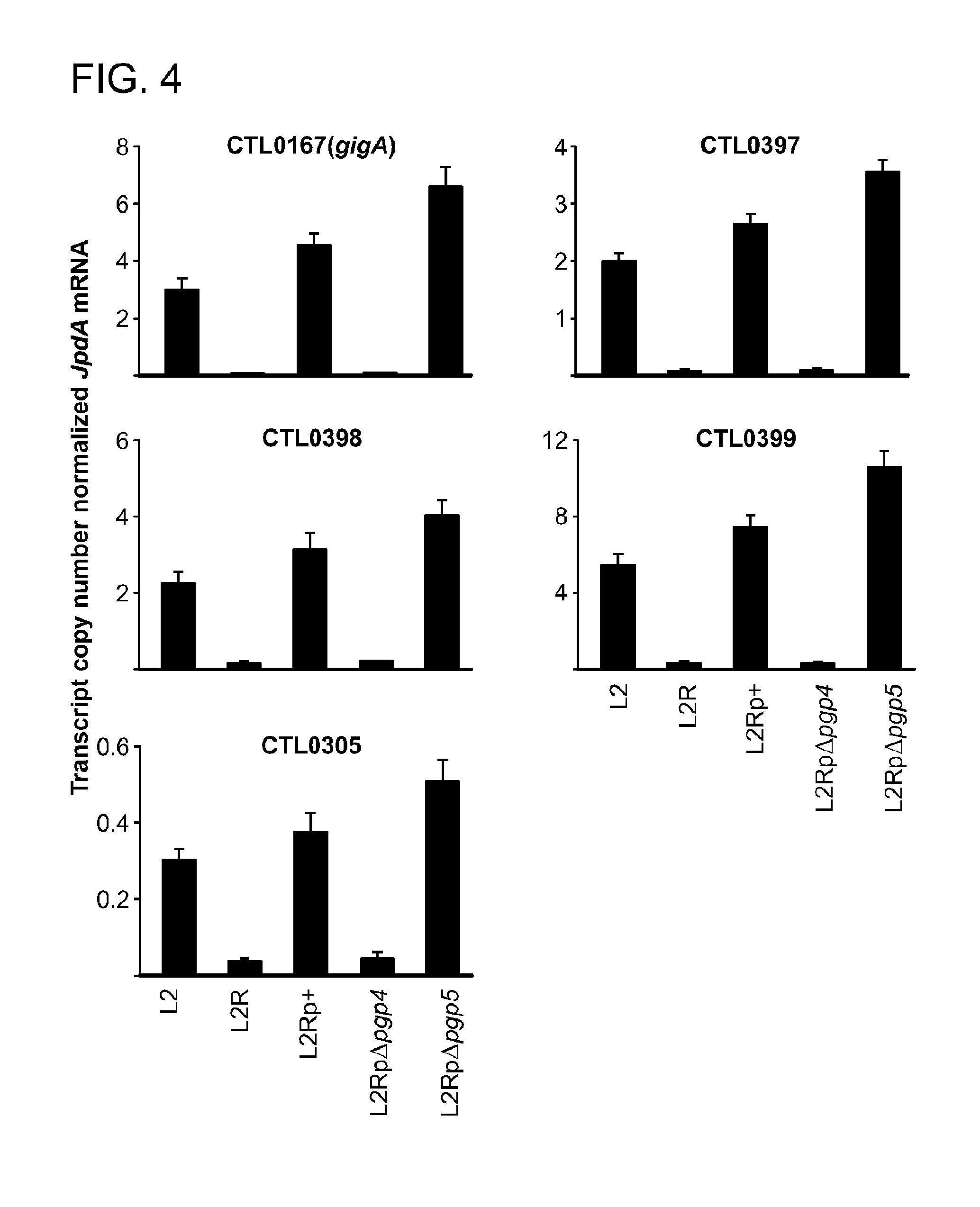
D00014

D00015
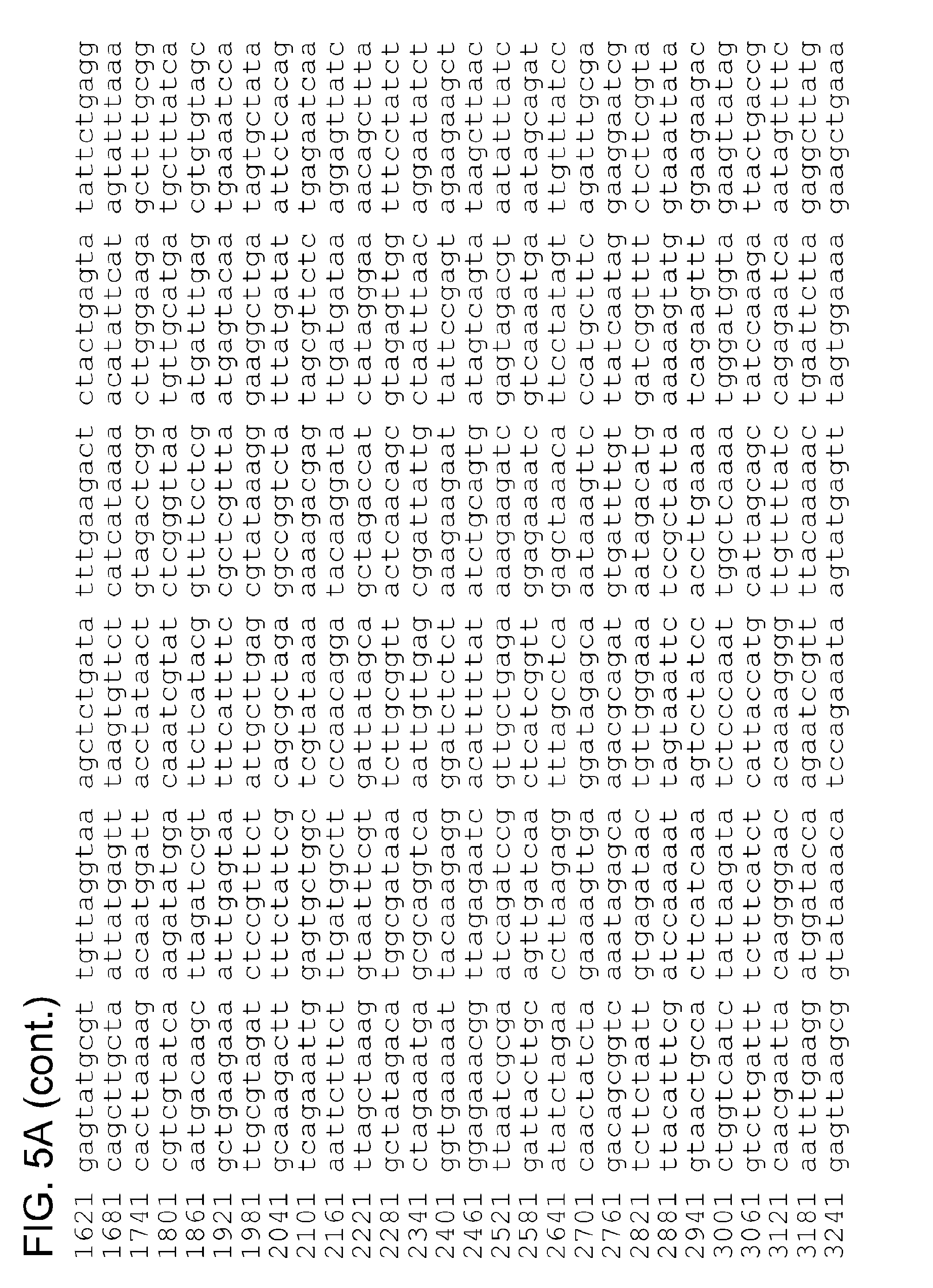
D00016

D00017
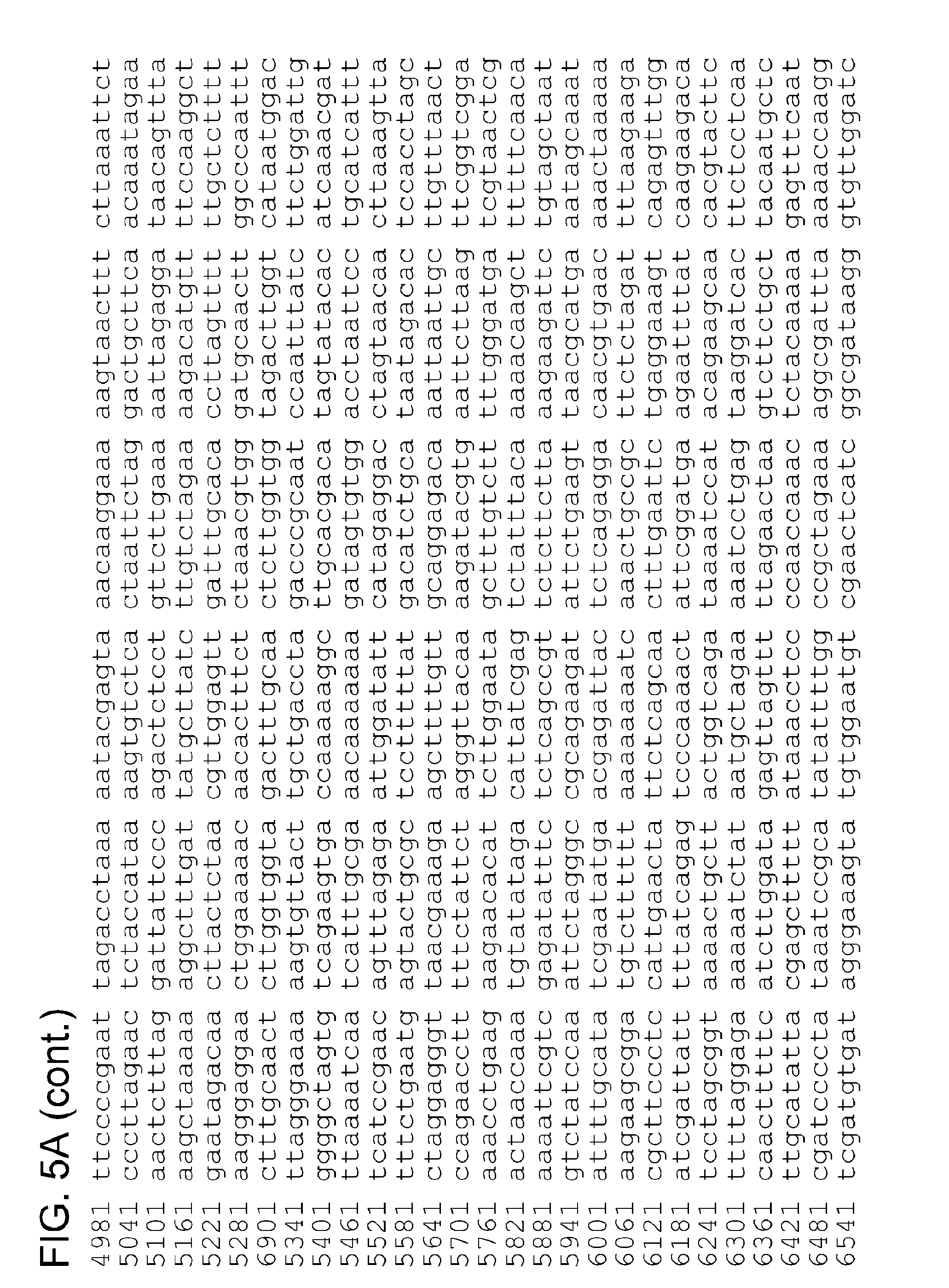
D00018
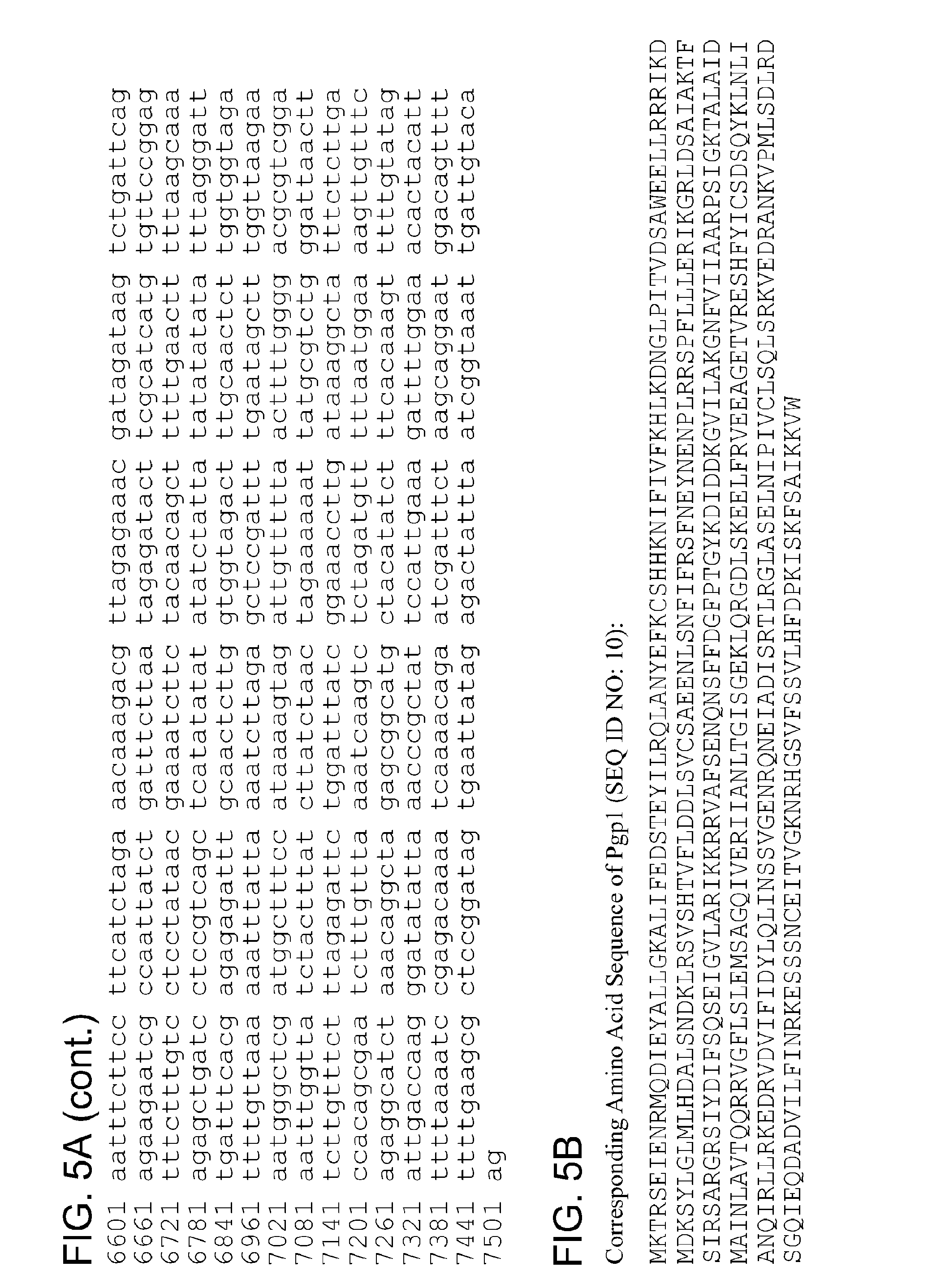
D00019

D00020
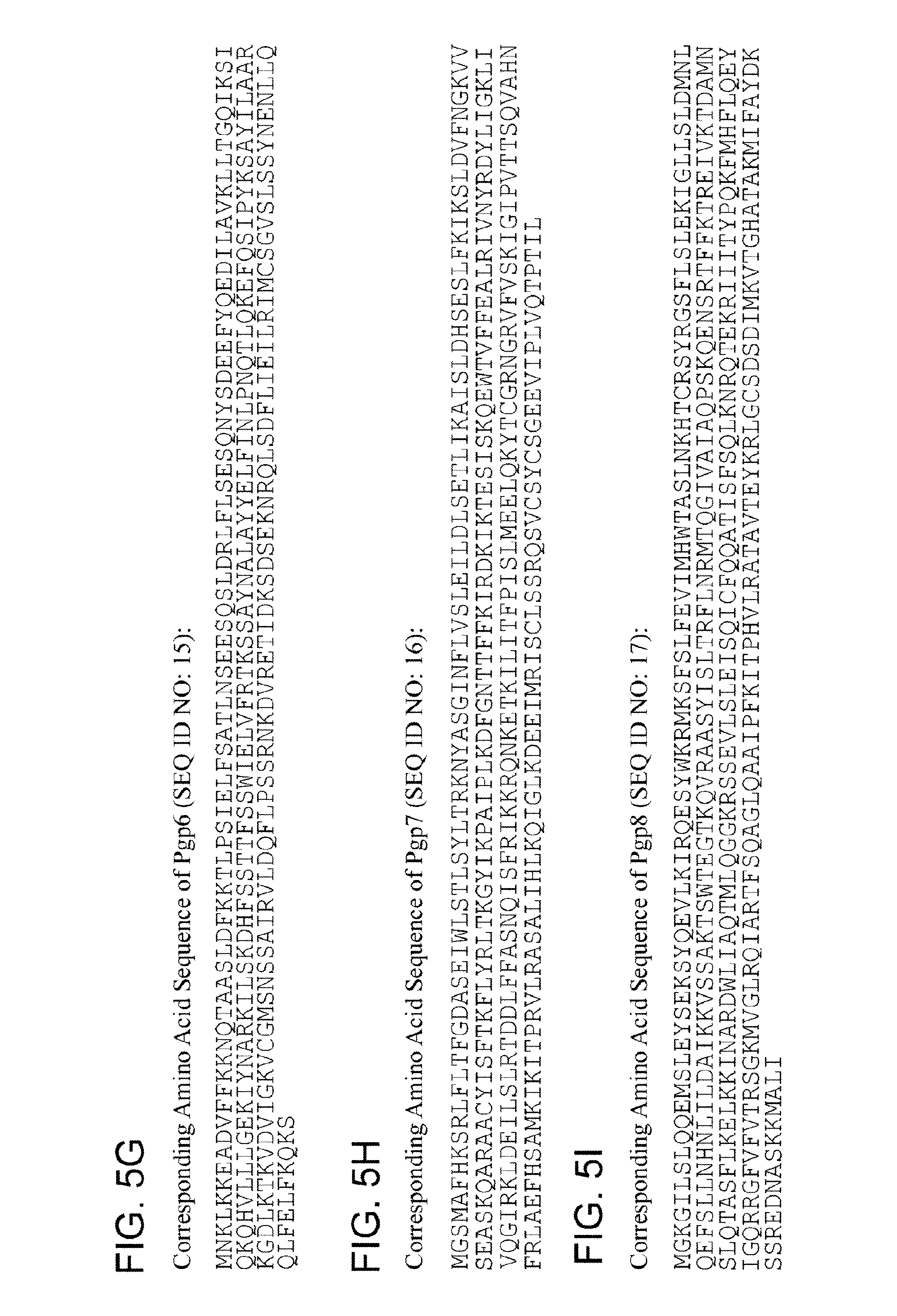
D00021

D00022

D00023

D00024
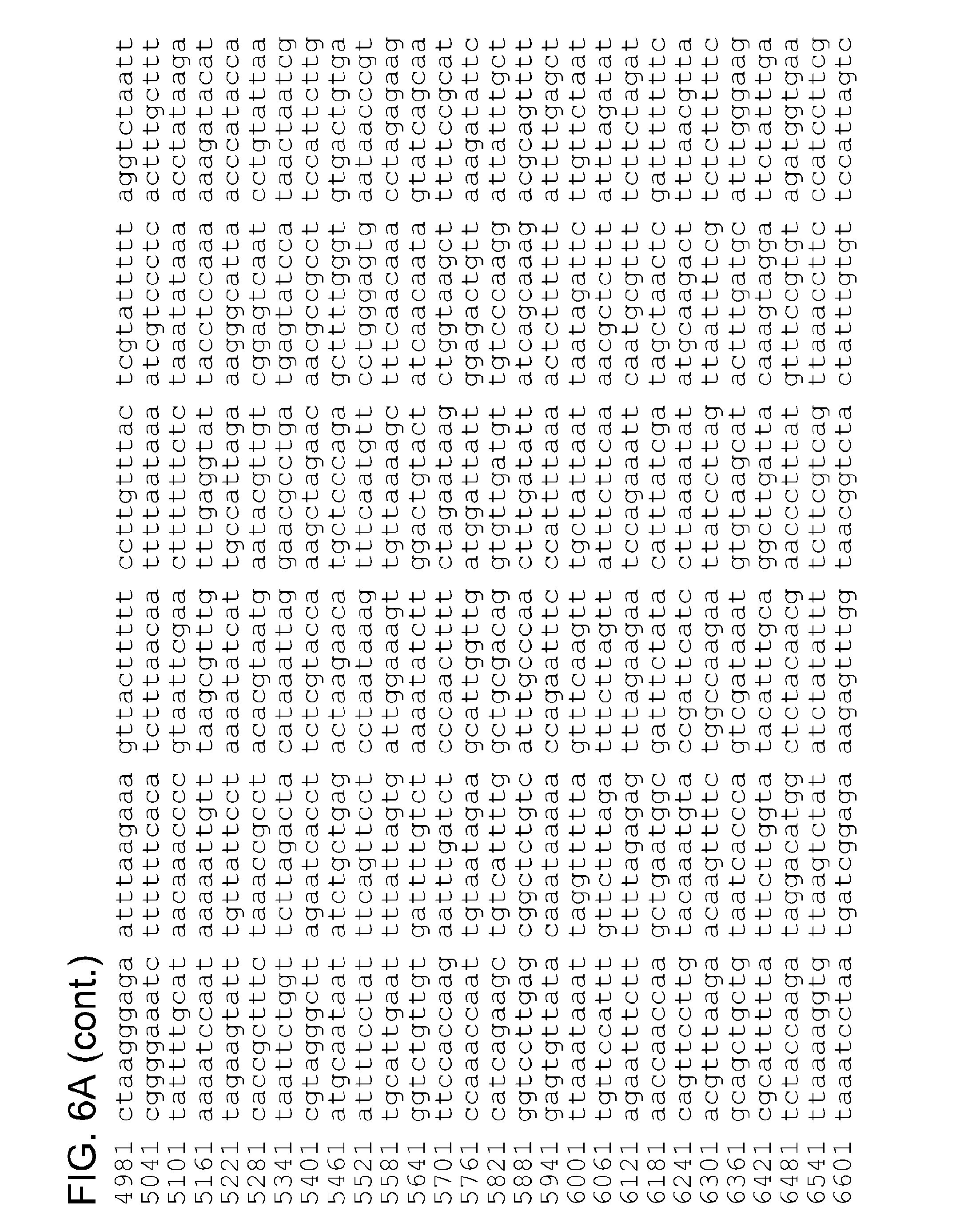
D00025

D00026

D00027
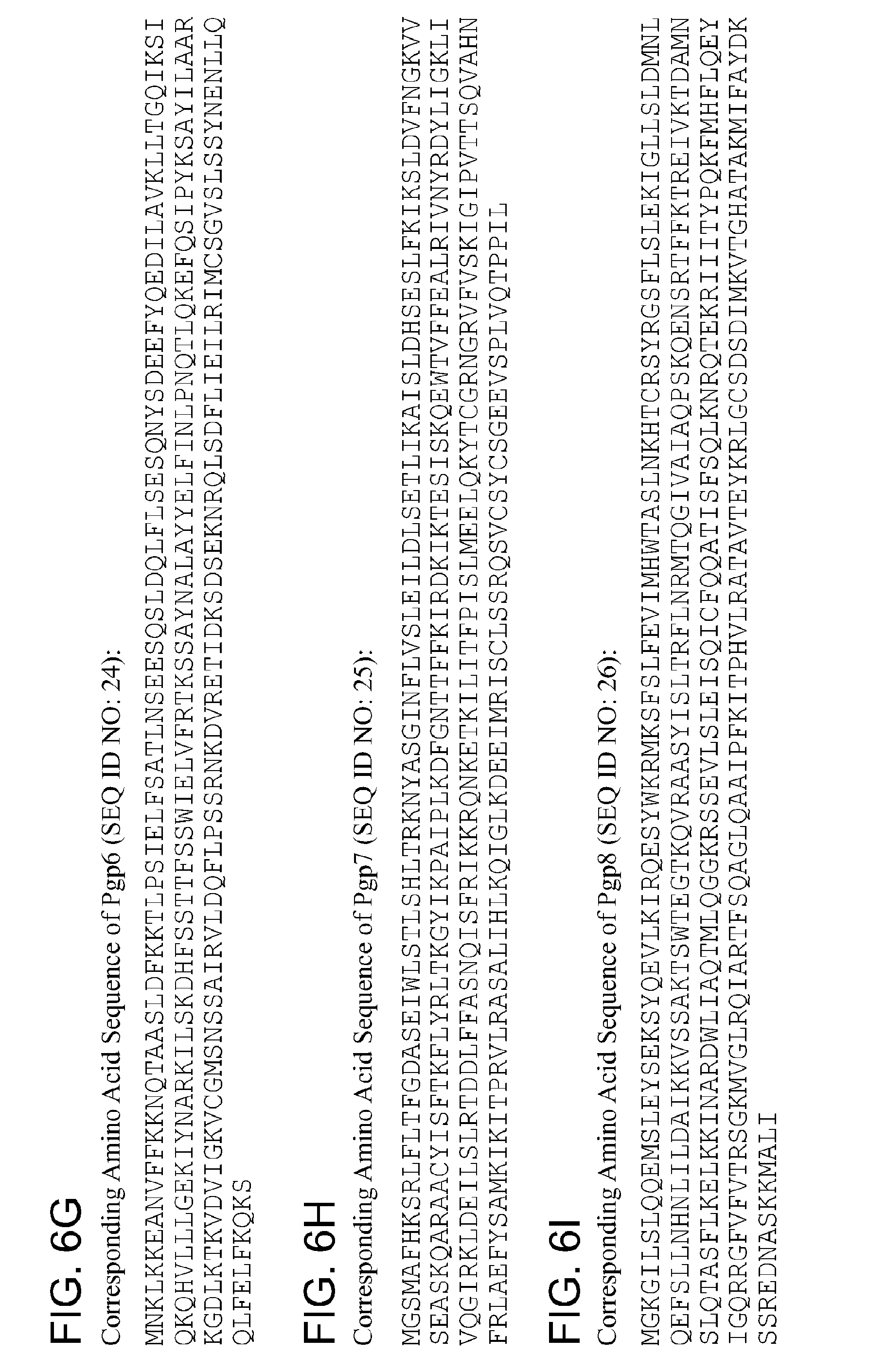
D00028

D00029
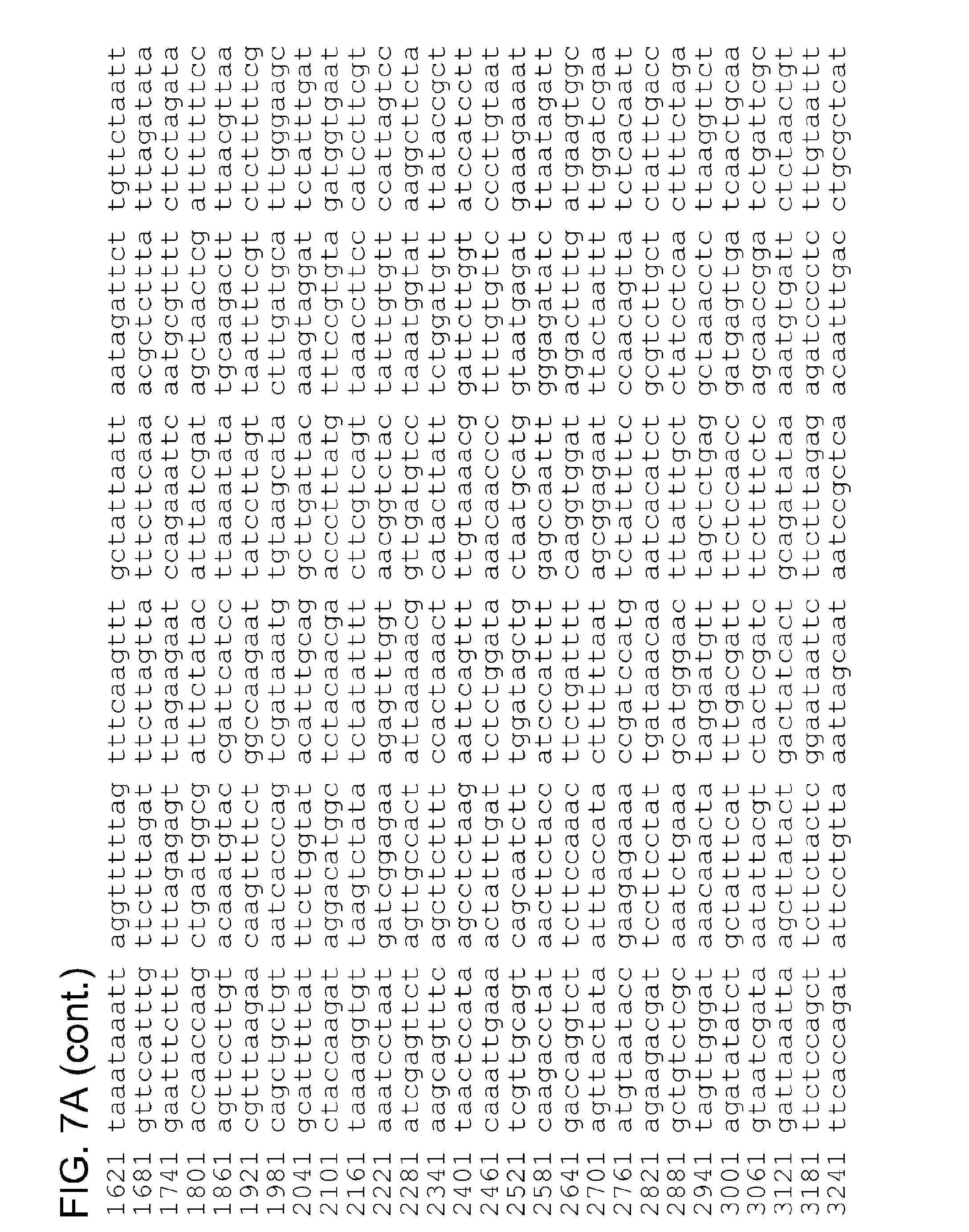
D00030

D00031

D00032
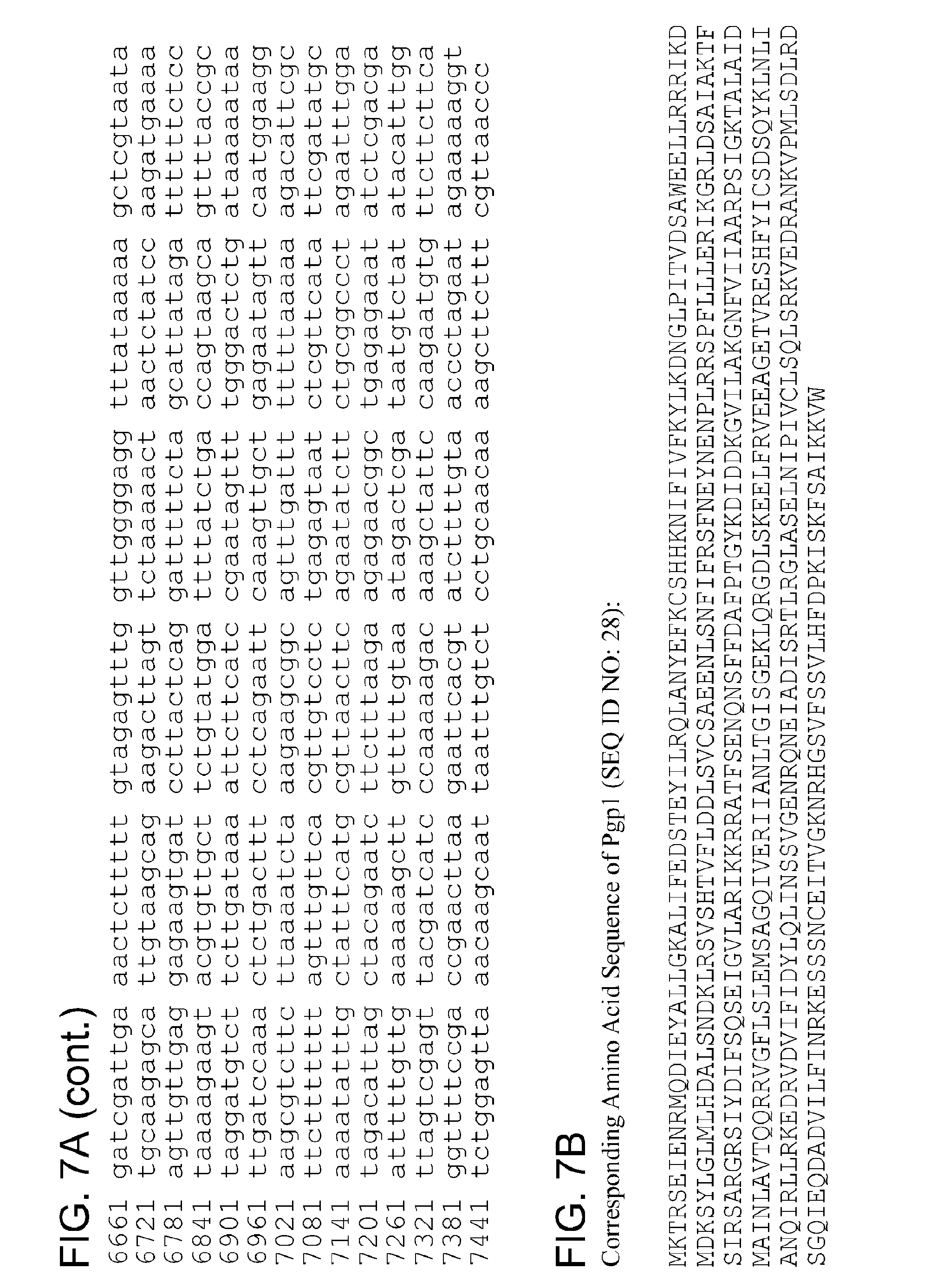
D00033

D00034

D00035
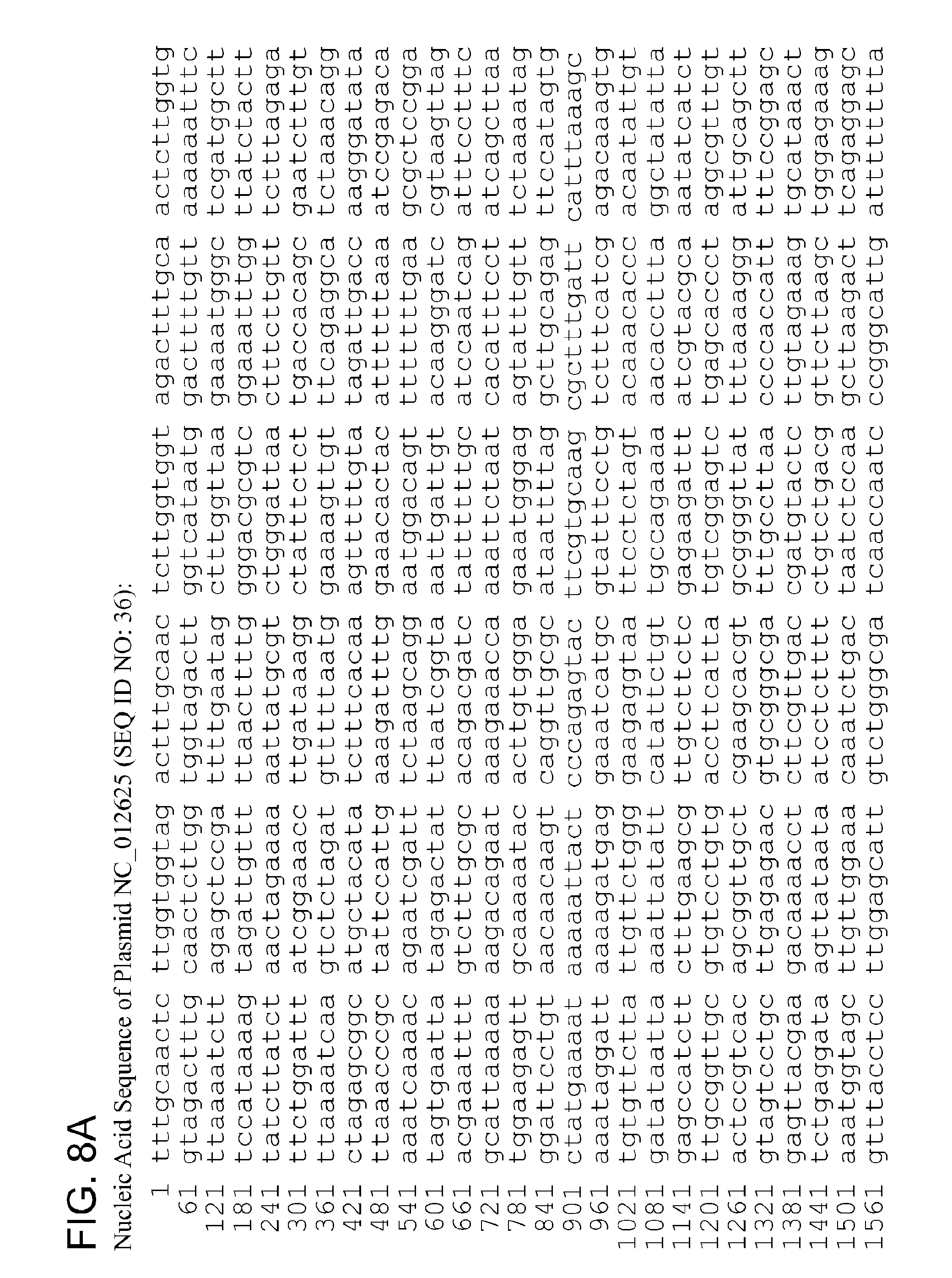
D00036

D00037

D00038

D00039

D00040

D00041

D00042

D00043

D00044

D00045

D00046

D00047

D00048

D00049

D00050

D00051

D00052

D00053

D00054

D00055

D00056

D00057

D00058

D00059

D00060
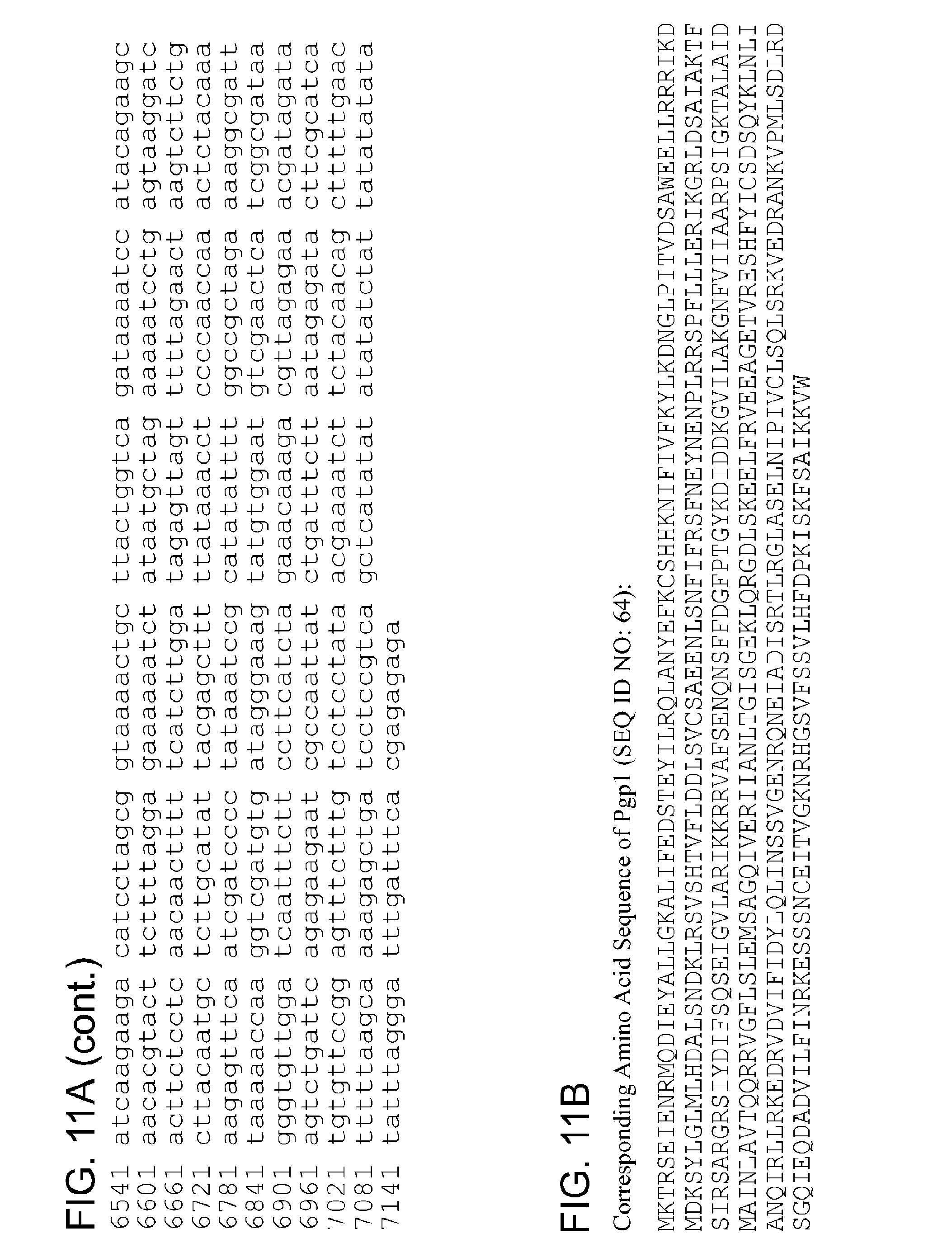
D00061

D00062

D00063

D00064

D00065

D00066

D00067

D00068

D00069

D00070
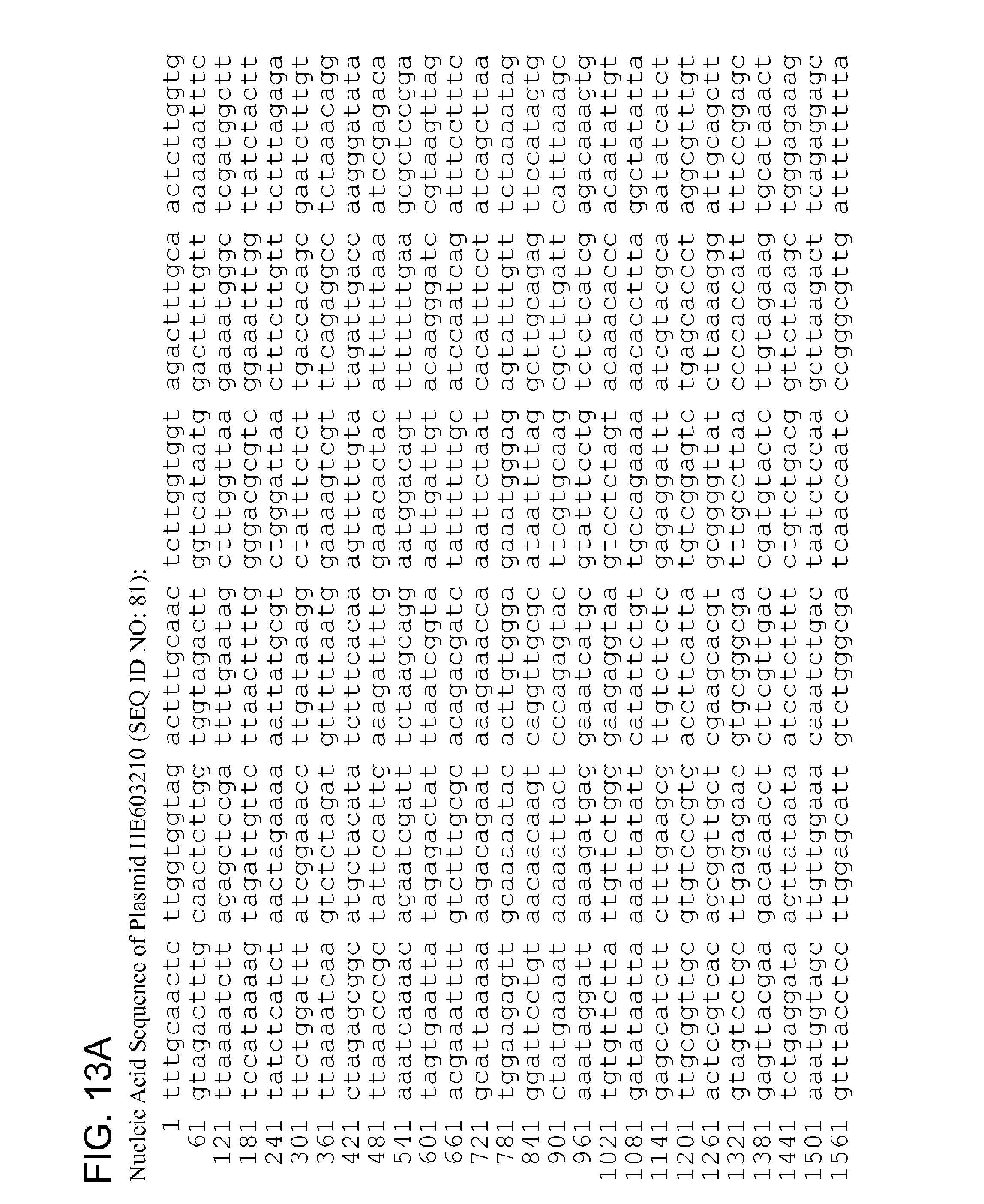
D00071

D00072

D00073

D00074

D00075
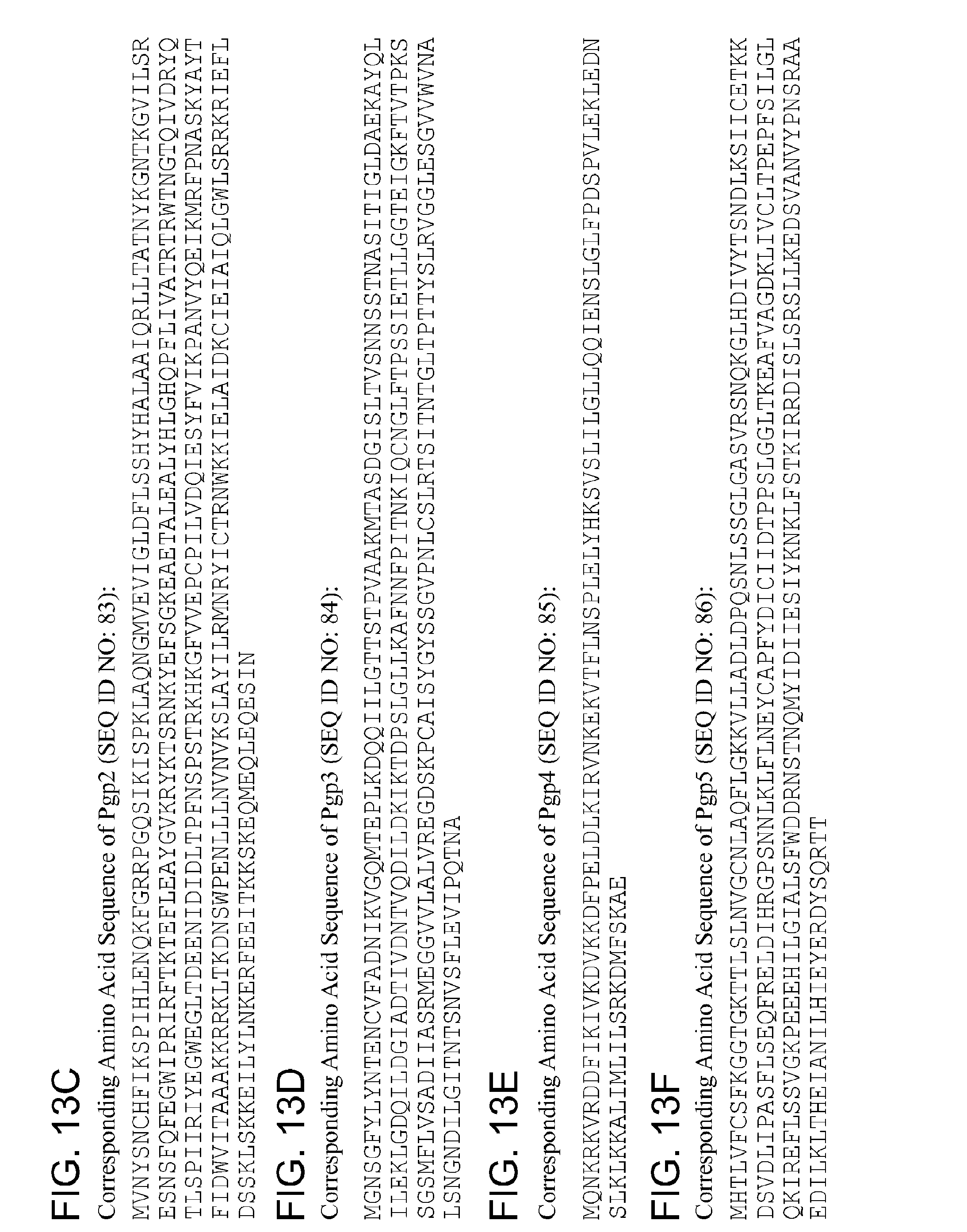
D00076
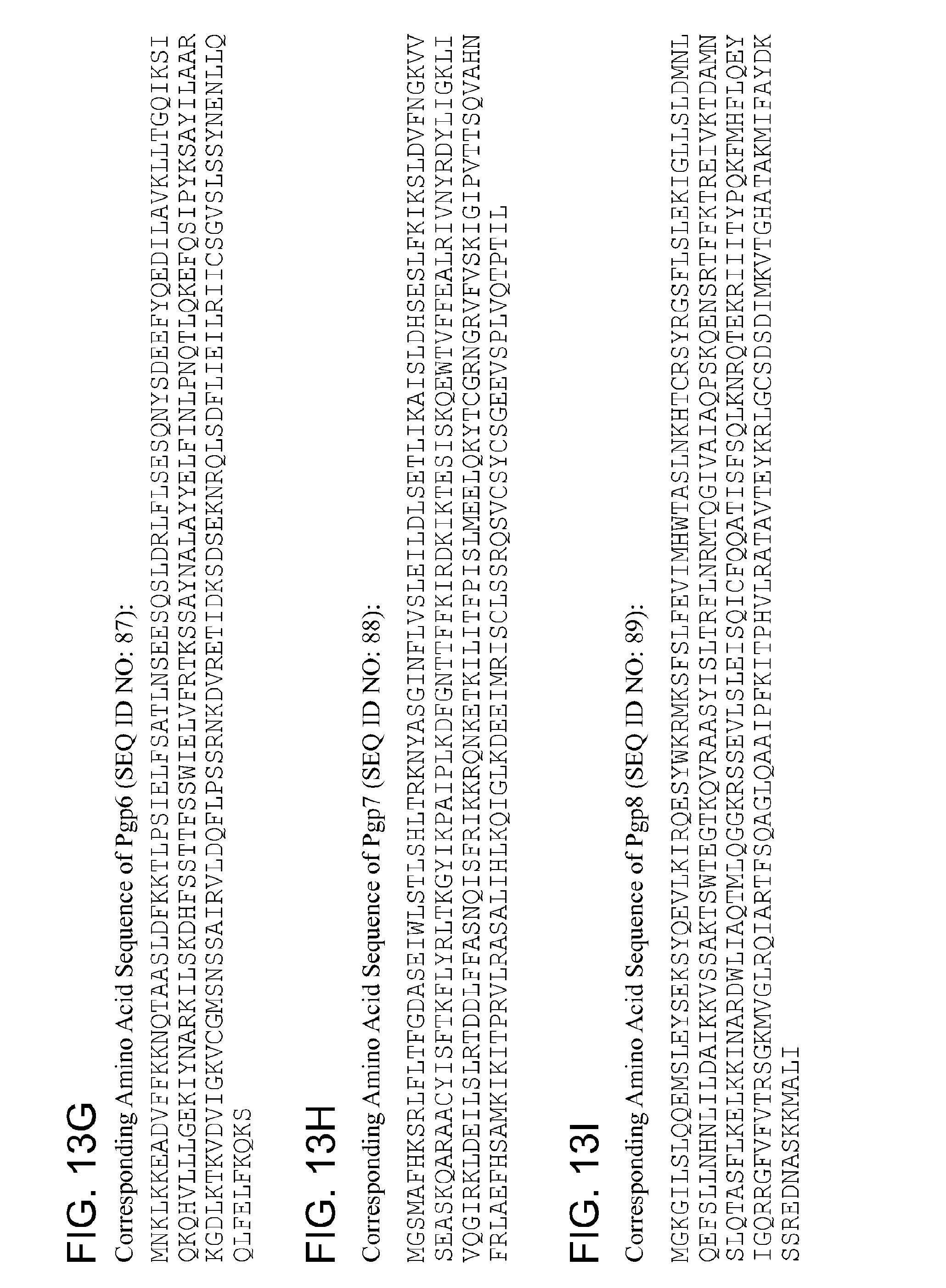
D00077

D00078

D00079

D00080
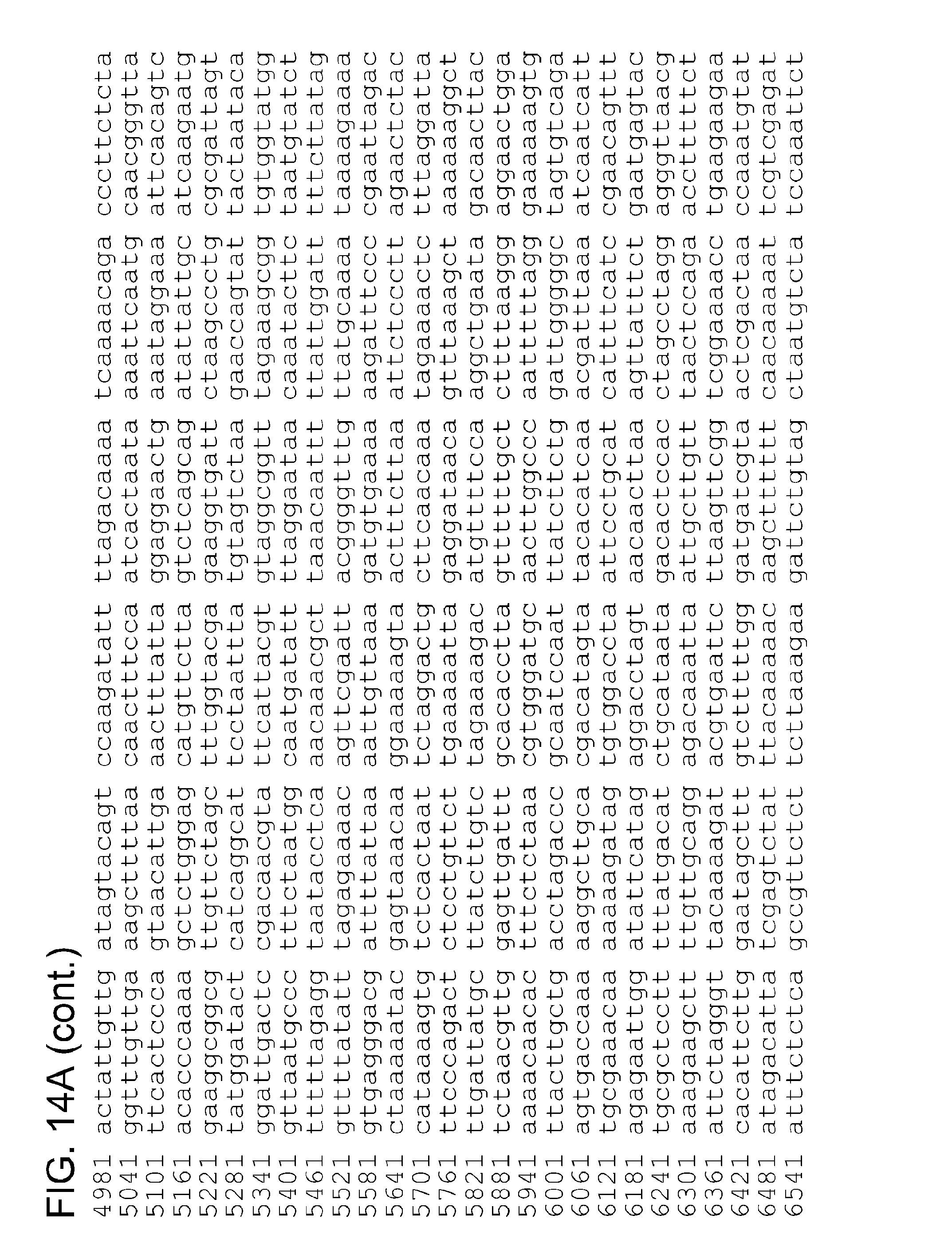
D00081

D00082

D00083
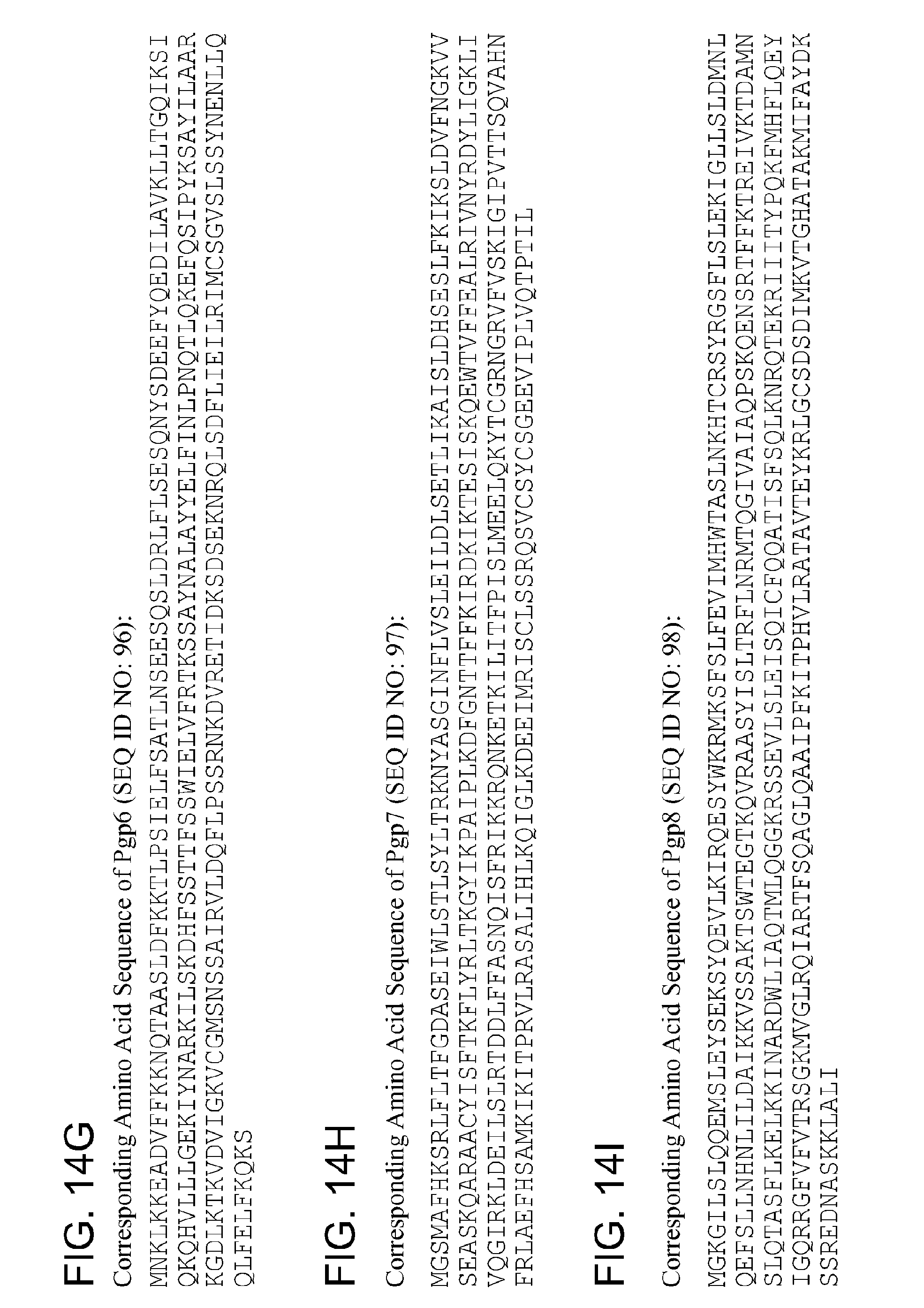
D00084

D00085

D00086
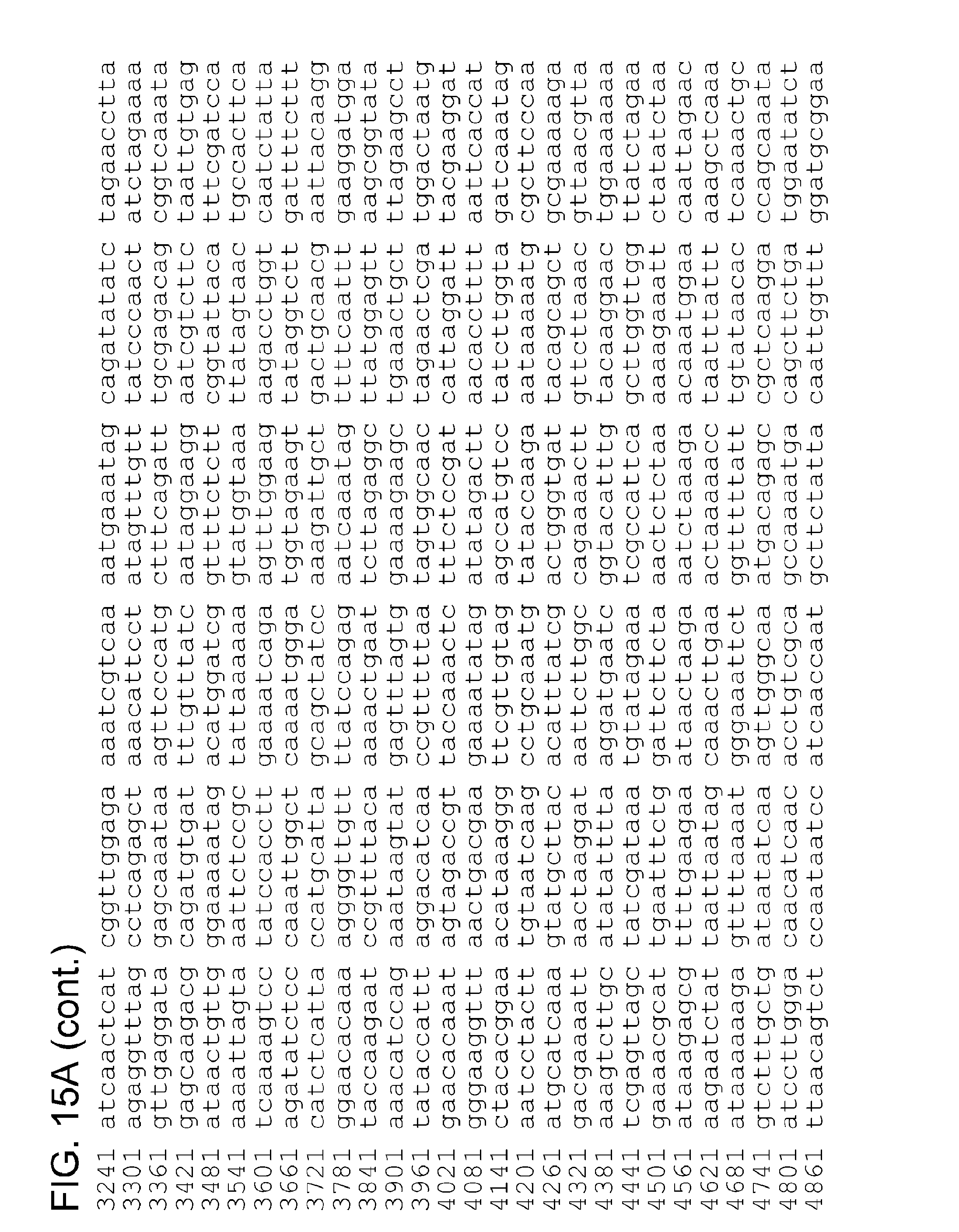
D00087

D00088

D00089

D00090
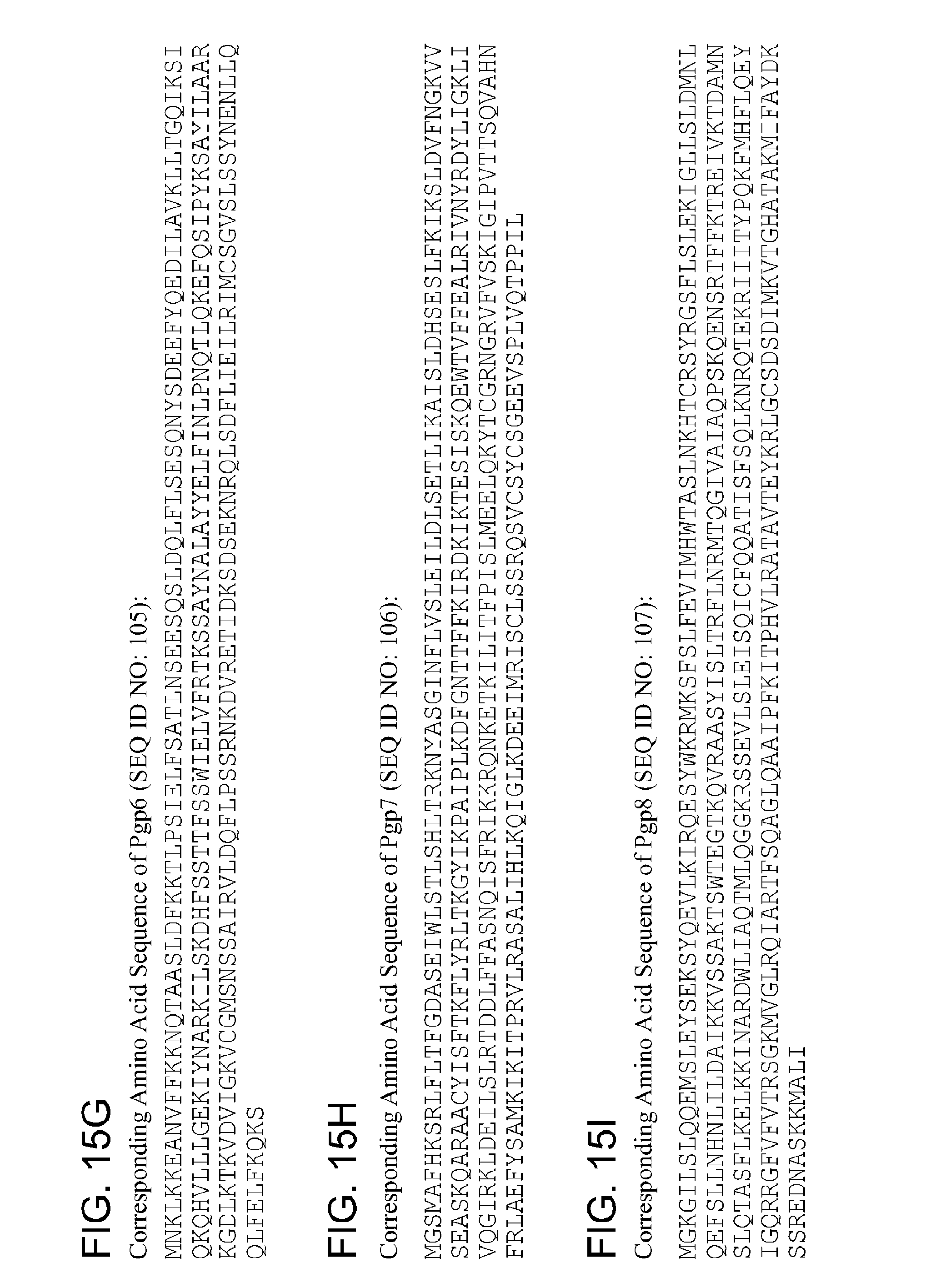
D00091

D00092

D00093

D00094

D00095

D00096
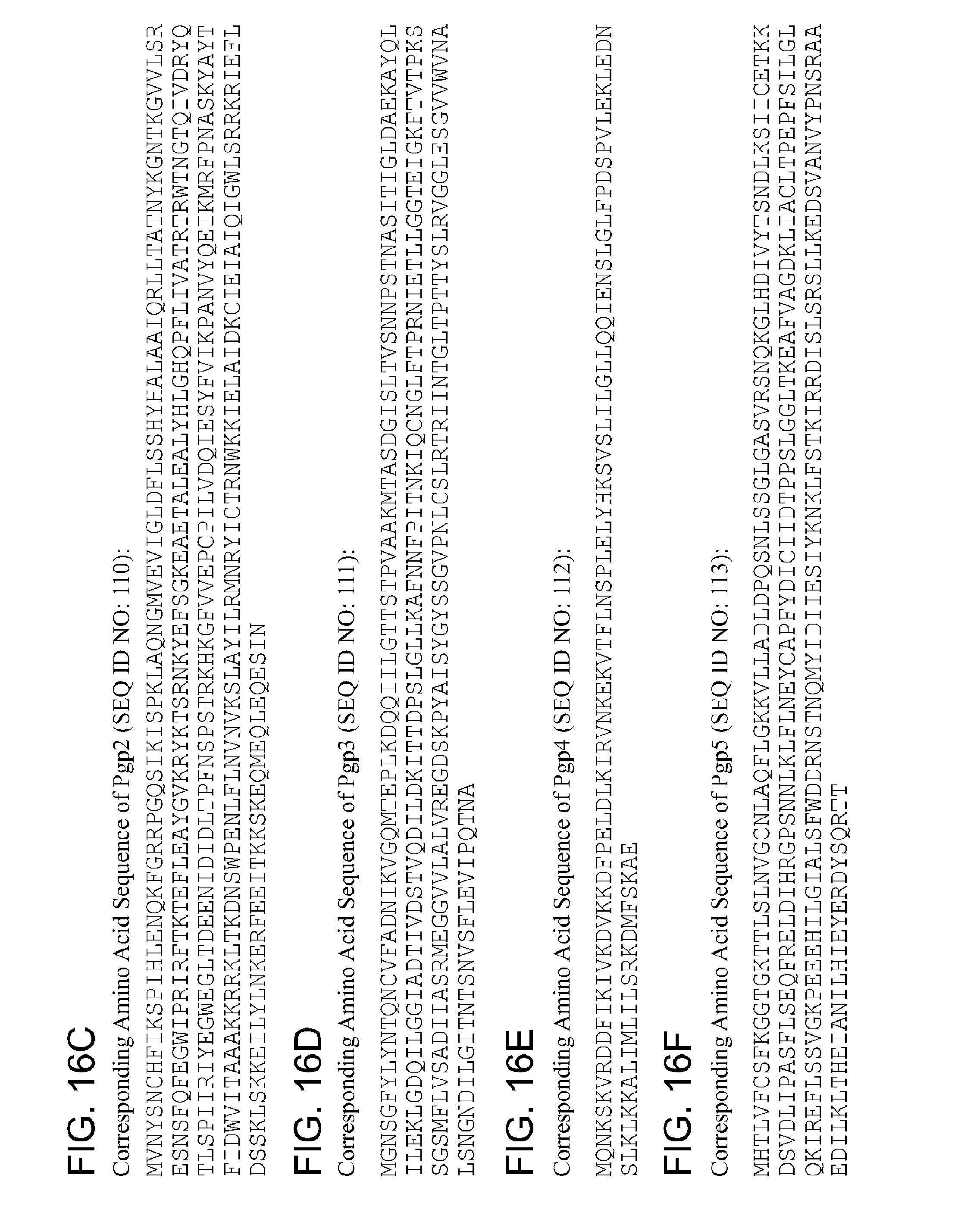
D00097
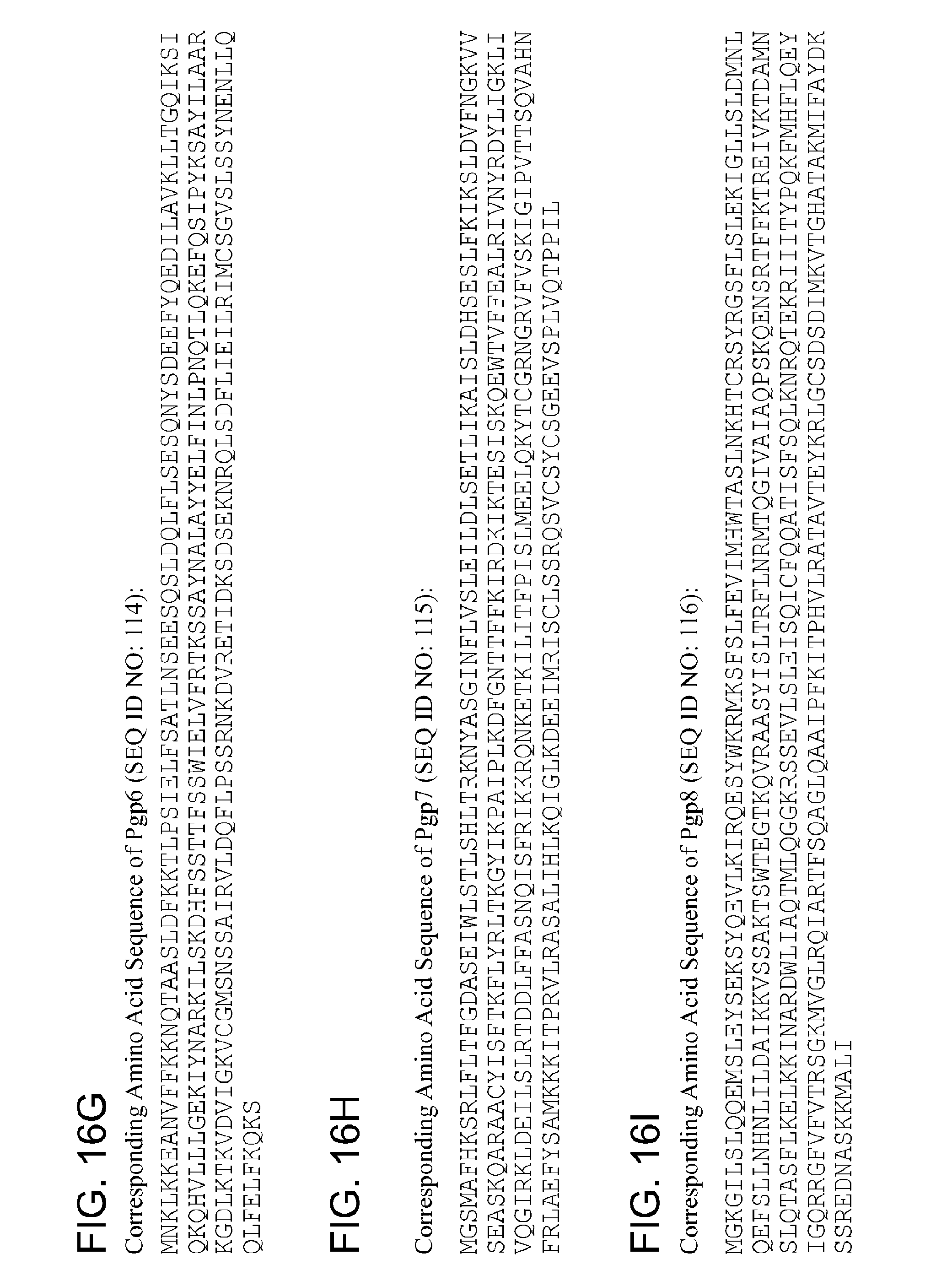
D00098

D00099

D00100

D00101
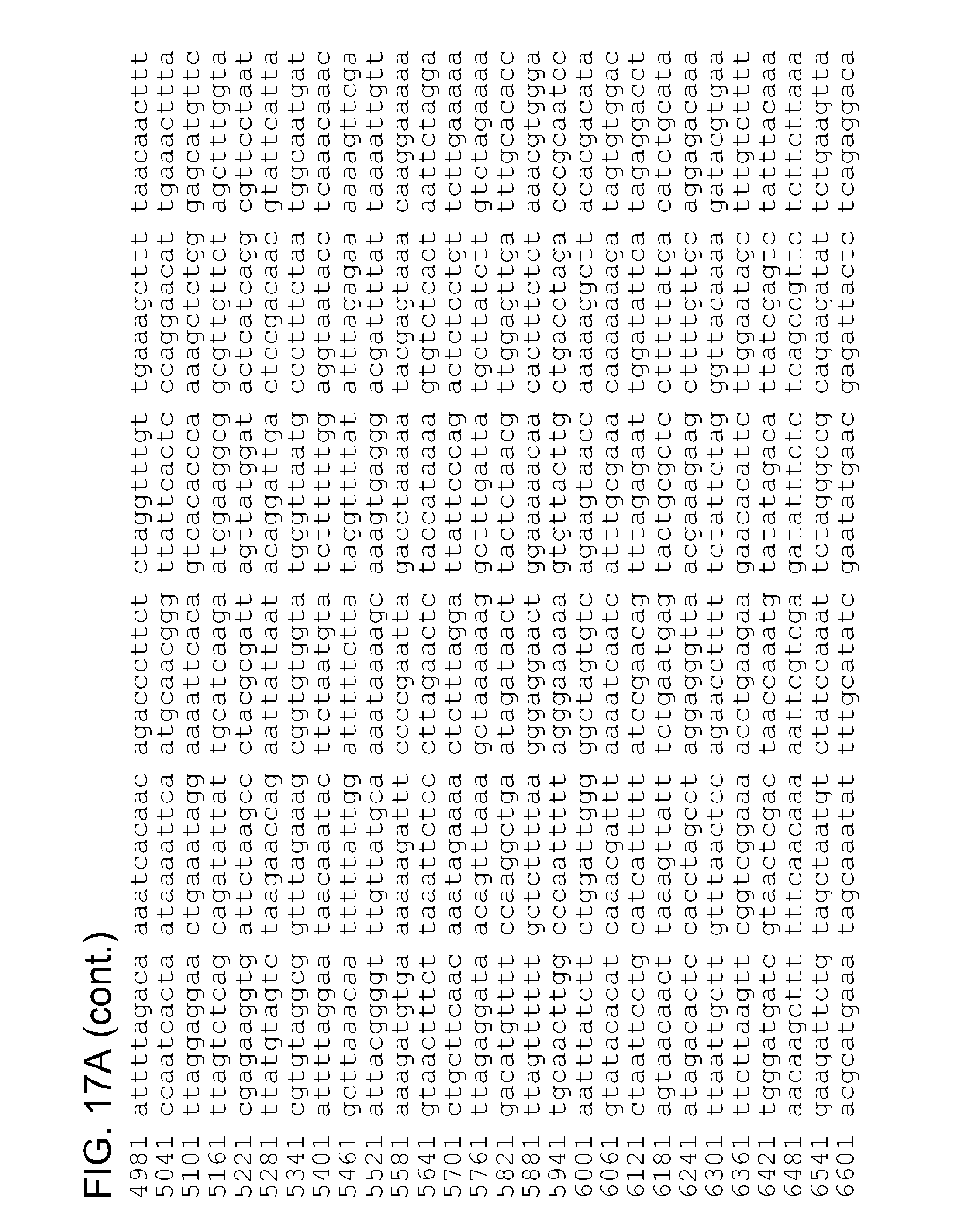
D00102
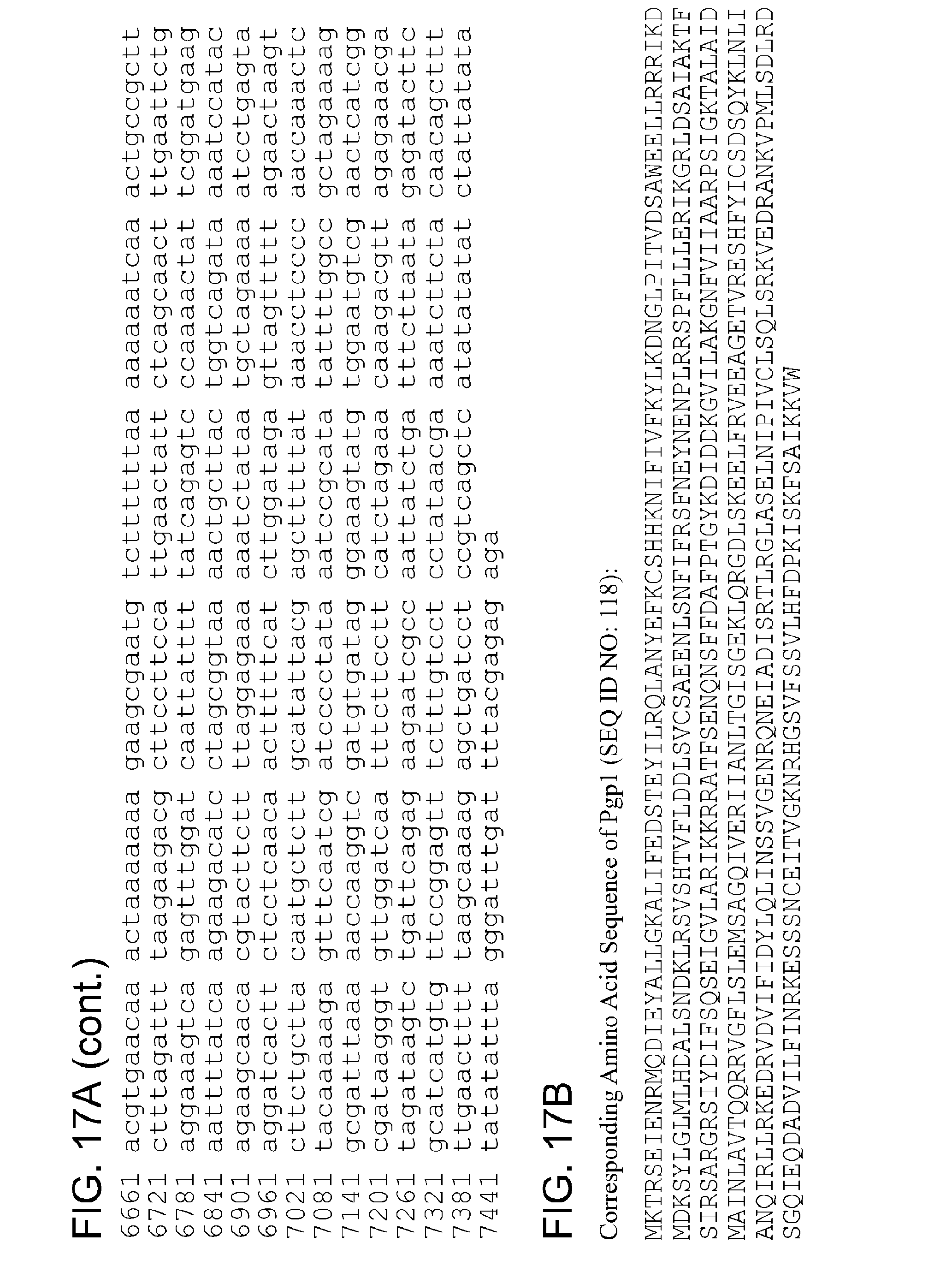
D00103

D00104

D00105

D00106

D00107

D00108

D00109

D00110

D00111

D00112

D00113

D00114

D00115
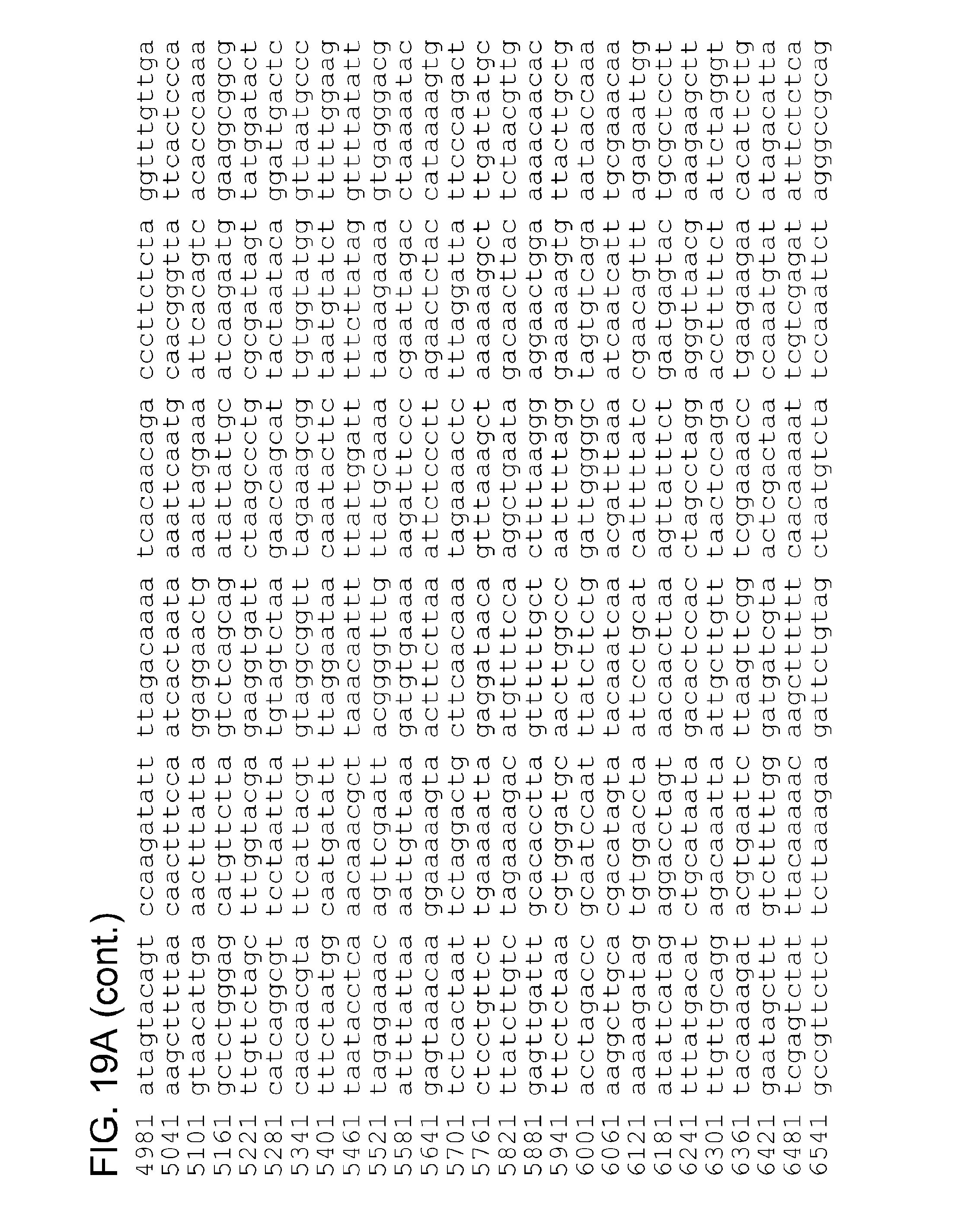
D00116

D00117

D00118

D00119

D00120

D00121
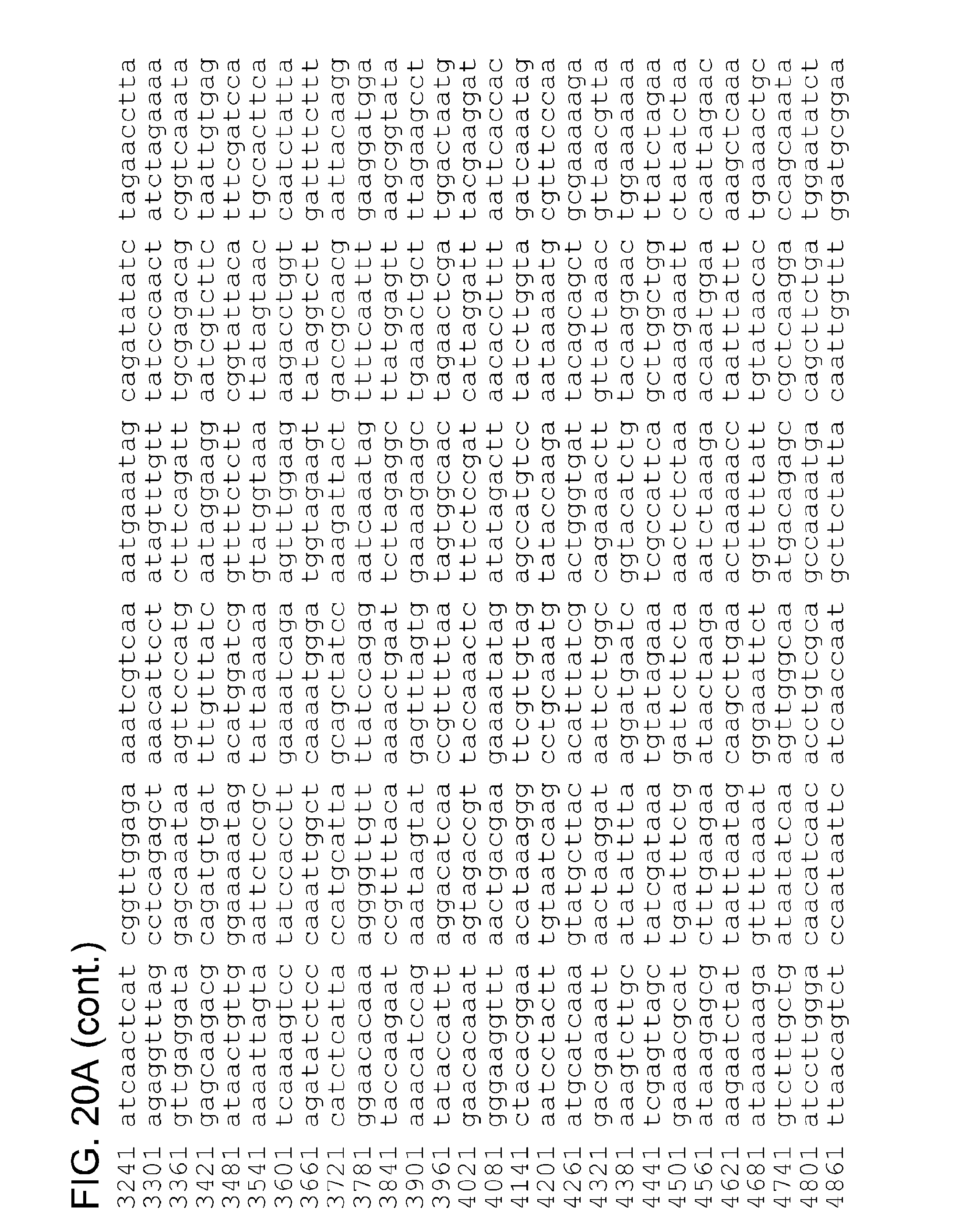
D00122

D00123

D00124

D00125

D00126

D00127

D00128
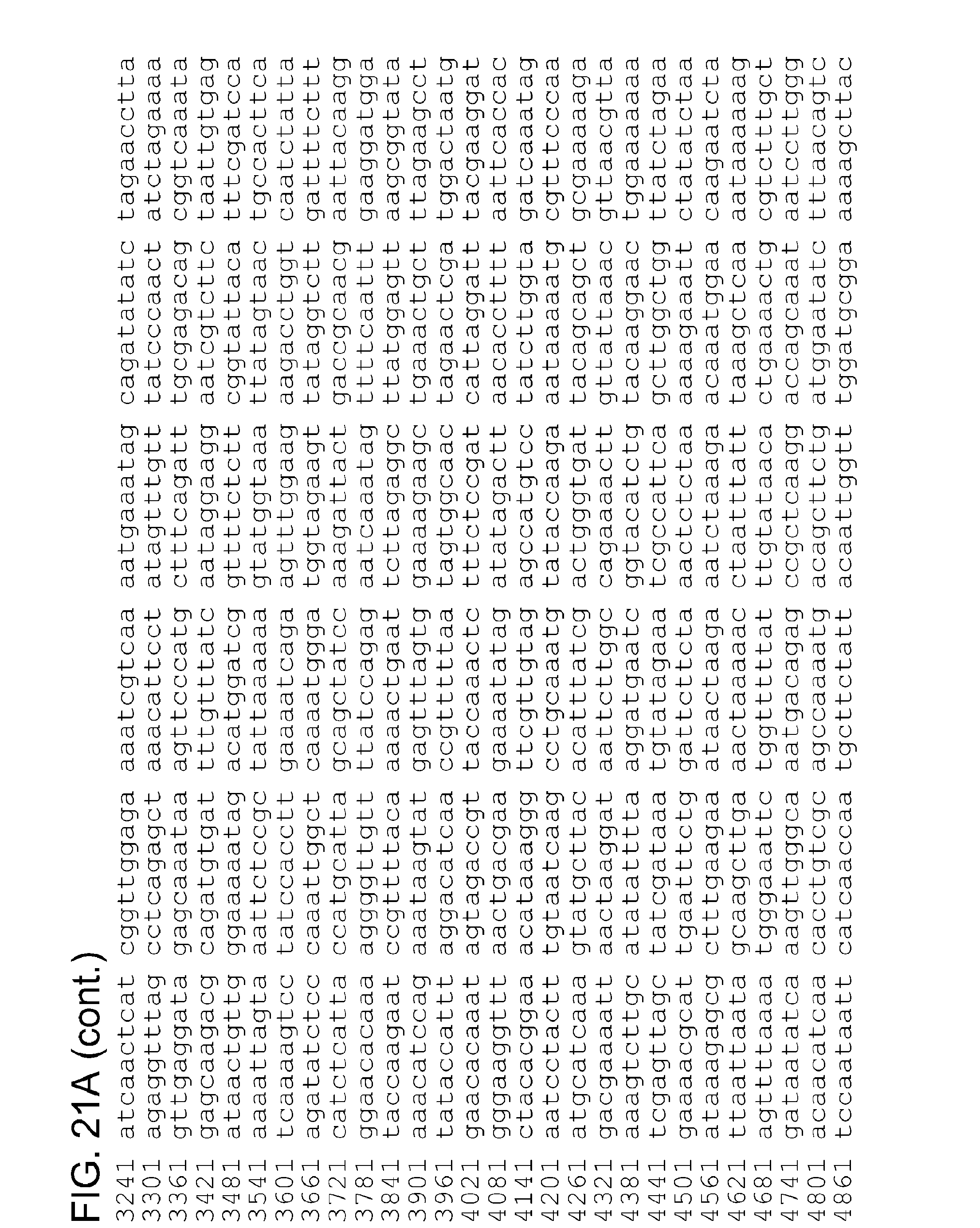
D00129
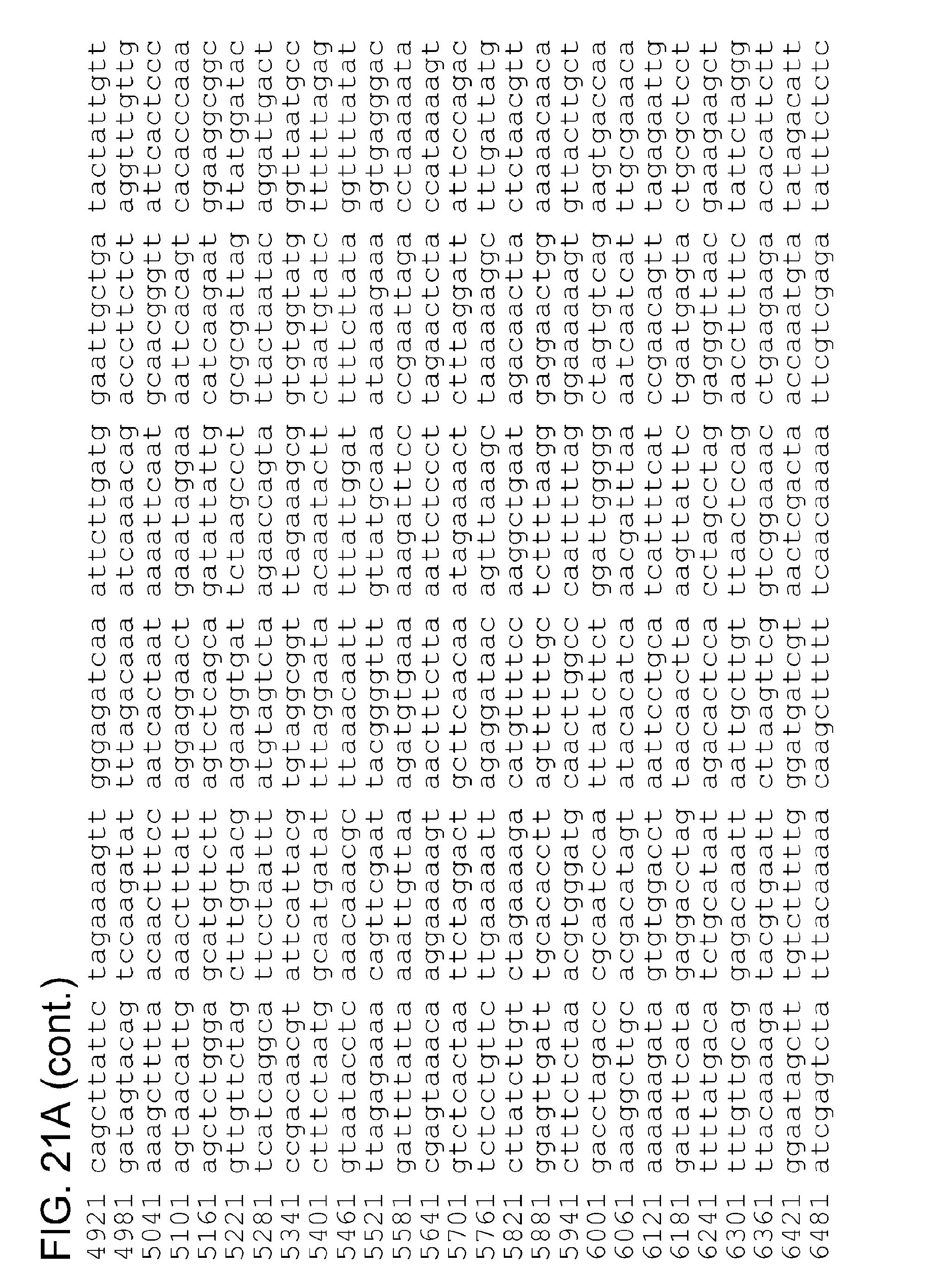
D00130
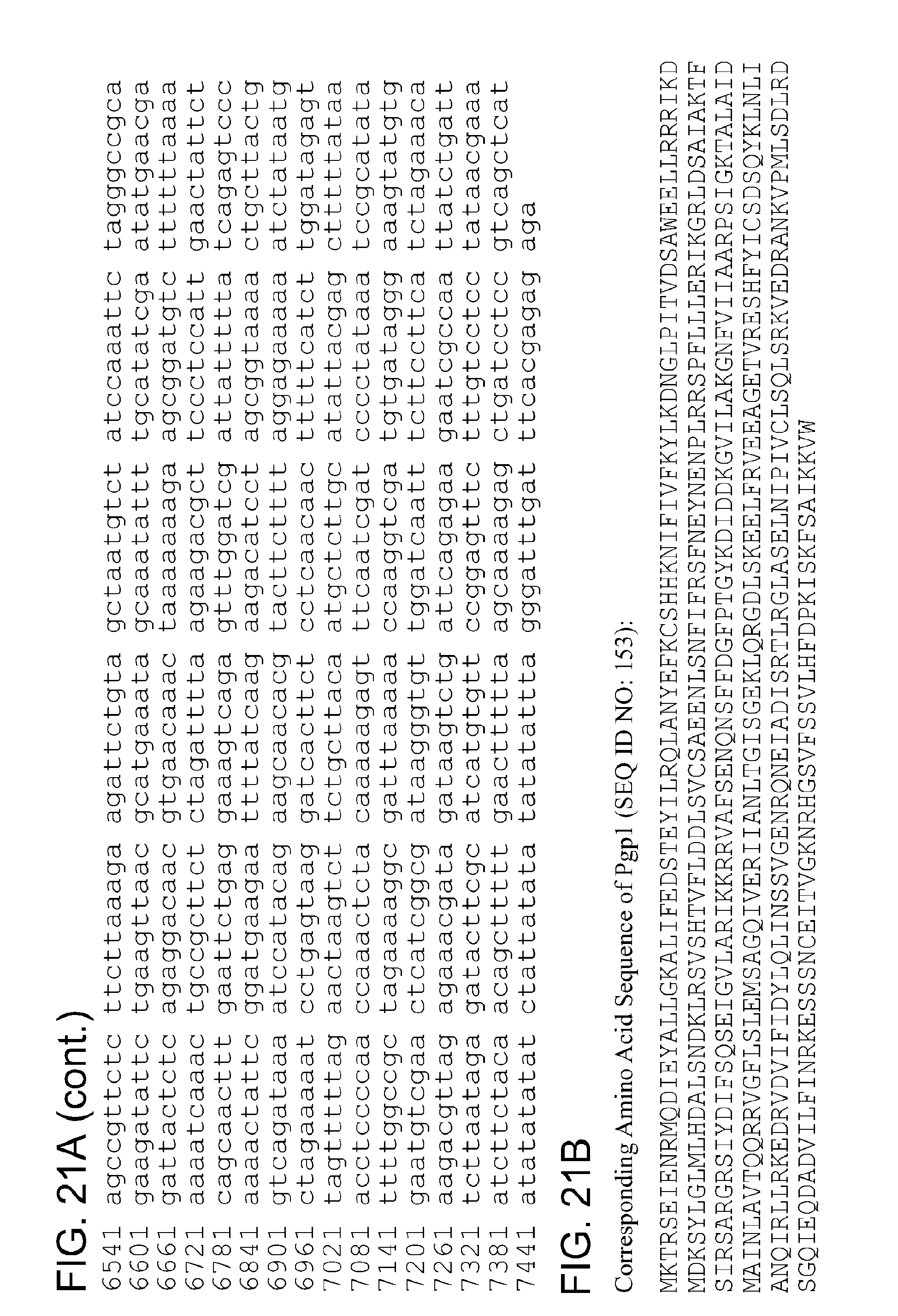
D00131
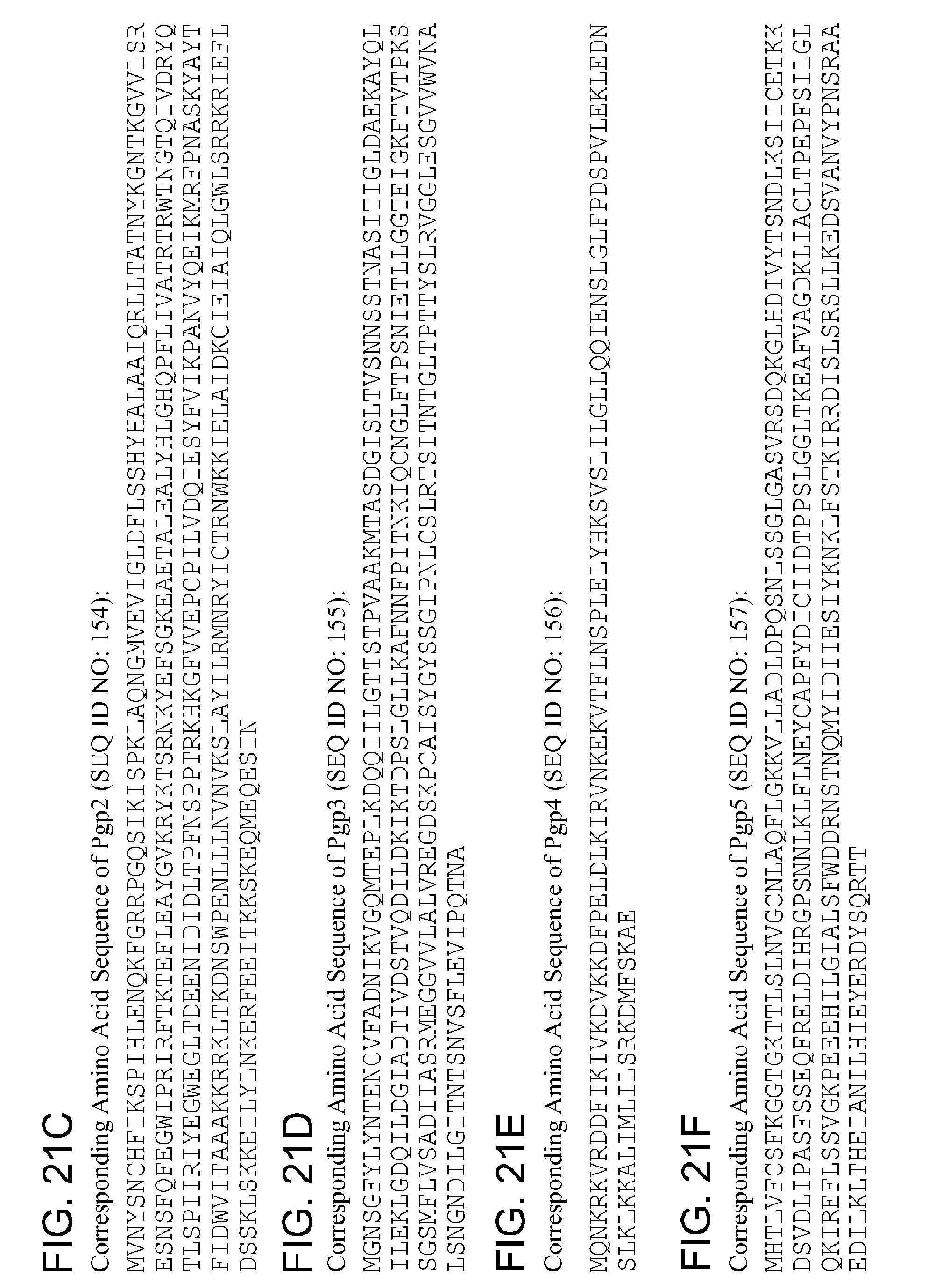
D00132

D00133

D00134

D00135

D00136

D00137

D00138
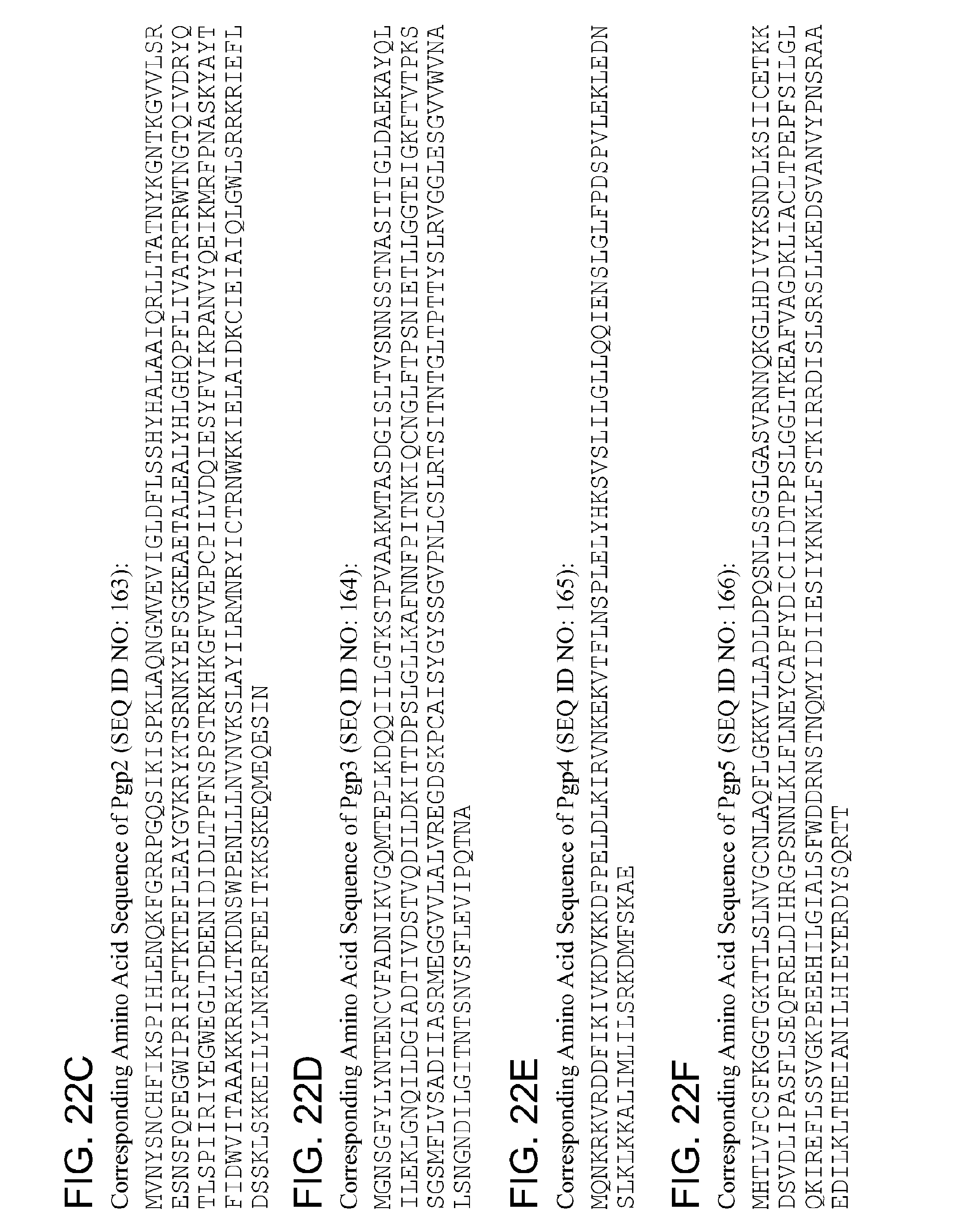
D00139

D00140

D00141

D00142

D00143

D00144

D00145

D00146

D00147

D00148

D00149

D00150

D00151

D00152
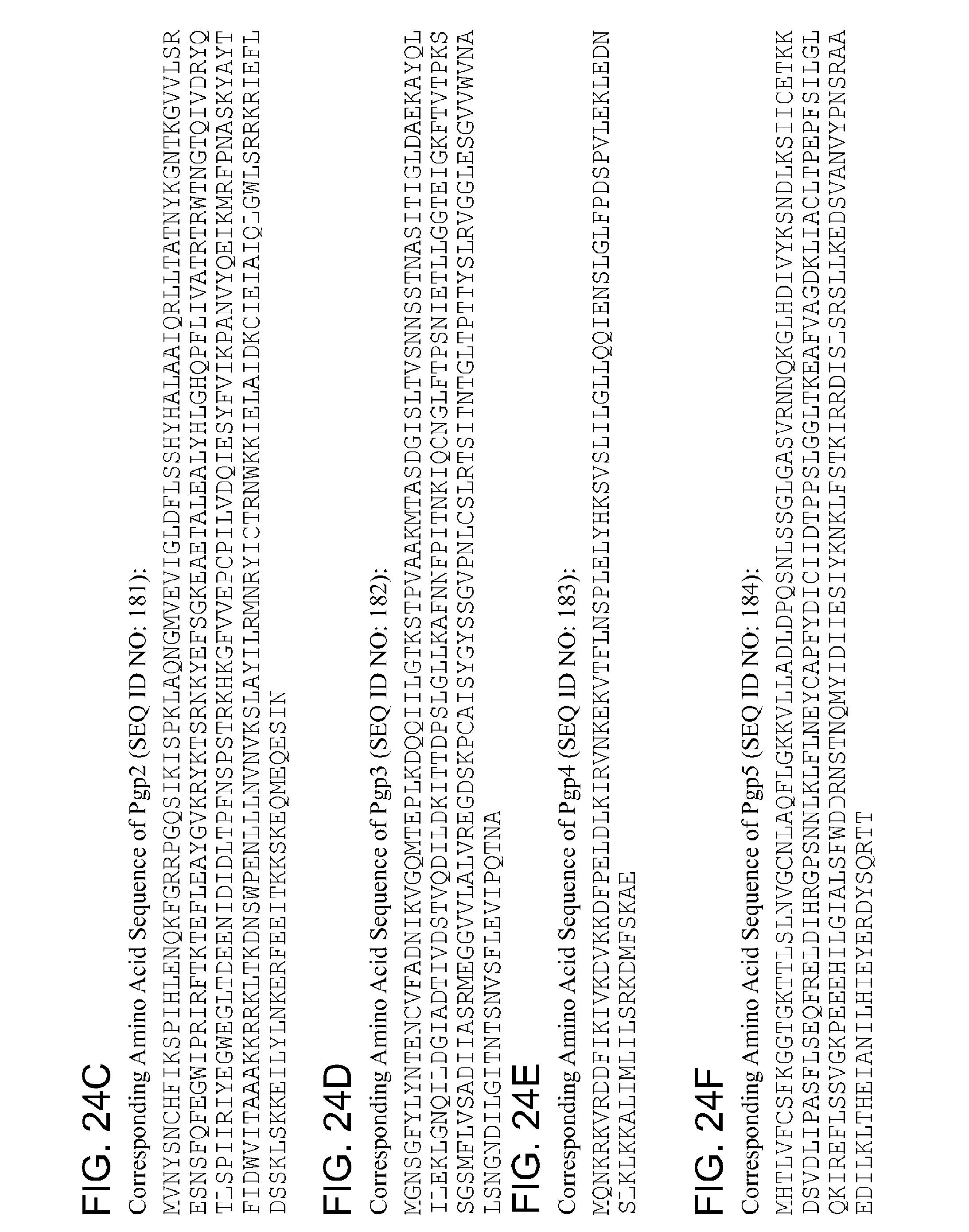
D00153

D00154

D00155

D00156

D00157

D00158

D00159
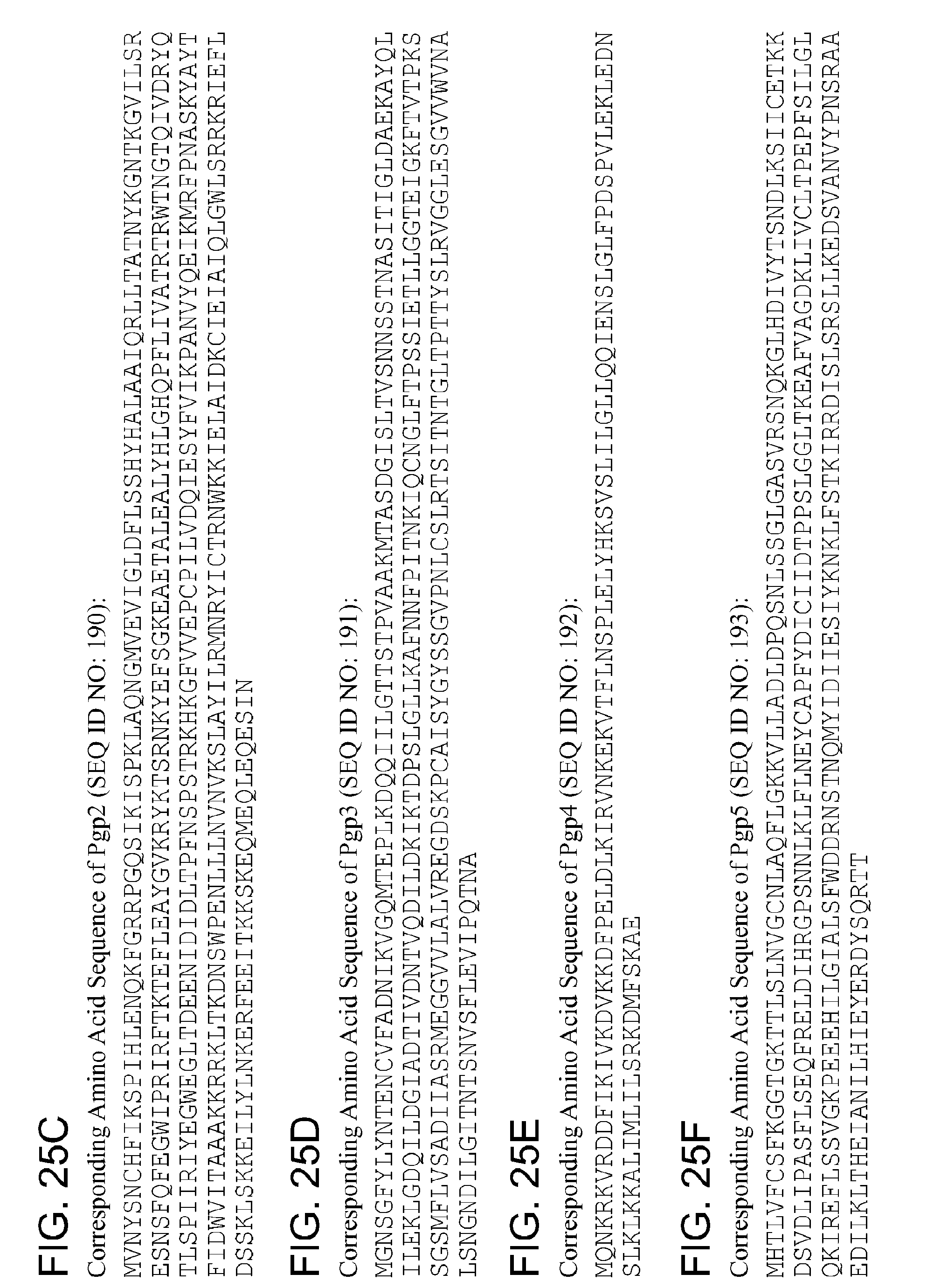
D00160

D00161

D00162

D00163

D00164

D00165

D00166

D00167

D00168
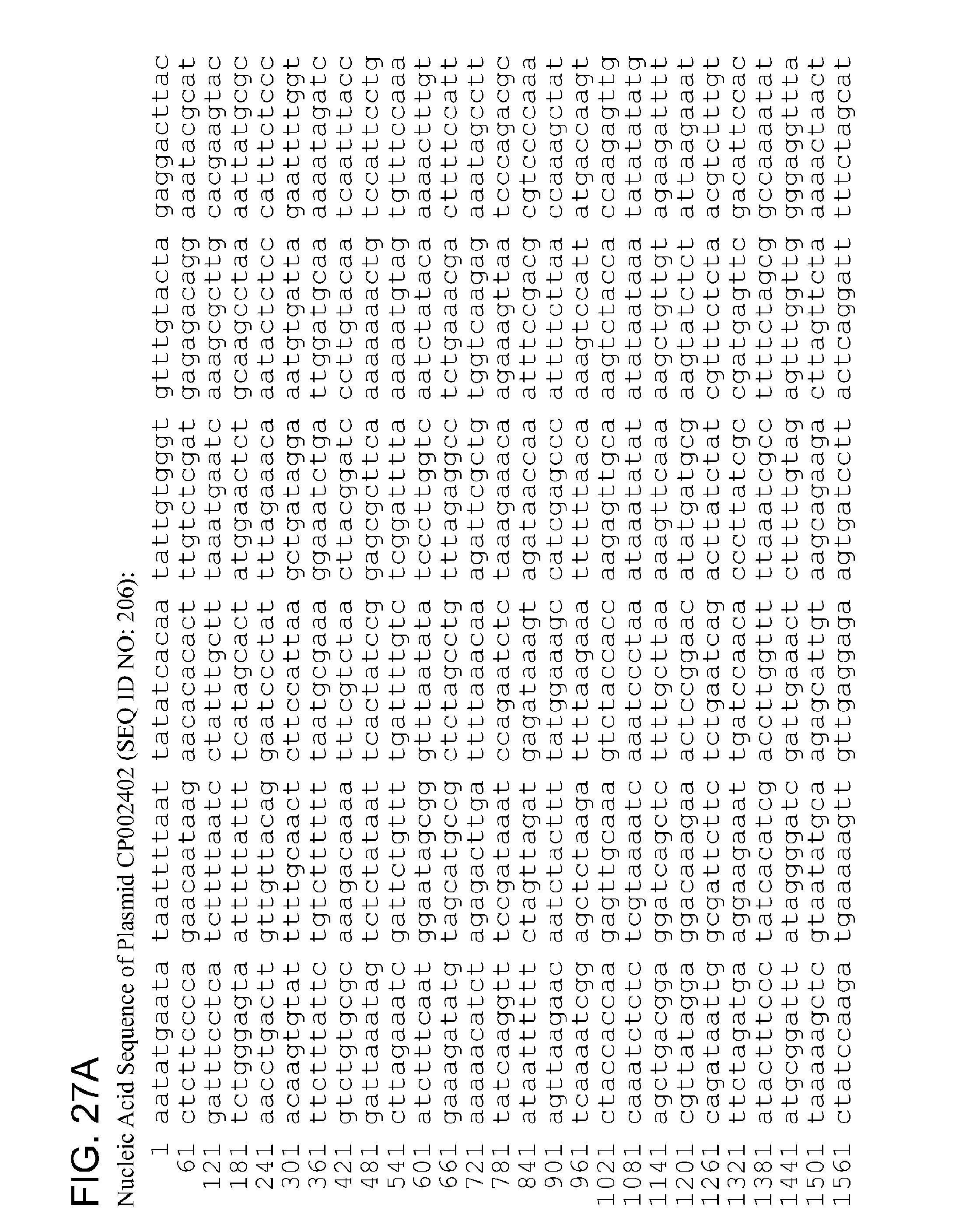
D00169

D00170

D00171
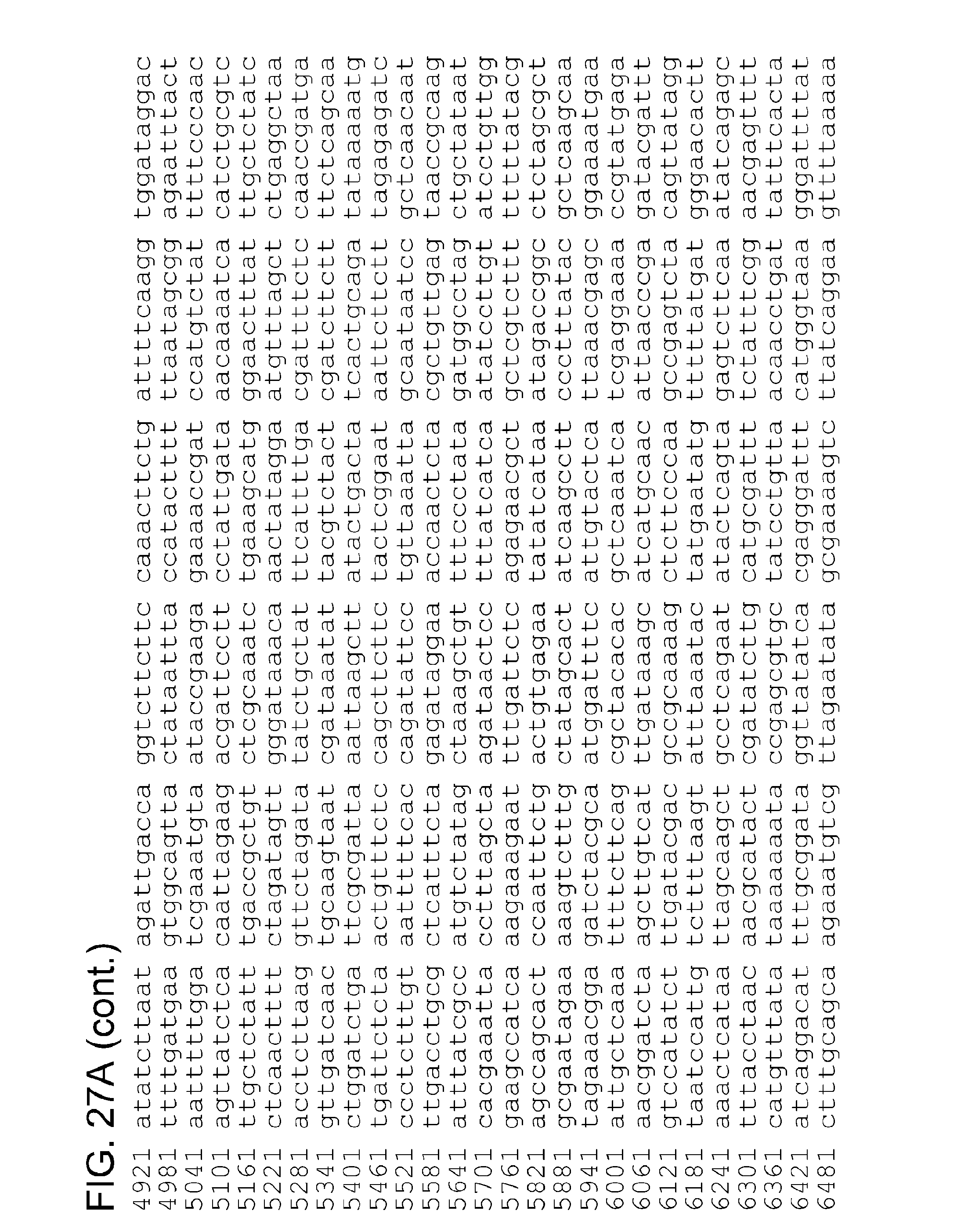
D00172

D00173

D00174

D00175

D00176

D00177

D00178

D00179

D00180

D00181

D00182

D00183
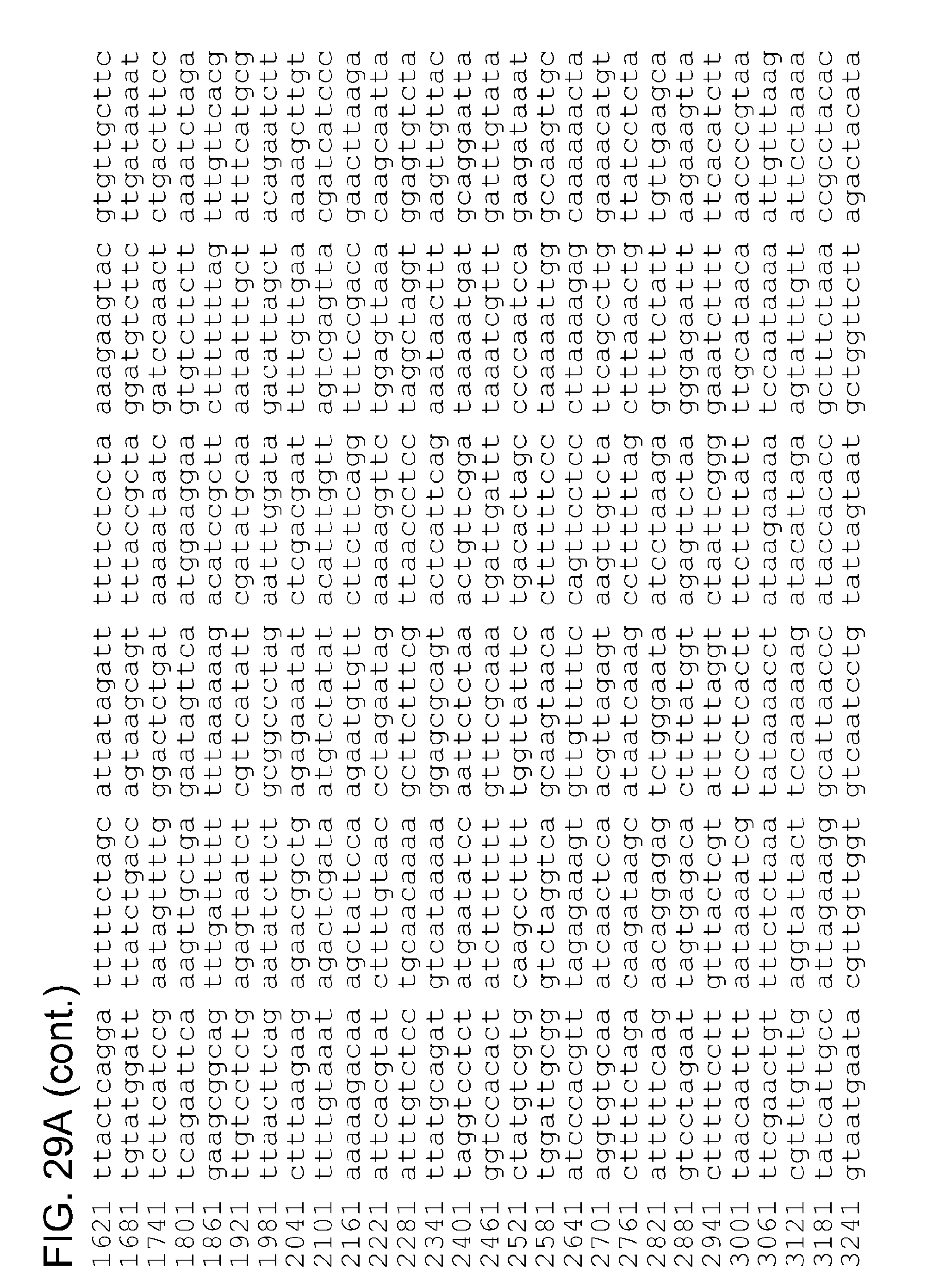
D00184

D00185
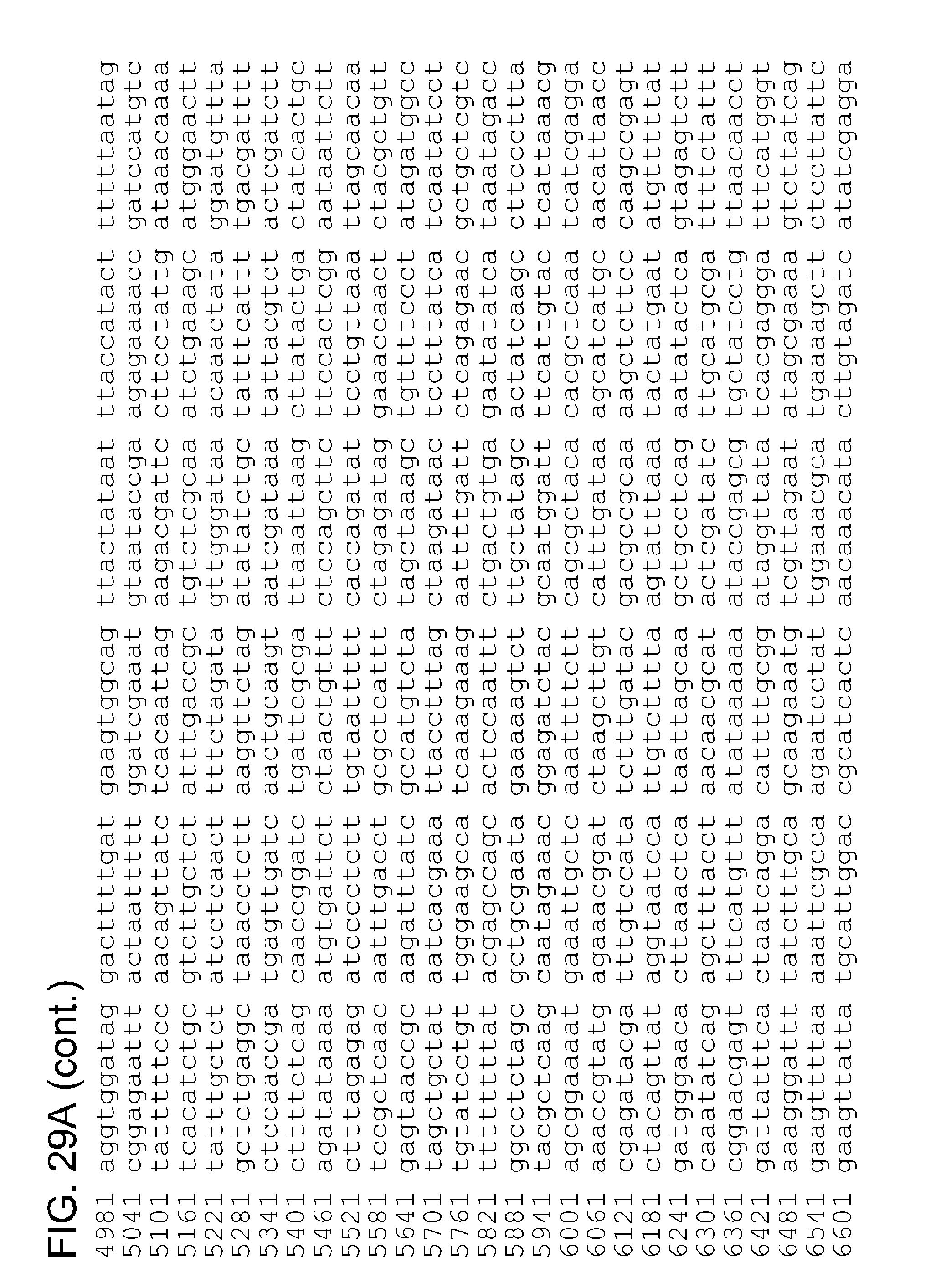
D00186

D00187

D00188

D00189

D00190

D00191

D00192

D00193

D00194

D00195
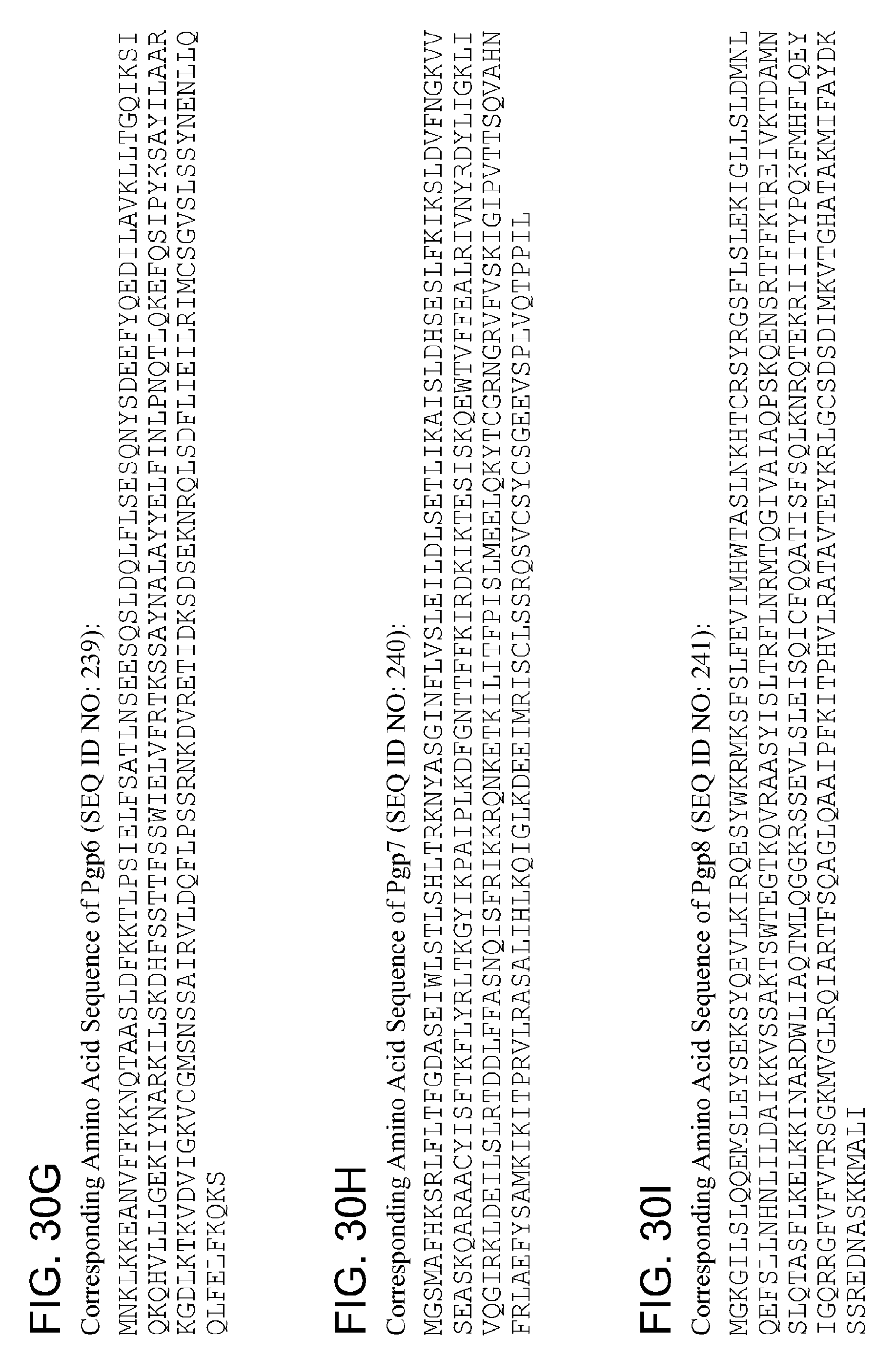
D00196

S00001
XML
uspto.report is an independent third-party trademark research tool that is not affiliated, endorsed, or sponsored by the United States Patent and Trademark Office (USPTO) or any other governmental organization. The information provided by uspto.report is based on publicly available data at the time of writing and is intended for informational purposes only.
While we strive to provide accurate and up-to-date information, we do not guarantee the accuracy, completeness, reliability, or suitability of the information displayed on this site. The use of this site is at your own risk. Any reliance you place on such information is therefore strictly at your own risk.
All official trademark data, including owner information, should be verified by visiting the official USPTO website at www.uspto.gov. This site is not intended to replace professional legal advice and should not be used as a substitute for consulting with a legal professional who is knowledgeable about trademark law.